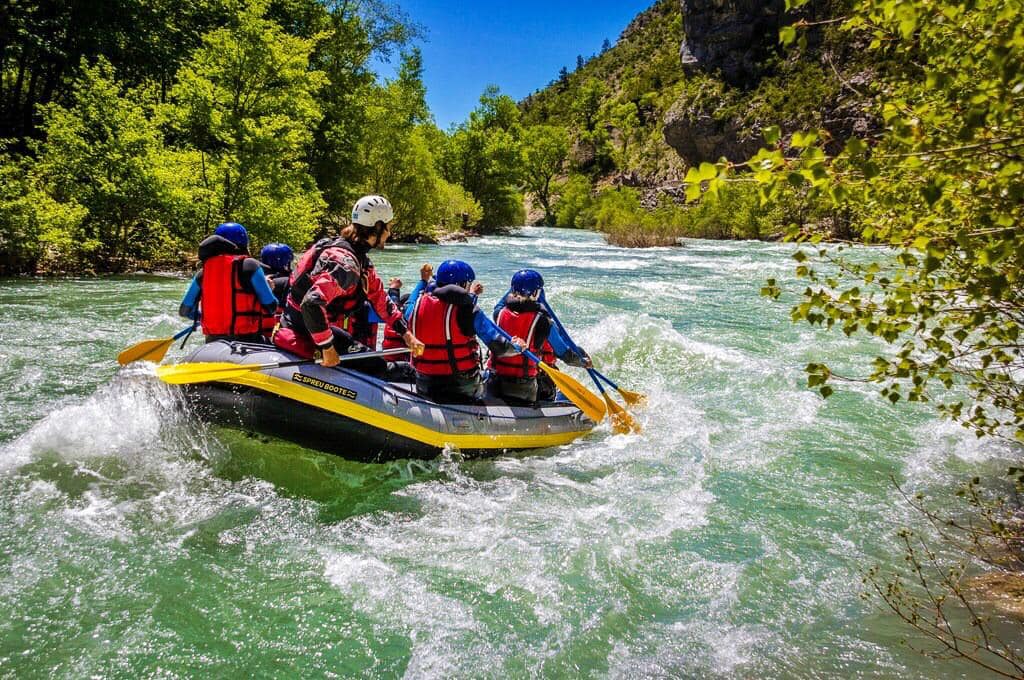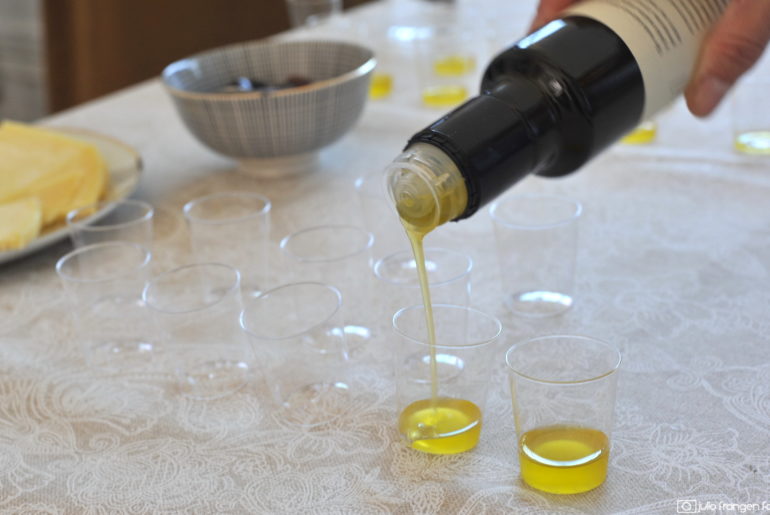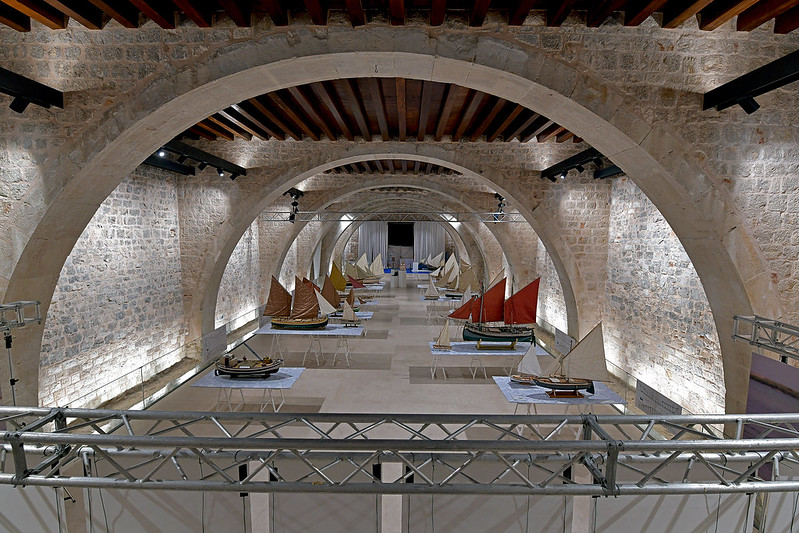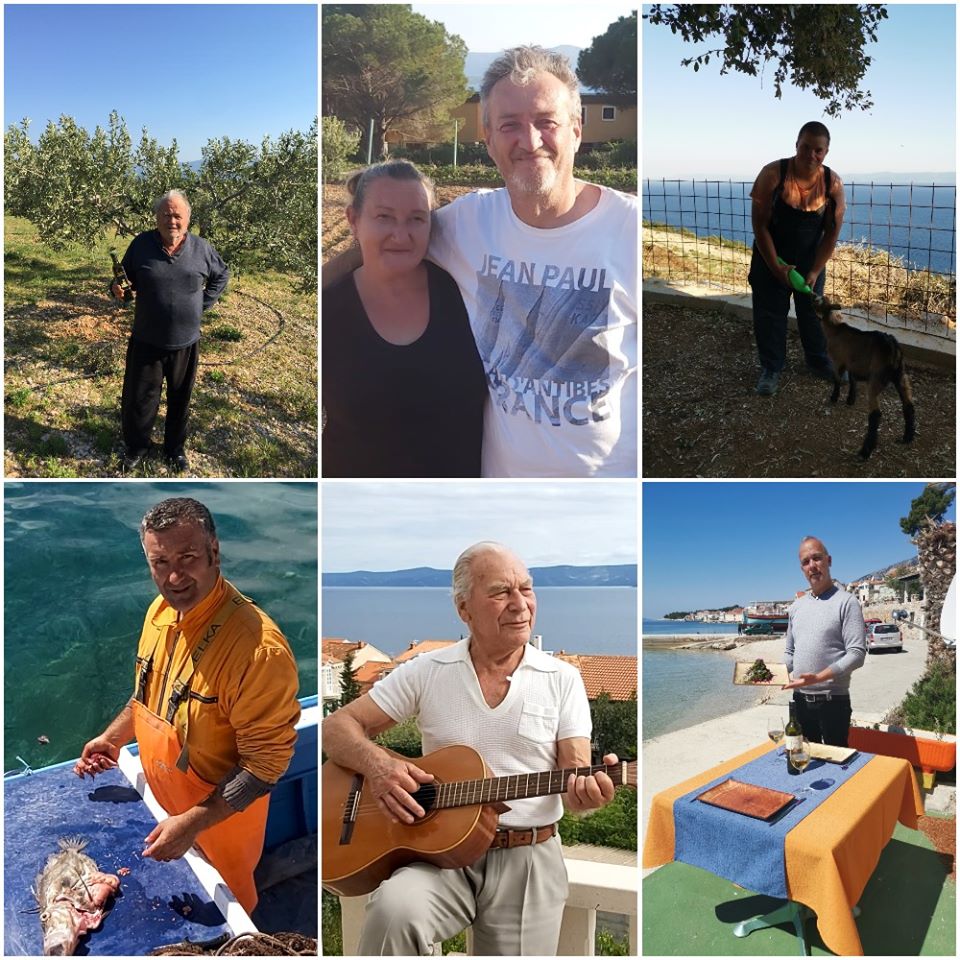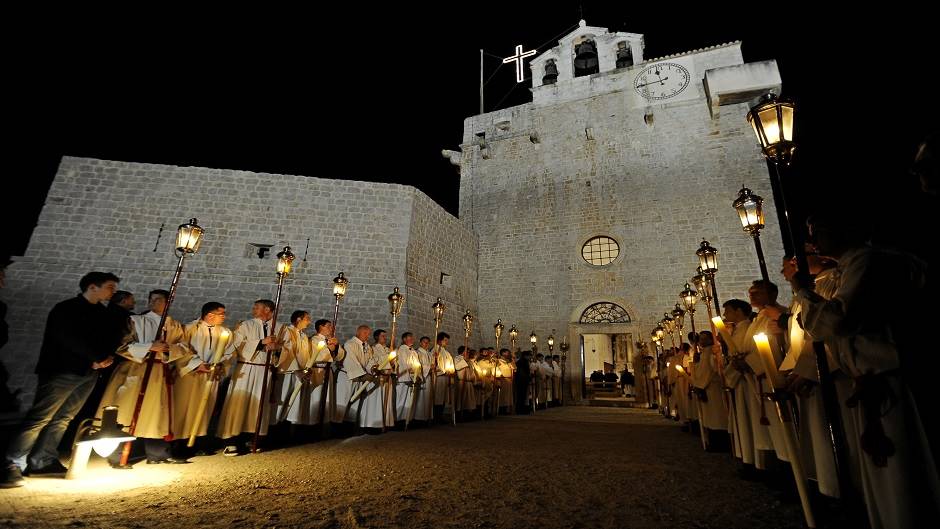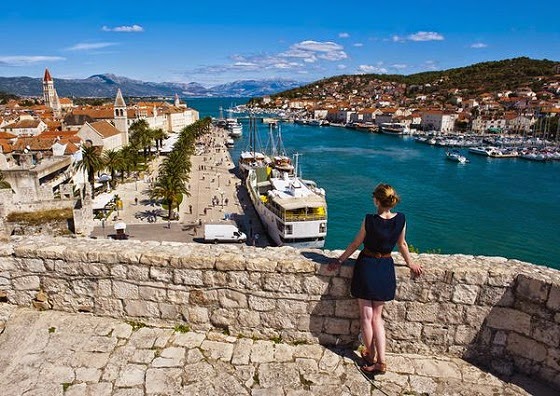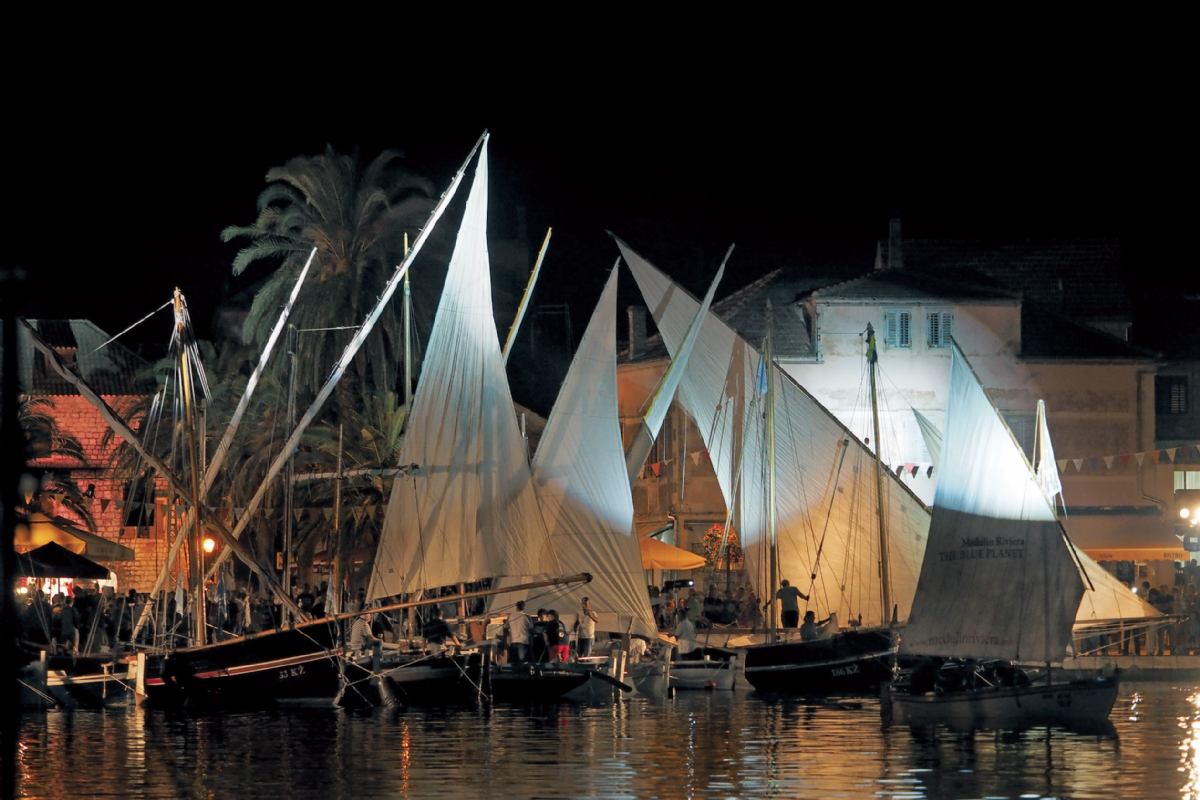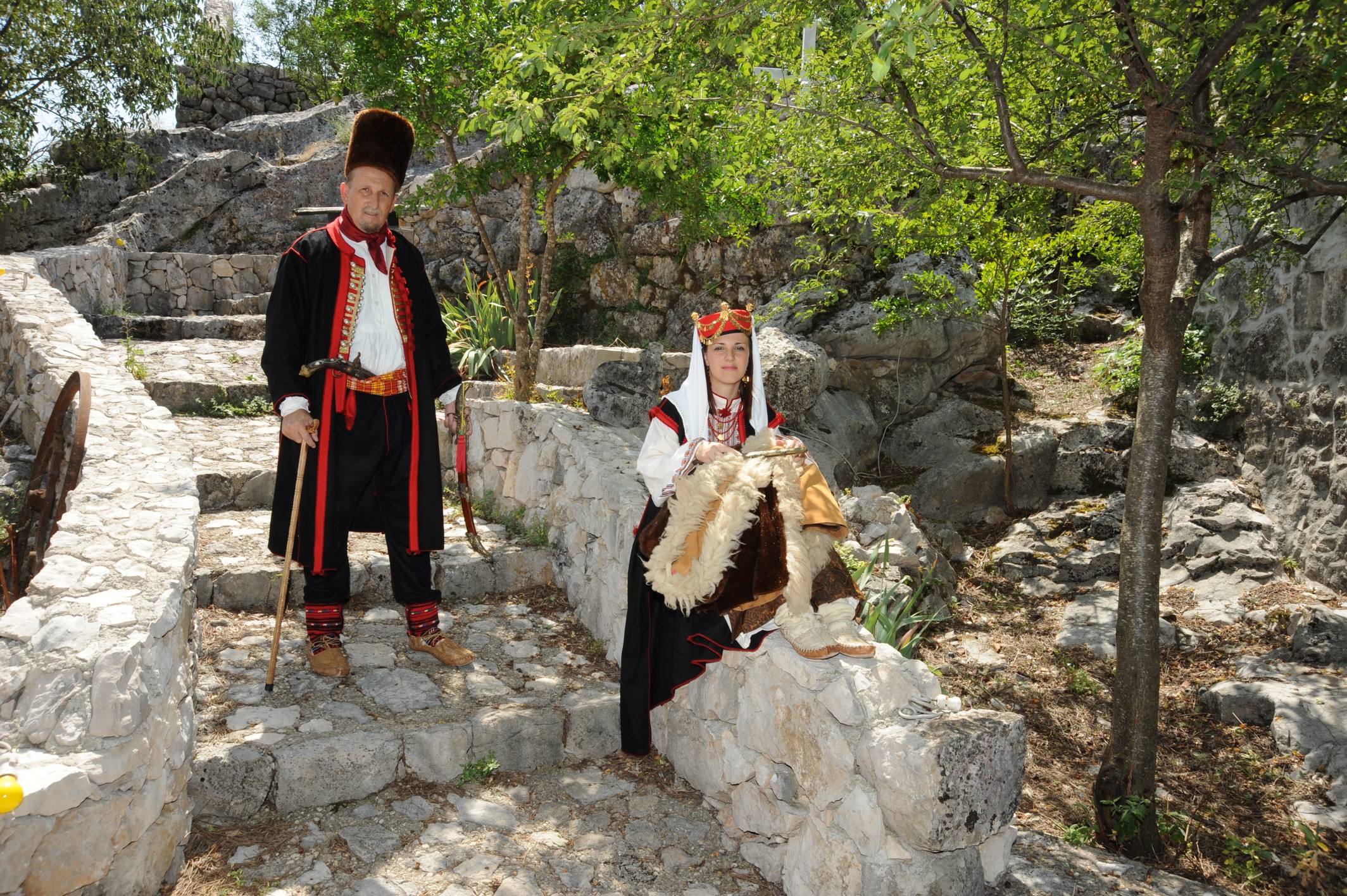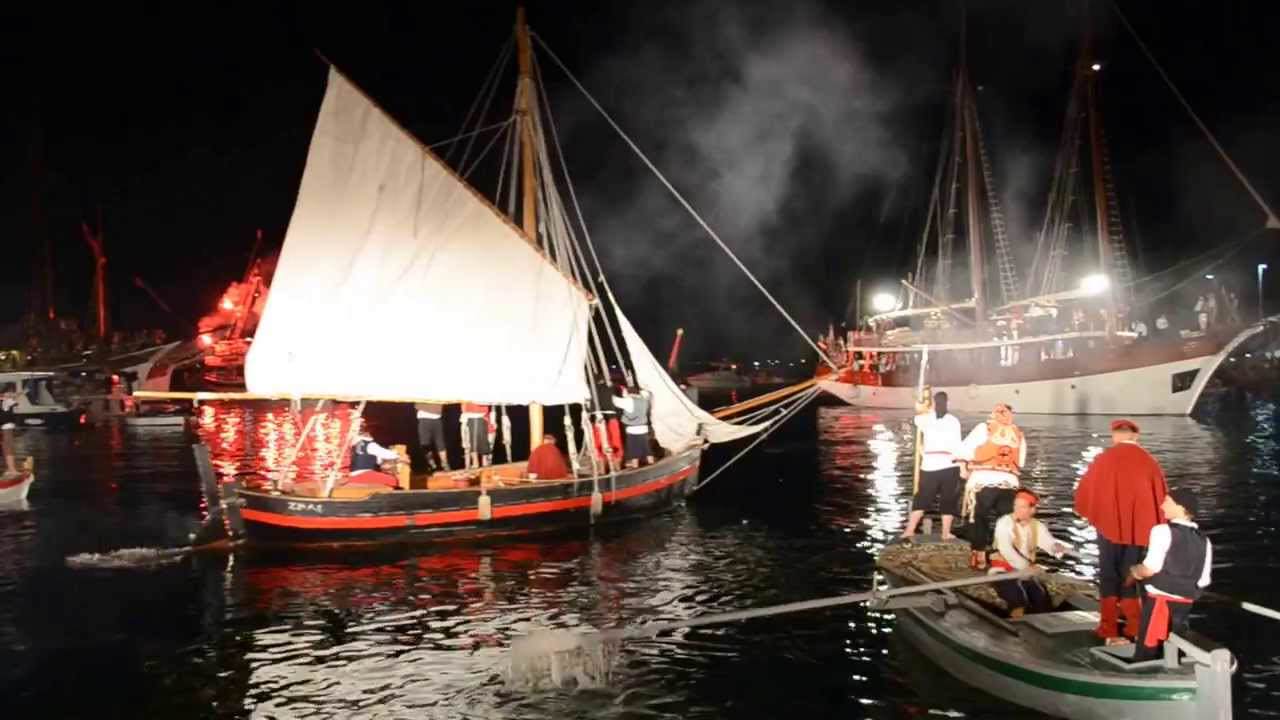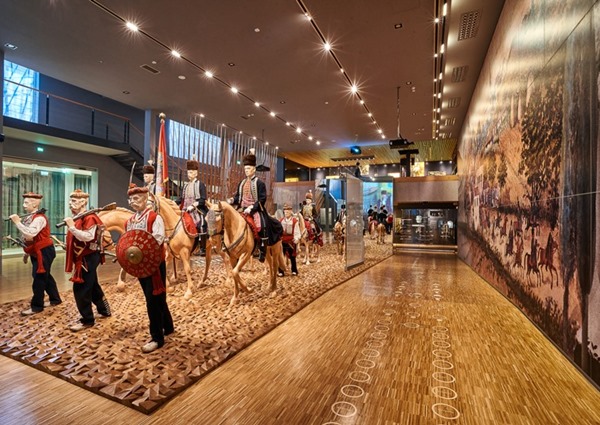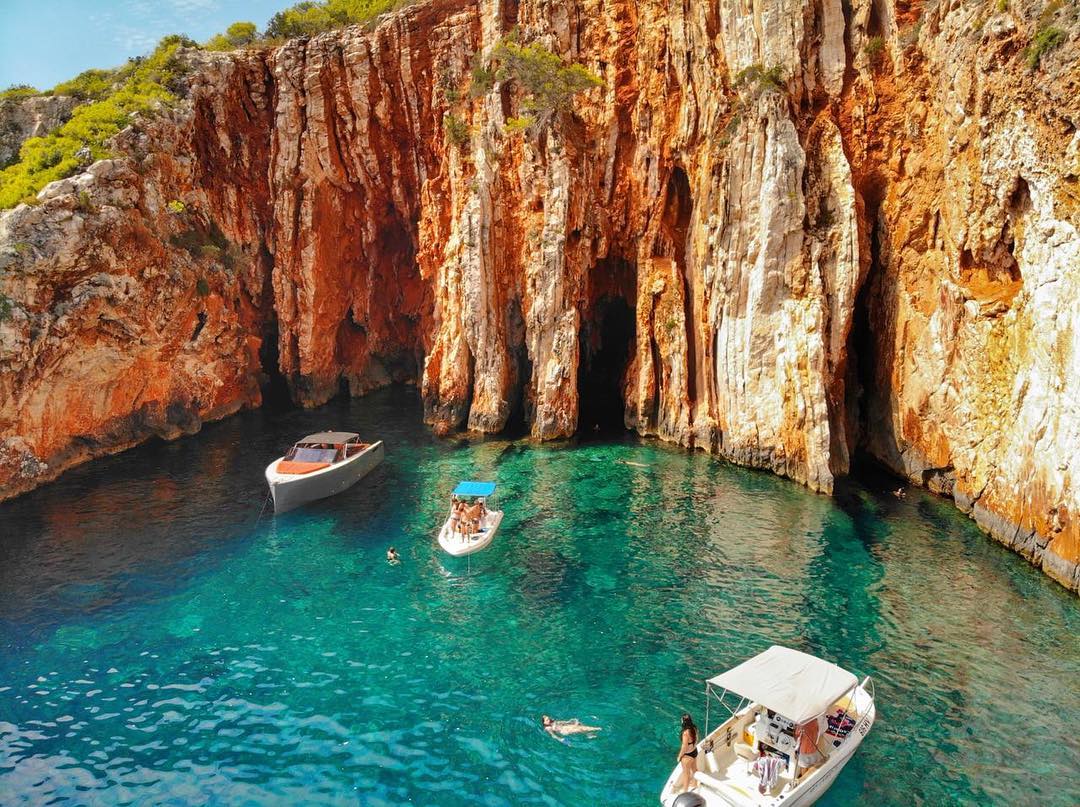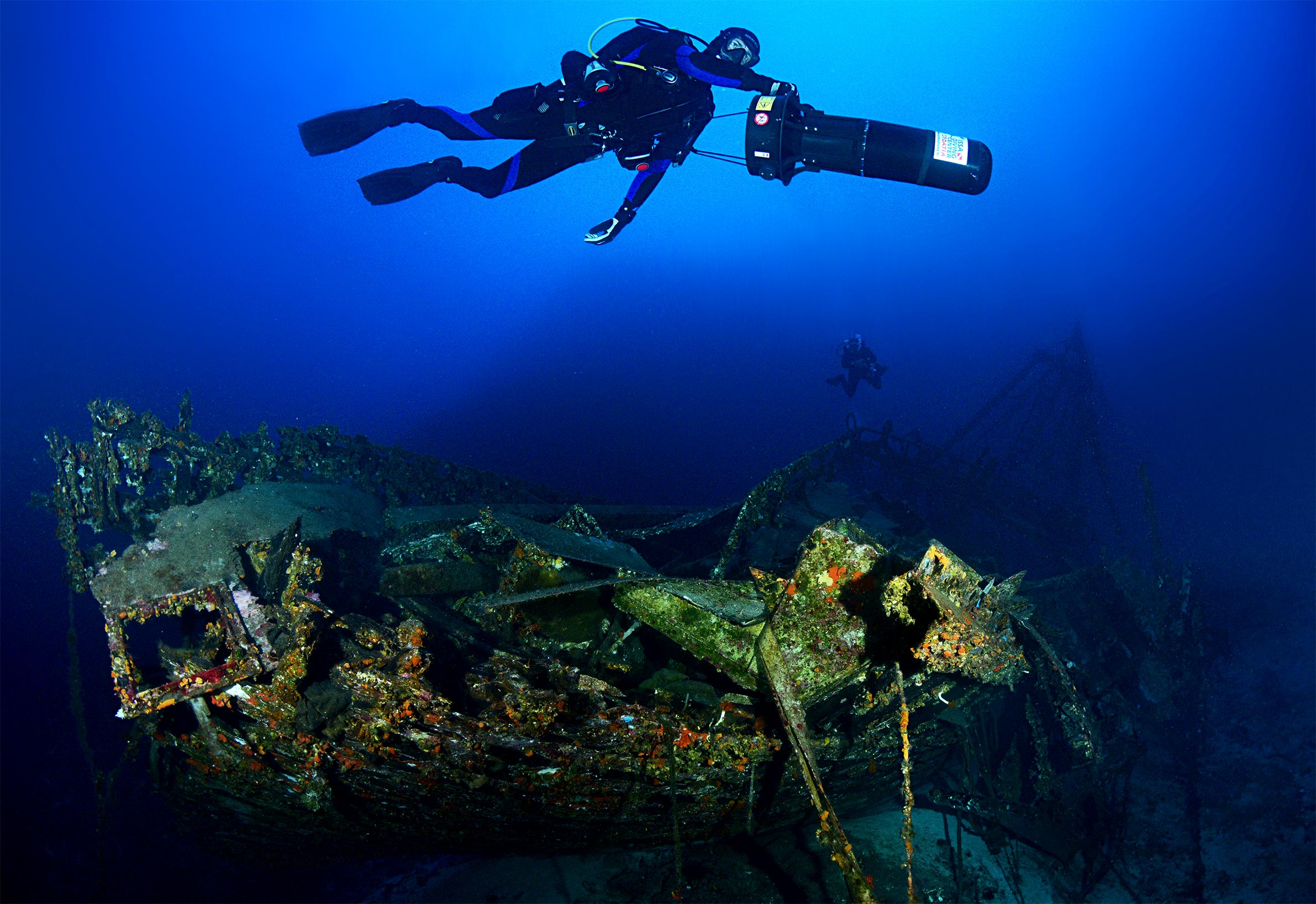Turn on summer! Use the opportunity, a holiday for the youth in Split has never been more attractive or favourable!
Come and see for yourself just how Dalmatia and Split have so much more to offer than sun and sea. Climb up to mountain peaks, surf the waves, explore the underwater world and experience the magic created by nature. Discover the beauty of living in good company and enjoying some unforgettable adventures…
When we look at the events that have happened to us throughout 2020 so far, it might occur to us to simply turn a few pages of this year’s book because we don’t like its content. The epidemic, the unemployment rate, not being able to go to school and college, quarantine, earthquakes, etc. These are all topics worthy of apocalyptic novels, they’re not so much the coveted light summer reading for relaxation.

The Student Centre in Split has made an effort to bring a ray of sunshine to these apocalyptic pages of the book and instruct us not to give up so easily when it comes to 2020, but to simply "turn the page of life’s book" into summer.

Okreninaljeto.com is an application from the Student Centre in Split for all those who want to capture some beautiful memories in 2020. The purpose of the page is described in the slogan "Breathe freedom, feel happiness, experience adventure", and these three things are what young people are longing for the most in 2020. For young people from Zagreb, Zagorje, Slavonia, Bosnia and Herzegovina, and other neighboring countries, summer in Split has never been closer and more accessible.
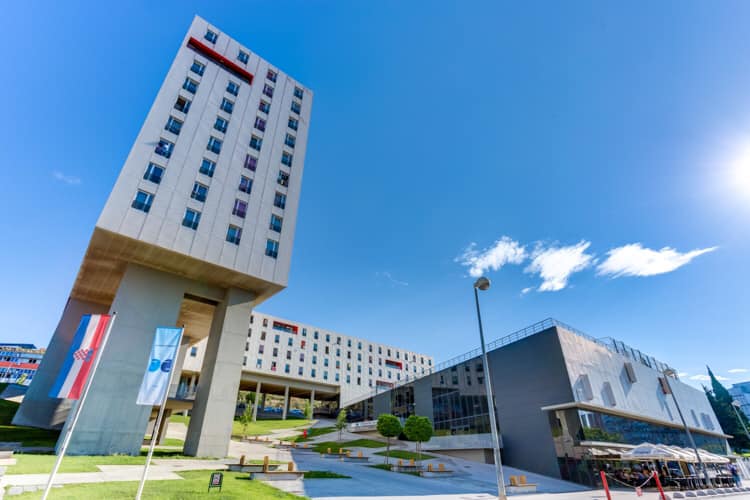
Accommodation is provided in two student hostels located on the Campus and on Spinut. These modernly decorated hostels are located close to the beaches. In order to have a carefree holiday, the Student Center has also made sure to provide daily room service.
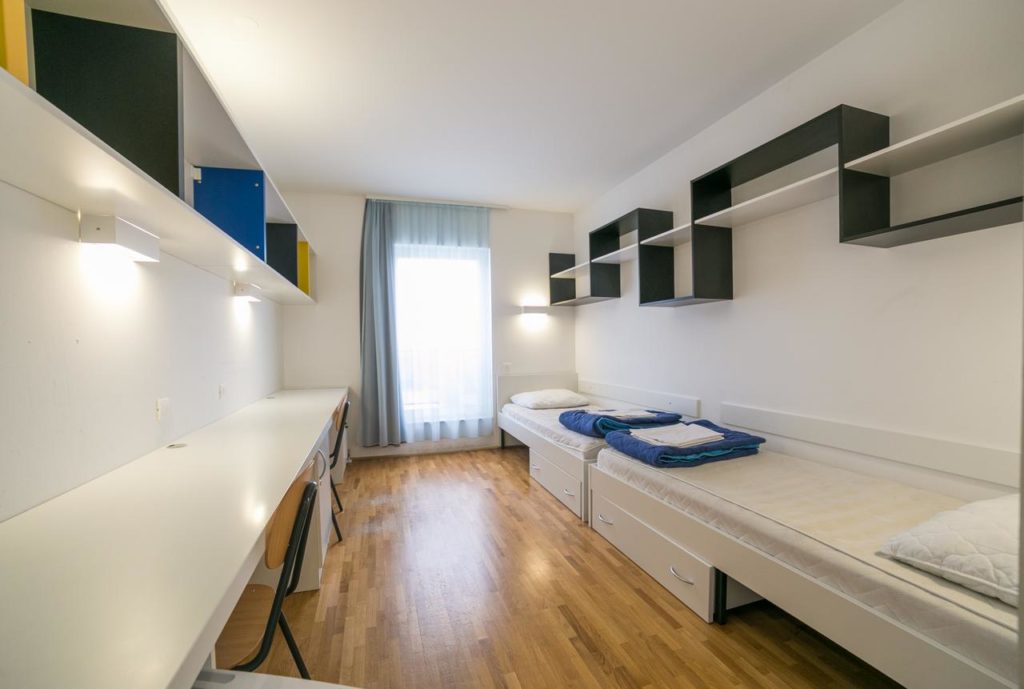
Each room has a private bathroom, and parking is provided. The hostel has sports fields, a gym and a sports hall. Guests can also use the lounge area with game consoles and laundry facilities.
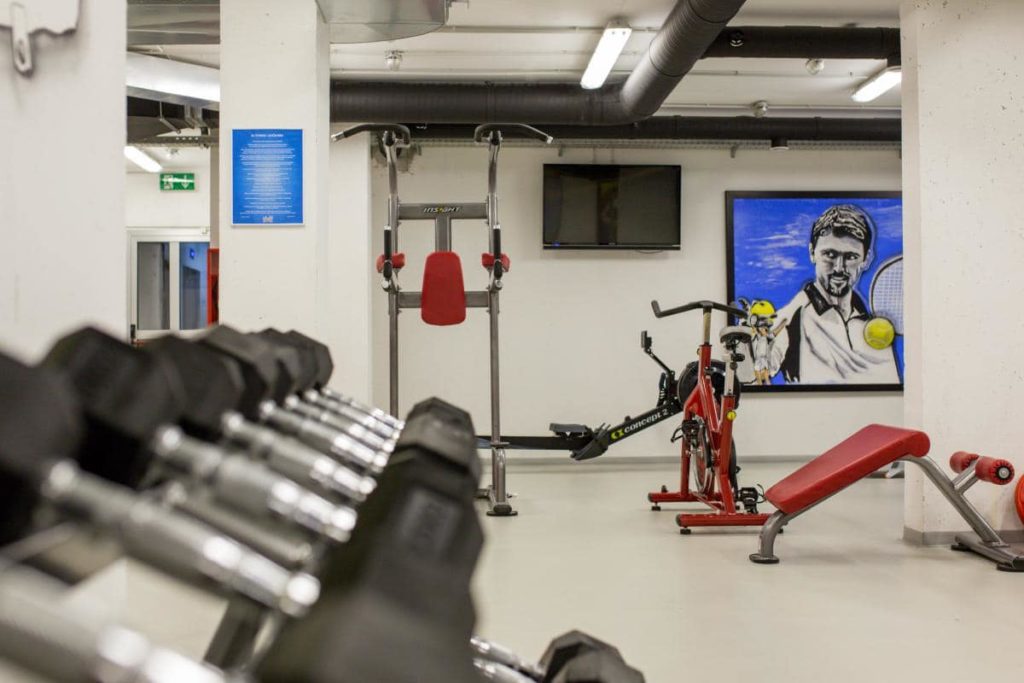
Inside the building, there is a coffee bar where you can find refreshment during the summer evenings. So, everything you need for an ideal summer vacation is right here.
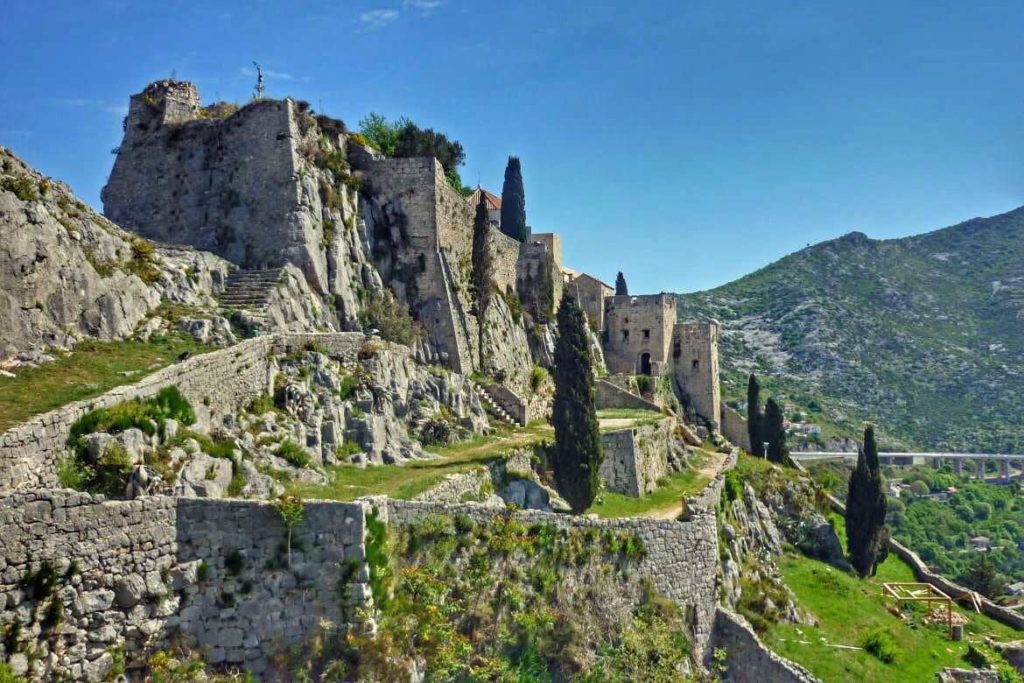
It only takes a few clicks on the page to make the right decision. In addition, in the application itself, you can find the answers to some logical questions that arise:

-How does one spend time creatively in Split?
-What natural and cultural sights are there to visit in Split and its surroundings?
- Where is the best place to have fun?
The prices are more than favourable, so for seven days in a double room, you'll pay 90 euros (680 hrk), and if you decide to go half board, the price will be 125 euros (942 hrk) for seven days.
It's time to turn towards a new page in life.
It's never too late to make great memories. Not even in 2020.

THE HOLIDAY OF YOUR DREAMS! New promotional video showcasing the beauty of Central Dalmatia launched!
The Split-Dalmatia County Tourist Board has launched a new communication concept - a promotional video called Central Dalmatia - A Dream Waiting For You
After months of dormancy and marketing inactivity, the Split-Dalmatia County Tourist Board has launched a promotional campaign aimed at the surrounding markets. The Split-Dalmatia County Tourist Board has been patiently waiting for the adequate conditions to be achieved, i.e. for a favourable epidemiological situation to be declared, and for the establishment of tourist traffic to begin.
The most prominent part of the promotional campaign is a new video, launched just a few days ago, aimed at targeted European markets, and designed by the Split-Dalmatia County Tourist Board to communicate with its millions of followers on social networks Facebook, Instagram, Twitter and other online platforms. Making a step forward in terms of marketing as we begin re-opening borders and establishing tourist traffic in these areas. Given the circumstances that have ensued across the world due to the COVID-19 pandemic and the almost complete cessation of tourist movement, this campaign wants to draw the attention of current and future tourists to the beauty of Central Dalmatia, the favourable epidemiological situation in this region, and the availability of travel.
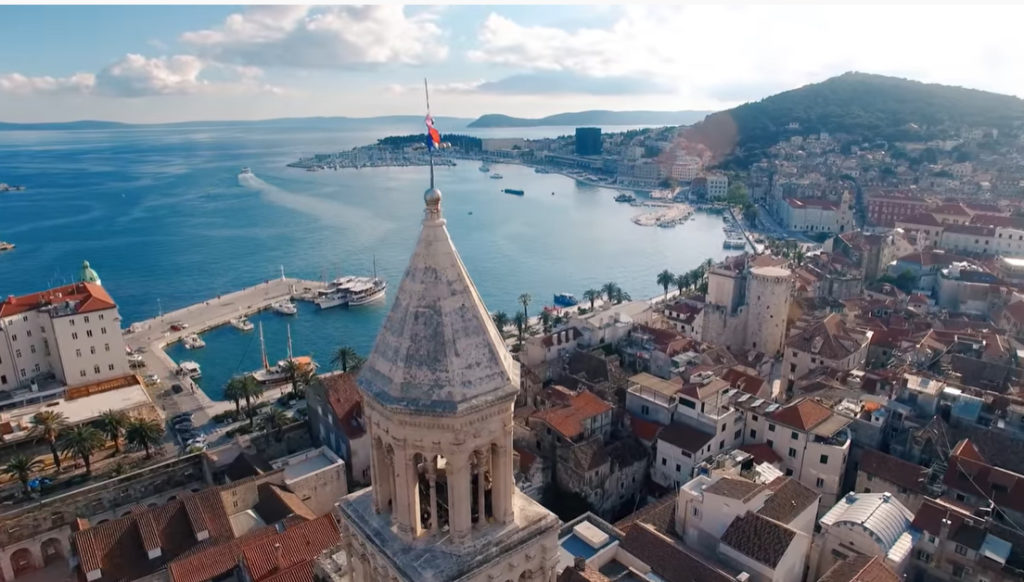
Central Dalmatia and all of its treasures, the beauty of its lakes, rivers, sea, beaches, bays, towns and islands are ready and waiting for guests to arrive. In Central Dalmatia there lie safe, preserved, coronavirus free locations which are full of hidden beauty and are always ready to reveal themselves to dear friends and guests. Central Dalmatia truly represents a treasure trove of feelings and a set of memories for those who have already been met with its beauty.
This is a dream that awaits all those who will meet Central Dalmatia for the very first time. Central Dalmatia is still here and is now ready for socialisation again, sending out an invitation for all who want to get a taste of a holiday which will never leave their minds and hearts. All of the above is why Central Dalmatia is inviting all those who want to experience real adventures on the journey of a lifetime, to come and get better acquainted with this area as the most special and indeed most diverse car destination. At every new corner, behind every bend in the road, and after exiting every tunnel, Central Dalmatia provides a new, most beautiful postcard.
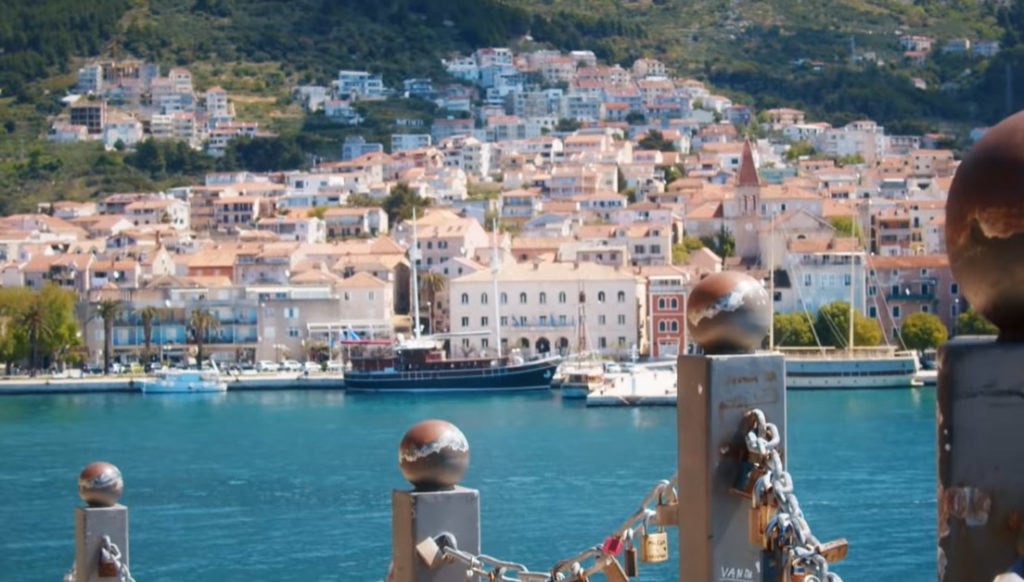
The Split-Dalmatia County Tourist Board has thus launched promotional campaigns aimed at the markets of Germany, Poland, Slovakia, the Czech Republic, Slovenia, Bosnia and Herzegovina and Austria. And this time, it’s turning towards all those who are ready to step into this new platform of Central Dalmatia’s tourist offer.
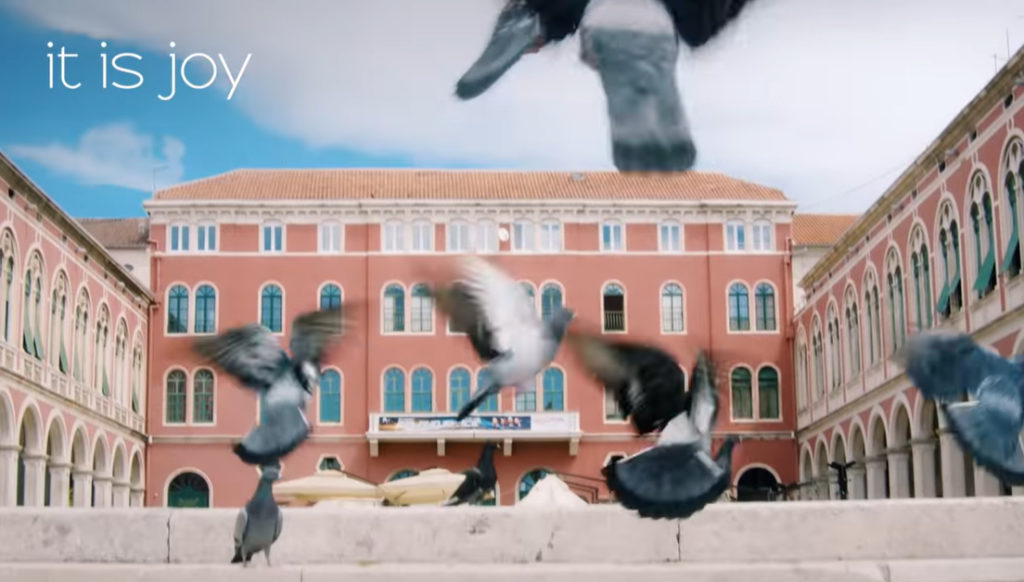
Those who do step into this new platform will be provided with a perfect holiday that they will never forget even in the post-coronavirus era. The platform suggests that people come and get better acquainted with the specialties Central Dalmatia offers as a car destination, which includes a wide variety of specifics. Because Central Dalmatia is more than just another tourist destination, one of those aforementioned specificities is the feeling of 100 percent freedom, and at the same time the most beautiful sense of harmony. It is an area where every friend and guest can feel all the treasures this area has to offer - all in one place.
’We are carefully monitoring the situation in the main emitting markets of Central Dalmatia, just as our hoteliers, caterers and hospitality workers, tourist camps, owners of family accommodation and the nautical tourism sector are all waiting for an agreement between the epidemiological and tourist professions which should enable the protection of human health and the realisation of the summer portion of this tourist year. But in the meantime, despite the modest funds available to the County Tourist Board under these circumstances, we have prepared promotional campaigns aimed at our traditional markets of Germany, Poland, Slovakia, the Czech Republic, Slovenia, Bosnia and Herzegovina and Austria. Through them, we will further promote Central Dalmatia as a destination to which one can drive. The most prominent part of the promotional campaign is the new video that was launched a few days ago, which is aimed at targeted European markets and represents a step forward in terms of marketing at this time when we’re starting to open borders again and establish tourist traffic in these areas,’’ says Joško Stella, director of the Split-Dalmatia County Tourist Board.

Through this way of getting better acquainted with the area, every new and previous guest in Central Dalmatia has the opportunity to get to know the connection between the past and the present, the gastronomy offered here, as well as get a taste of adrenaline, fun and relaxation. Through car tours, they will get to see Central Dalmatia’s UNESCO cities, Trogir and Split, drink coffee in Emperor Diocletian’s square, enjoy the healthiest Mediterranean food in the world, and watch kite surfers on the city’s beaches.

They will go to the Dalmatian hinterland, taste grilled trout from the rivers, and taste top-quality home-made wine from carefully looked-after vineyards. They will head south, to the famous beach in Bol, to Zlatni rat, and see this unique world phenomenon that changes shape as the wind blows with their own eyes.

They will swim in the crystal clear coves, enjoy the sea, which has never been more gentle and transparent, and then they will return to the coast again. They can then soar up high into the hills of Omis, to enjoy the lookout from the palms of their hands, and in its centre, in a city where honour and freedom were guarded by the famous Omis Pirates.
There, one can walk through the cobbled streets and head in the direction of the Makarska Riviera and choose which of the gorgeous beaches to descend down to. There, they will feel something that will never leave their heads again, some will feel the warmth of the soul of the place and its people, some will have the feeling of unique fun imprinted on their souls, and everyone will have a memory that will stay with them forever.
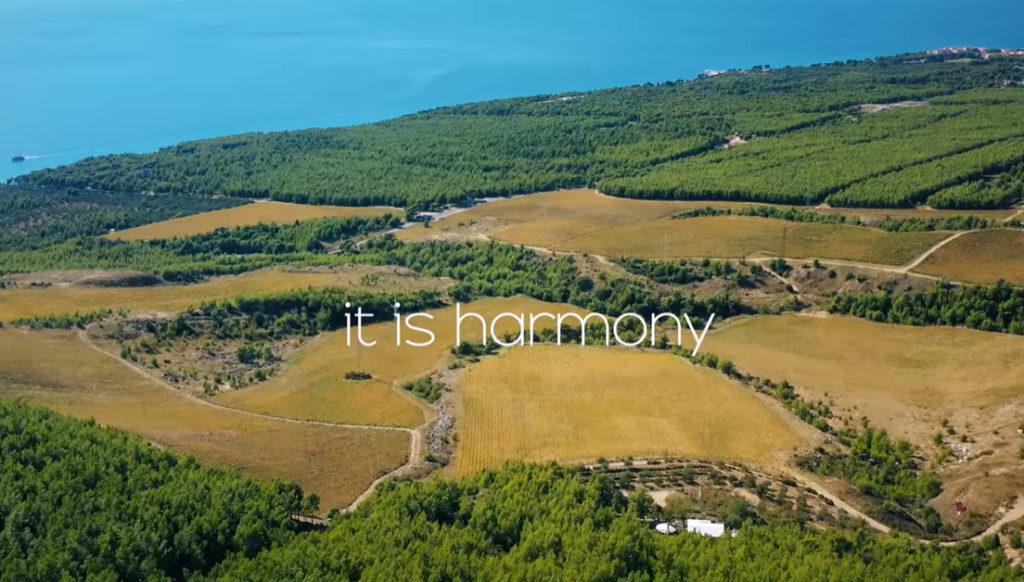
Because when Central Dalmatia invites you as a guest, then everyone who responds will start breathing with full lungs again. Come to Central Dalmatia to taste happiness.
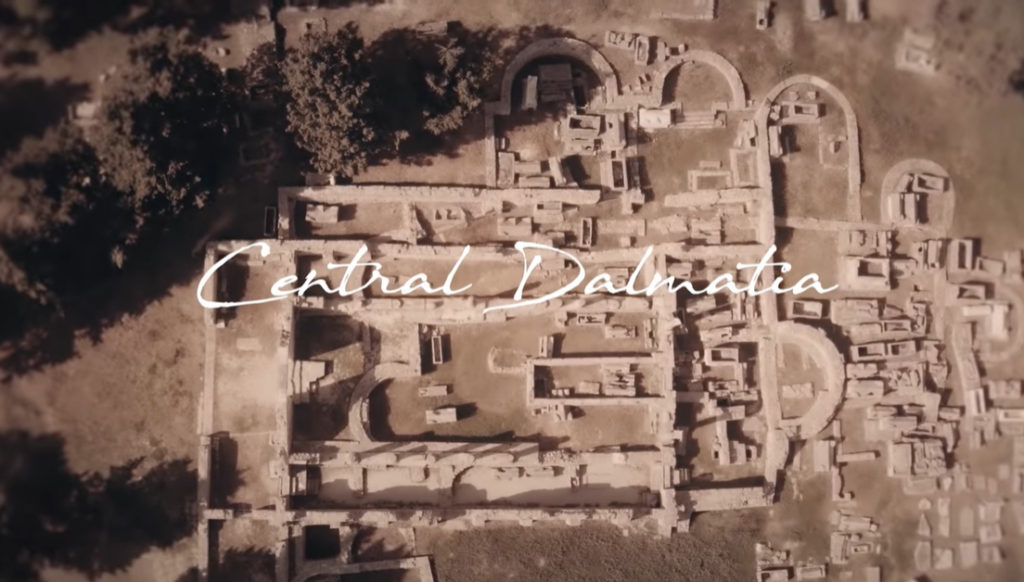
More: dalmatia.hr
Golden olive oil makers from Hvar pick up the most medals at the prestigious NYIOOC competition in New York!
Owing to its truly stunning natural beauty and rich history, the island of Hvar is often visited by tourists and recognised as one of the top destinations in which to spend a summer holiday.

However, a real little gastronomic scene takes place on the island of Hvar, and the most commonly used ingredient on this gorgeous island is certainly olive oil.
Practically since time began, groves full of beautiful dark purple olives have been being planted and formed in this area and until now, there has never been more of them, producing renowned olive oils which continuously earn the highest recognition possible. There are as many as 220,000 olive trees on the island of Hvar, which speaks volumes about the island of Hvar having grown into a real little olive-growing island region.

The most common olive variety is oblica, with a representation of 85 percent, followed by lastovka, levatinka and the somewhat newer varieties lećino and pandolino. The presence of more than 900 small and large olive oil producers says enough about the tradition of nurturing olives and its products. It is therefore not surprising that every dish on the island of Hvar is sprinkled with this liquid gold.
THE NEW YORK OLIVE OIL COMPETITION 2018: Istrian olive oils shone with all of their brilliance once again, and at this year's competition in New York - NYIOOC, Croatian olive oil producers picked up more gold and silver medals than olive oil producers from anywhere else in the world did.
In terms of the number of medals in this year's competition, the winners are, as expected, Italy and Spain. Of the 60 samples sent from Croatia, 34 of them won a gold or silver award, and the percentage of Croatian winners in this competition stands at an impressive 57 percent, making it the highest in the world.
The NYIOOC World Olive Oil Competition is otherwise the largest and most prestigious world competition for olive oil. The annual list of award winners is considered an authoritative guide to the best extra virgin olive oils of the year.
Of the 34 winners from Croatia, 10 percent of them come from the island of Hvar, namely: Božić uje, Eva Marija uje and Radojković uje.

1. ULJARA BOŽIĆ - SVIRČE D.O.O.
Božić olive oil is imbued with the tradition, diligence, love and expertise of their family. High standards and passion for food inspire them to produce olive oil which boasts an excellent taste, made from only the finest of ingredients. At this year's competition, the award went to Oblica olive oil, which is characterised by its distinct aroma and taste. This oil has a slightly spicy and bitter taste, with a pronounced and intense sweetness to it.
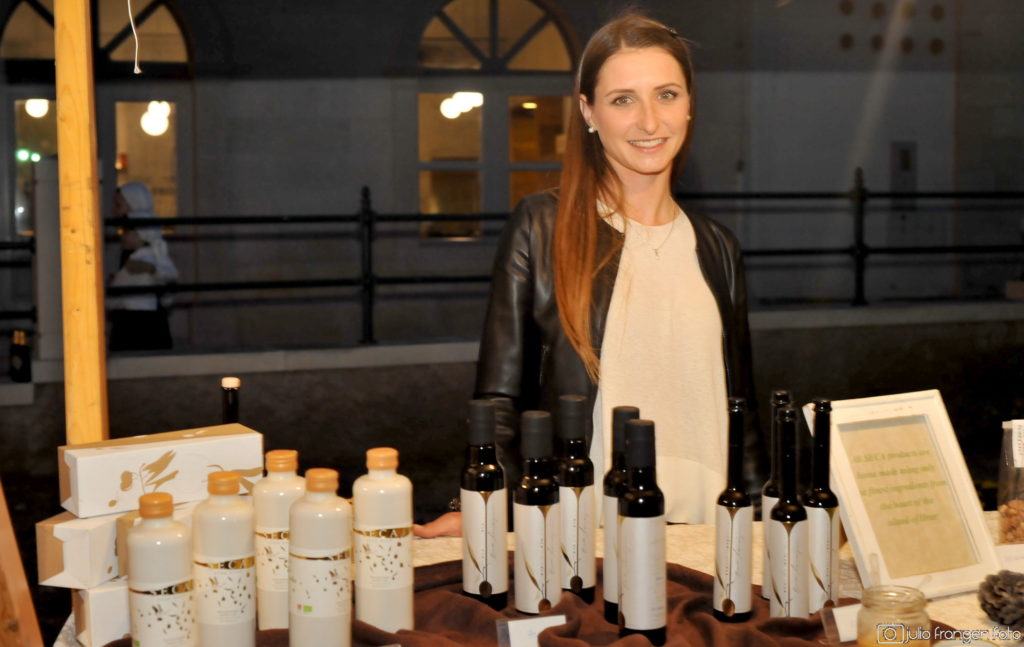
2. OPG ČURIN EVA MARIJA
The winning oil from Eva Marija, which is of the levatinka variety, has a medium intensity and fertility, with a feeling of green grass, apple and green almond. This oil also boasts traces of artichoke and chicory, with notes of black pepper and aromatic herbs such as rosemary, sage, and even mint. The bitterness of this particular olive oil is well defined and its sharpness is pronounced, and all of that is very balanced. OPG Eva Marija Čurin is located in the eastern part of the island of Hvar, close to Gdinj.

3. THE GARDEN OF EDEN (RAJSKI VRT) - RADOJKOVIĆ
The Garden of Eden was created out of love, and love is what this producer wants to permeate into every single little drop of olive oil that comes from the estate. The production is located in Bogomolje, a small village located on the eastern part of the island of Hvar, away from the crowds of summer tourists. The award-winning Levatinka olive oil was obtained exclusively from olives of the Levantinka variety. This variety provides a truly superior oil of moderate spiciness, also boasting the smell of fresh grass.
Last year on the island of Hvar, olive oil production was extremely fruitful, not only in the sheer amount of oil produced but also in terms of its top quality. Bravo to the Božić, OPG Eva Marija and Radojković oil producers.
Hvar's Arsenal - Winner of the European Heritage Awards/Europa Nostra Awards 2020.
EUROPE’S TOP HERITAGE AWARDS HONOUR 21 EXEMPLARY ACHIEVEMENTS FROM 15 COUNTRIES.
Ahead of the celebration of this year’s Europe Day (9 May), the European Commission and Europa Nostra are proud to announce the 2020 winners of the European Heritage Awards / Europa Nostra Awards. Europe’s top honour in the heritage field goes to 21 exemplary achievements from 15 European countries (for the full list see below).
This year’s impressive collection of award winners range from the restoration of Rubens’ garden pavilion in Antwerp (Belgium), to the revival of the renaissance arsenal on the island of Hvar (Croatia); from the trans-European network “Tramontana” dedicated to the research of the tangible and intangible heritage of mountainous regions, to the sensitive preservation of a cultural landscape formed by subterranean caves and wineries in the province of Burgos (Spain); from the rebirth of the impressive Basilica di Santa Maria di Collemaggio in l’Aquila (Italy), heavily damaged by the devastating earthquake of 2009, to the “Ambulance for Monuments” with an emergency team of craftspeople ready to save endangered heritage in Romania; and from “Scanning for Syria”, a research project carried out by a research centre in The Netherlands, to a major exhibition marking the 75th anniversary of the liberation of Auschwitz, organised in co-production between Poland and Spain.
Heritage lovers and supporters from Europe and all around the world can vote online for their favourite award winners and decide which achievement will win this year’s Public Choice Award. In times of confinement and physical distancing, the European Commission and Europa Nostra hope to inspire a particularly large number of people to discover this year’s award-winning achievements and to share the names of their three favourite winners. The Public Choice Award will be announced in the autumn of 2020. The winners of the Grand Prix, entitled to receive a monetary award of €10,000 each, will also be made public on this occasion.

“The COVID-19 crisis has made clear just how necessary culture and cultural heritage are to people and communities across Europe. At a moment where hundreds of millions of Europeans remain physically separated, our cultural heritage continues, more than ever, to bring people together. This year’s winners of the European Heritage Awards / Europa Nostra Awards are inspiring and powerful examples which truly contribute to a closer, more united and more resilient Europe,” said Mariya Gabriel, European Commissioner for Innovation, Research, Culture, Education and Youth.
“In these trying times, our award laureates, with their success stories of how adversity can be overcome through expertise, dedication and teamwork, are true messengers of hope. These exemplary awarded projects demonstrate that cultural heritage is vital to our mental and physical recovery from the trauma caused by the pandemic. Our shared heritage and its custodians can contribute in so many ways: from making accessible cultural content via creative digital solutions to undertaking concrete restoration and rehabilitation works as an act of social and economic rebirth for our cities and villages,” stated Hermann Parzinger, Executive President of Europa Nostra.
The European Heritage Awards / Europa Nostra Awards were launched by the European Commission in 2002 and have been run by Europa Nostra – the European Voice of Civil Society Committed to Cultural Heritage – ever since. The Awards have the support of the Creative Europe programme of the European Union.
The Award winners were selected by independent juries composed of heritage experts from across Europe, upon thorough evaluation of candidatures submitted by organisations and individuals from 30 European countries. The Juries also decided to give three Europa Nostra Awards to remarkable heritage achievements from European countries not taking part in the EU Creative Europe programme, namely Switzerland and Turkey.
In 2020, two new ILUCIDARE Special Prizes will also be awarded from among the submitted applications to the European Heritage Awards / Europa Nostra Awards. The ILUCIDARE Special Prizes will be announced on 28 May. ILUCIDARE is a project funded by Horizon 2020 with the aim of establishing an international network promoting heritage as a resource for innovation and international relations.
2020 Award Winners
(listed alphabetically by country)
Category Conservation
Rubens’ Garden Screen and Garden Pavilion, Antwerp, BELGIUM
Hvar’s Arsenal, CROATIA
Epitaphs of the University Church of Leipzig, GERMANY
The Museum of Fine Arts, Budapest, HUNGARY
Basilica of Santa Maria di Collemaggio, L’Aquila, ITALY
LocHal, Tilburg, THE NETHERLANDS
Subterranean Caves and Wineries of El Cotarro, province of Burgos, SPAIN
The Iron Bridge, Shropshire, UNITED KINGDOM
Category Research
Tramontana Network III, FRANCE/ITALY/POLAND/PORTUGAL/SPAIN
Turin Papyrus Online Platform (TPOP), ITALY
Scanning for Syria, THE NETHERLANDS
Dedicated Service
Education, Training and Awareness-Raising
Cross-border Collaboration for European Classical Music, CZECH REPUBLIC
Arolsen Archives Online, GERMANY
The Secret Life of a Palace, Gödöllő, HUNGARY
Uccu Roma Informal Educational Foundation, HUNGARY
Auschwitz. Not long ago. Not far away, POLAND/SPAIN
The Ambulance for Monuments, ROMANIA
Europa Nostra Awards go to three remarkable heritage achievements from European countries not taking part in the EU Creative Europe programme.
Category Conservation
Manor Farm of Bois de Chênes, SWITZERLAND
Category Dedicated Service
Société de Lecture, Geneva, SWITZERLAND
Education, Training and Awareness-raising
SARAT – Safeguarding Archaeological Assets of Turkey, TURKEY
The Call for Entries for the 2021 edition of the Awards is now open and the application forms are available on the Awards website. Submit your exemplary project and share your expertise and success!
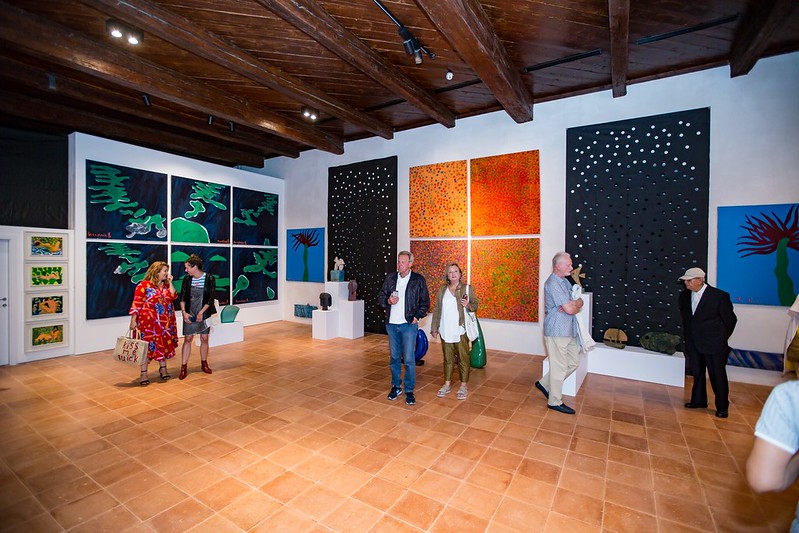
Hvar’s Arsenal
May 07, 2020 | Conservation | Croatia | Hvar
The Arsenal building, centrally located in the town of Hvar, the most important harbour of the island, has been carefully restored and successfully transformed into a vibrant cultural centre for visitors and the local community alike. The Croatian Ministry of Culture and the Ministry of Regional Development were partners to Grad Hvar in the 30-year project to rehabilitate Hvar’s Arsenal. The project was funded by the Hvar municipality, the Ministry of Culture, the Ministry of Regional Development and Split – Dalmatia County with additional funds coming from civil associations and the European Regional Development Fund.

The construction of the medieval Arsenal began in the 13th century. Archaeological finds indicate that it was used as an arsenal since the 3rd-4th centuries AD. It was not until the early-17th century that the building achieved its present appearance, comprising a boatyard on the ground floor with a theatre and arsenal storage on the upper floor, which was adapted to a gallery and reception room.
The extremely demanding project to rehabilitate the Arsenal included documentation, research studies and a conservation report (1989-2005); the reconstruction of the load bearing structure (2005-2009); archaeological excavations (1994-1996 and 2014-2015); phases of reconstruction and renovation (2014-2018); and concluding work on the interior of the building, including updates to the theatre, gallery and reception room (2018-2019).
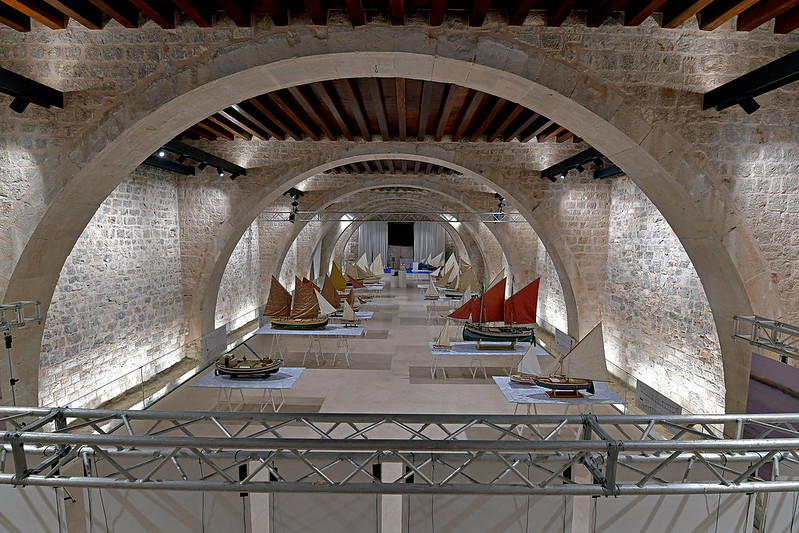
The ground floor space has retained its original character with exposed stone walls and arches while new multi-purpose facilities have been installed, providing Hvar’s citizens with a venue to host a wide range of cultural and social events. The original Venetian wooden beams are still present on the ceiling of the gallery on the first floor while some other original features of the building, most notably the frescoes and theatre boxes have been kept and restored to their original form.
The necessary new additions to the building were designed in a contemporary style, thus emphasising the original character of the building. These new components to the building’s historical layers have successfully evoked a dramatic meeting of old and new.
The Jury noted that “this respectful revitalisation project has adapted a very significant building to the modern needs of the community and adds a new cultural dimension to the tourism of the area. It represents a long-term effort to ensure the preservation of the Arsenal, a site of high heritage value. The stratification of the 16th-century building and the later 18th-century theatre has been properly recognised in the conservation works. These sites are evidence of a long history of international trade in Europe and are significantly located in the harbour area where they continue to play an important role as a place of connection”.
More information
www.hvar.hr

Stories from Bol are travelling the world!
Would you like to find out more about organically grown products that you can eat in Bol on the island Brač or where to buy locally produced goat products and extra-virgin olive oil? Maybe you are interested in finding a fisher monger selling freshly caught fish or restaurants where you can enjoy local specialities prepared with wild herbs? Or perhaps you would like to get lost in the sweetest daydreaming while listening to the beautiful sounds of the guitar?
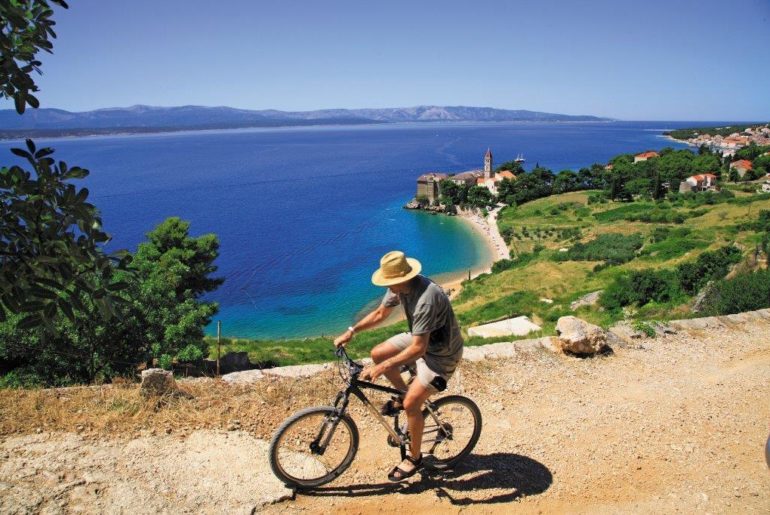
Our stories from Bol, a new project by the Bol Tourist Board (TZ Bol), will tell you all. With an idea to emphasize the unity in the local community, their mutual support, and the importance of the local population with tourism written in their DNA, TZ Bol has brought the locals together to send a simple message “See you in Bol!”,to all those who have already visited this beautiful town, as well as to future visitors of this delightful and scenic town located in the south of the island of Brač.
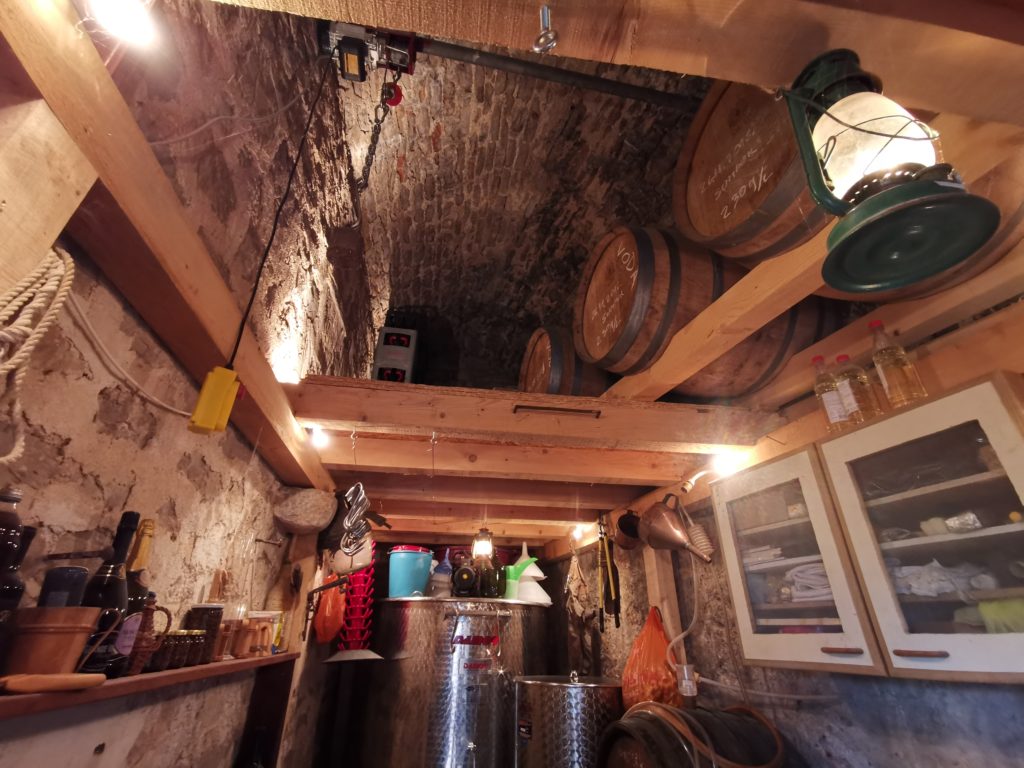
They wish to share first-hand stories with their guests, stories that cannot be found in magazines, about irresistible tastes and scents of local food and products, about wild plants and herbs, and about an authentic experience of this town in all its beauty.
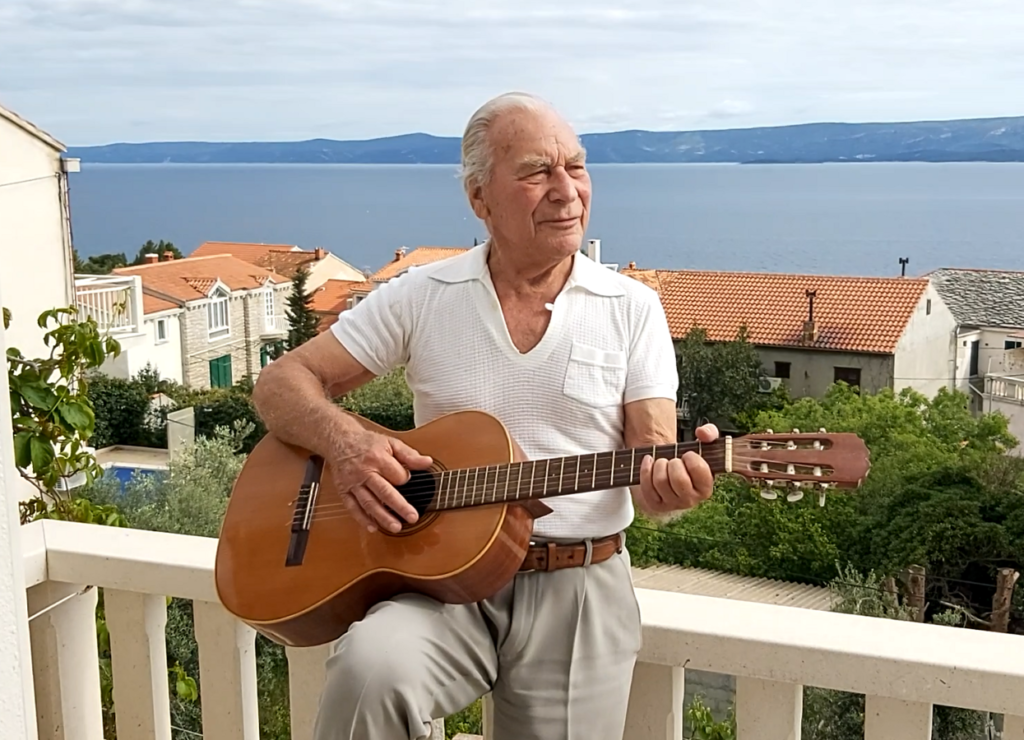
And here we do not only refer to the famous Dominican monastery from which you can enjoy a scenic walk to one of the most beautiful beaches in the world, Zlatni rat, or attractive biking trails, but also to the generations of dedicated people that make this small town so charming.
In the perfectly imperfect video clips and photographs, Franci Marinković from the Pusa restaurant shares his story.
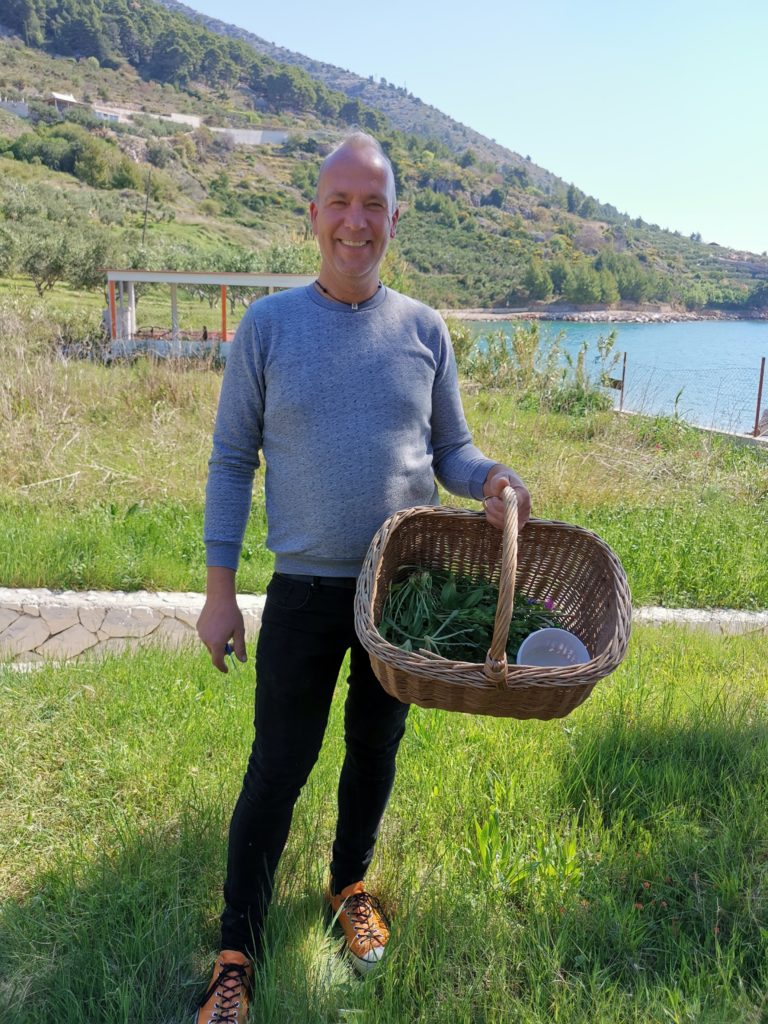
Apart from the adored specialties with wild herbs, he always enchants his guests with singing and guitar playing.
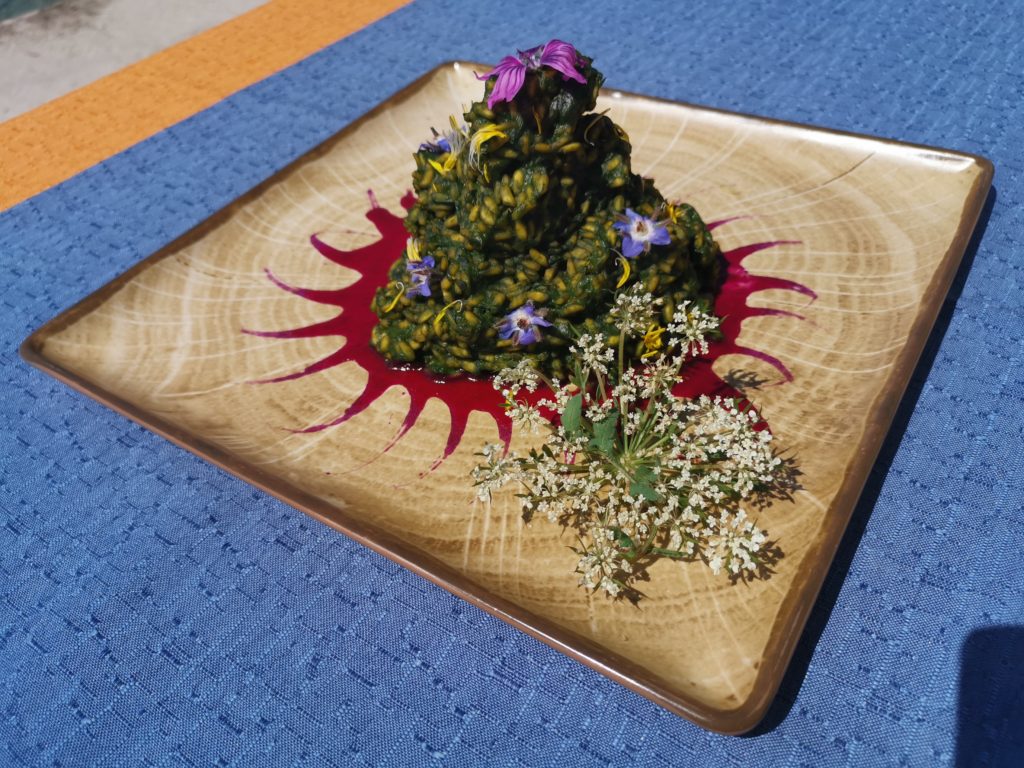
For almost ten years, Meri Bodlović and her husband are dedicated to organic farming, and olive and wine growing on their family farm.
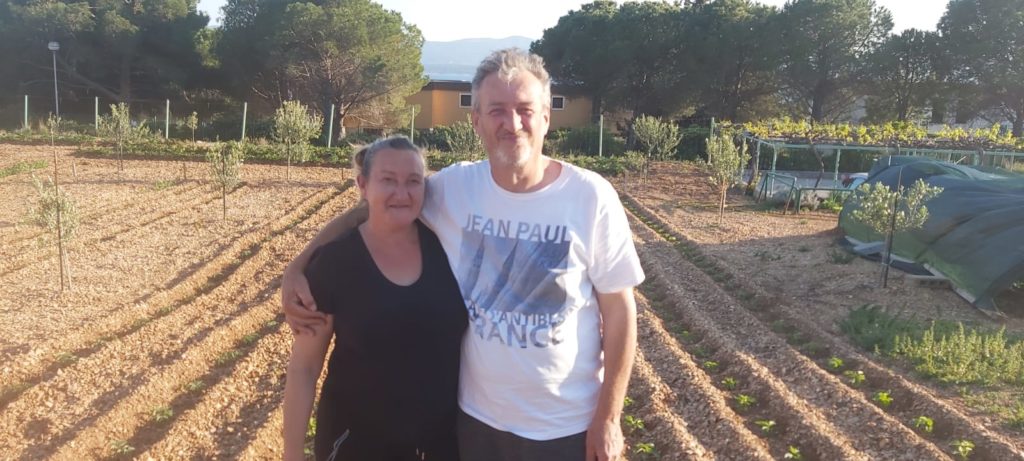
Mirjan and his Mom, Irena, are successfully combining farming, production, and catering.
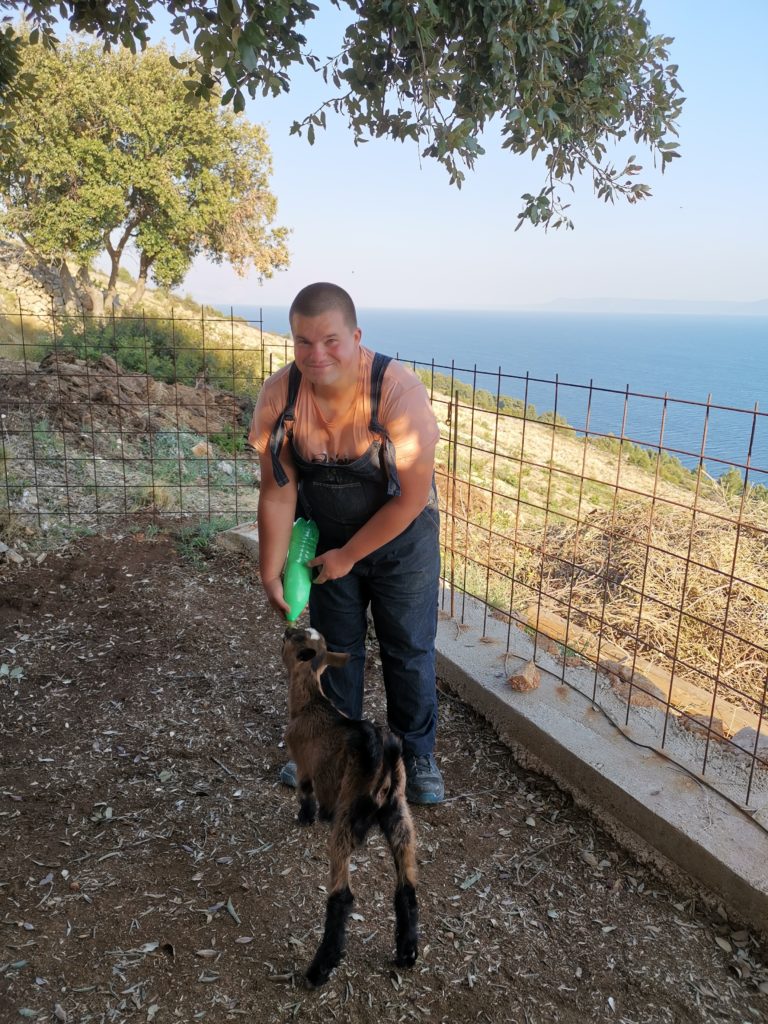
Their specialty, Cheese in sugar, can be tasted at their tavern Dišpet.
Nikica Bodlović from the Bodlović family farm proudly talks about olives and their family olive grove with 250 olive trees and golden drops of their extra-virgin olive oil.

Pravdan Katić, a professional fisherman with 15 years of experience, enthusiastically talks about his job. While playing the guitar, a favourite summer instrument, Pjerin Jugović sings and plays the same way he used to many years ago to attract tourists.
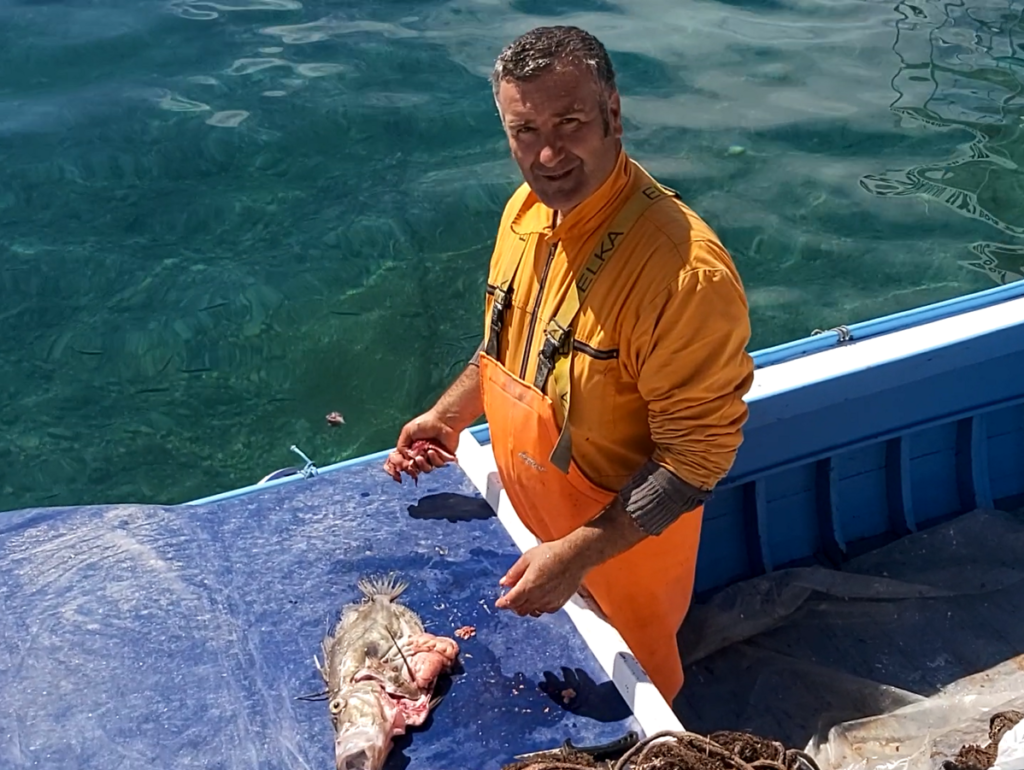
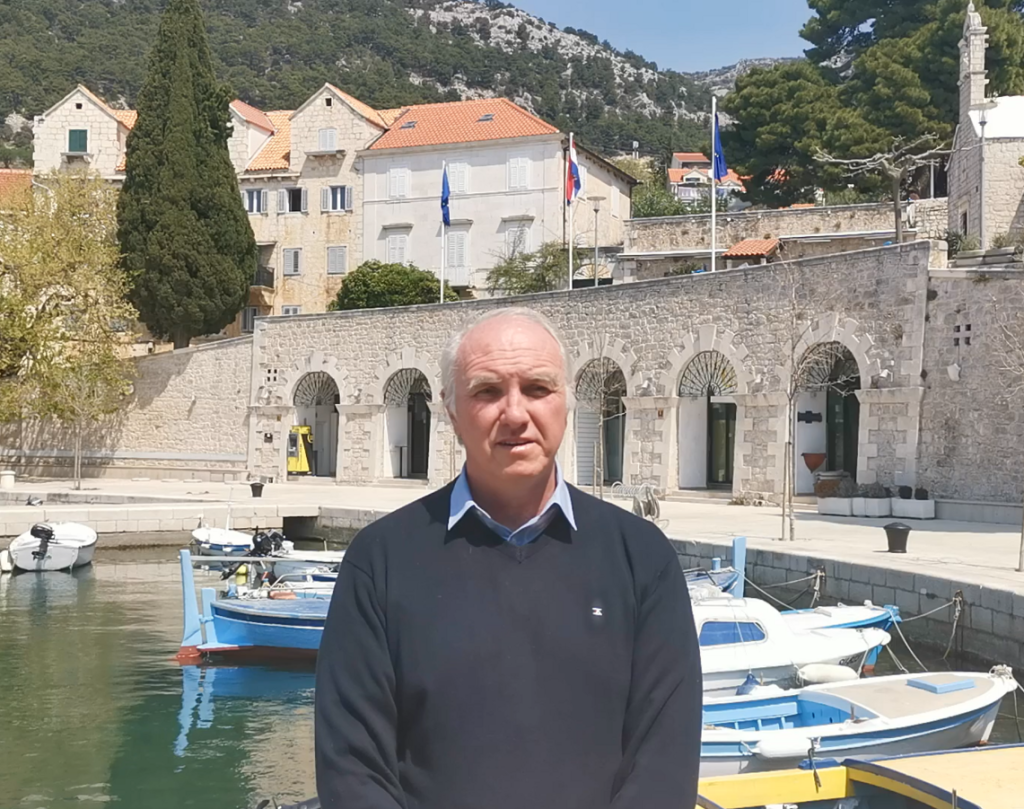
The director of the Bol Tourist Board, Markito Marinković remarks: “This project aims to engage the local population in active promotion of their town. We would like to introduce our guests to people that will be there for them during their stay in Bol. I believe that this is a winning formula because who can tell the stories of Bol better than its people? This is also an opportunity for Bolke and Boljani to actively participate with their suggestions and engagement in the joint promotion of our Bol.”
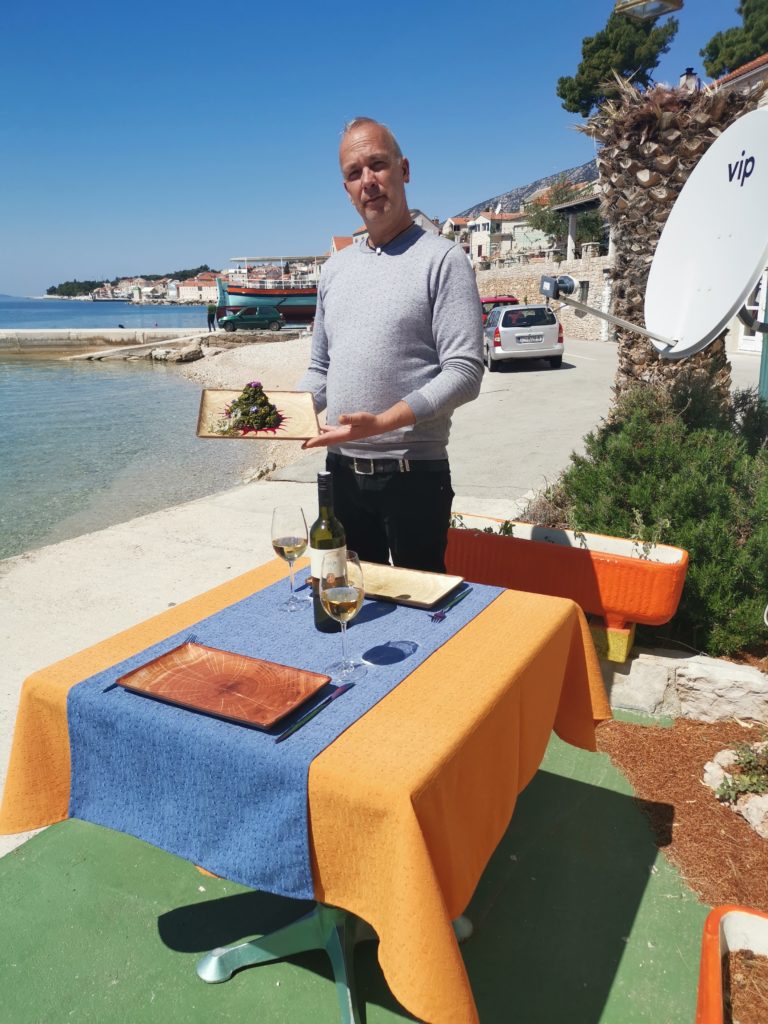
This is just the beginning of the TZ Bol narrative that will present accounts of their citizens and positive local experiences over social media, IG and FB: Bol - Bol - Symbol of the Adriatic, in the following months.
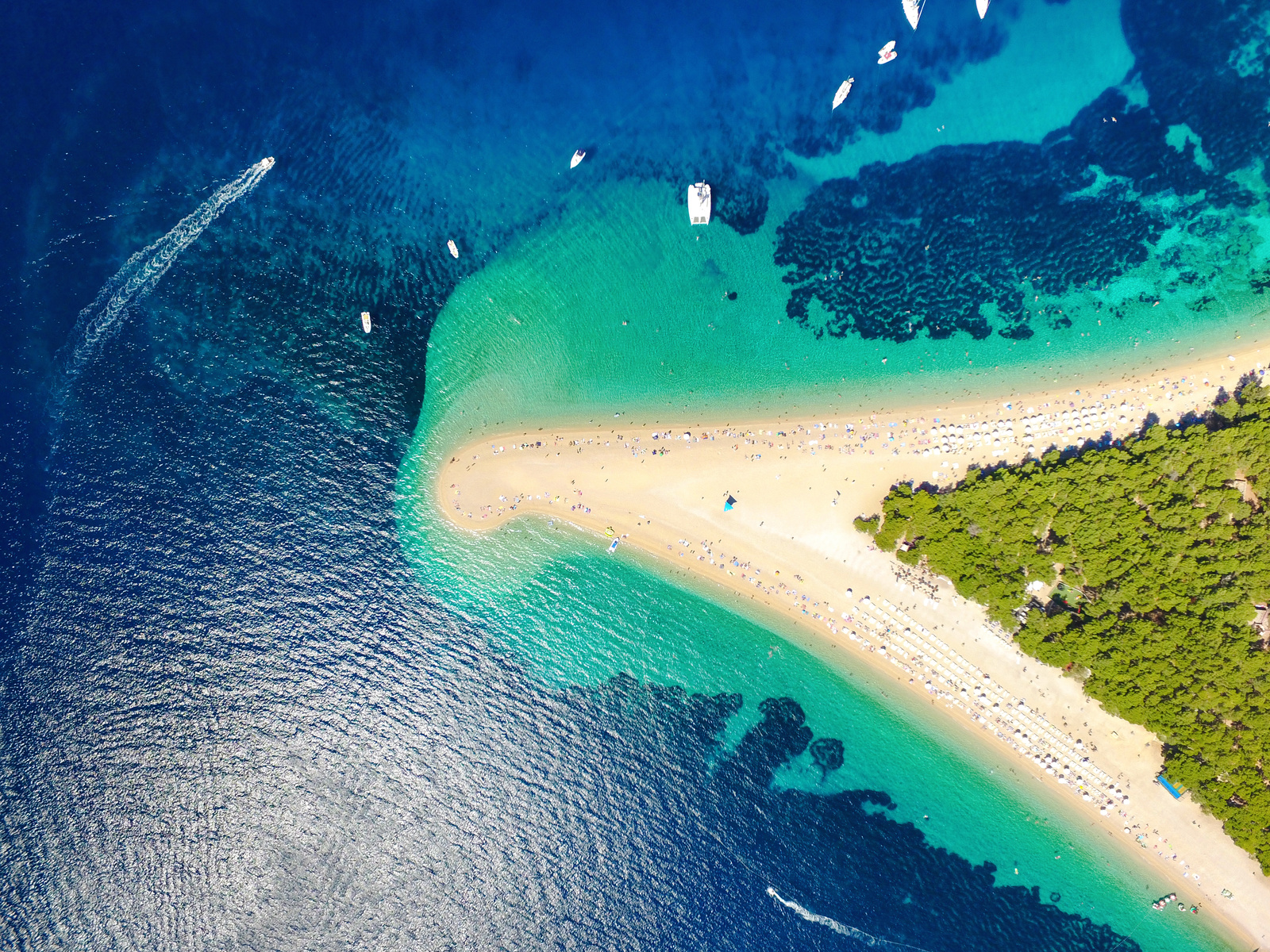
PROUD AND UNITED IN PRAYER The 500-year-old Hvar tradition of the Procession "Za Križen" will continue this year
Procession "Za Križen" (Following the Cross) is a unique religious rite that has been held continuously since the year 1658
There is no island sacral manifestation that is more monumental, and at the same time more mystical, touching and traditional than Hvar’s internationally known Procession "Za Križen" (Following the Cross)

It is not just a ritual in which the faith and piety of the people are manifested; in the case of Hvar, it is an event of the people that has been reflected in its continuity for five centuries. It takes place on the night of Maundy Thursday and Good Friday, and is performed as a religious sequence consisting of six processions that simultaneously move to six Hvar towns. And they never meet during this night-time procession.
The procession is a unique religious rite that has been held continuously since the year 1658, having experienced a partial interruption during World War II. Back in 1943, the Italian fascist authorities forbade the island to participate in the procession. Only the closest entourage participated in the event with the crossbearer. One year later, in 1944, the procession was banned by the Nazi authorities on the island.
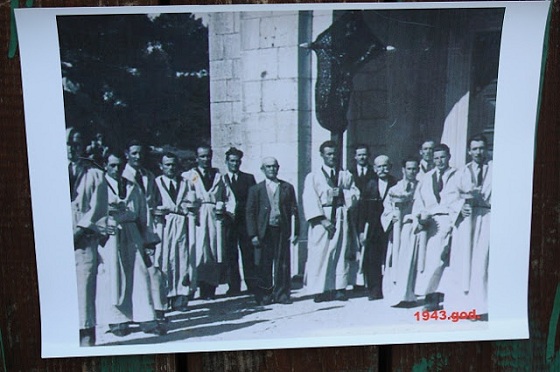
At that time, in El Shatt, there were in fact a large number of people from Hvar who initiated that tradition from their native island and organised the procession in Egypt, with the consent of the British refugee camp command. Dining rooms represented churches, and even improvised altars were erected. About 8,000 people participated in the procession, including the Allied soldiers. The memory of this procession, apart from a few preserved photographs, has also been preserved by the crosses from El Shatto which are kept in the parish churches. The Procession of the Cross was inscribed on the UNESCO List of Intangible World Heritage back in 2009.

Once again this year, despite the coronavirus crisis, this unique religious event will take place from Good Thursday to Good Friday, on April the 9th, 2020. Only the closest entourage will participate in the event with the crossbearer, following all of the recommended social distancing measures.
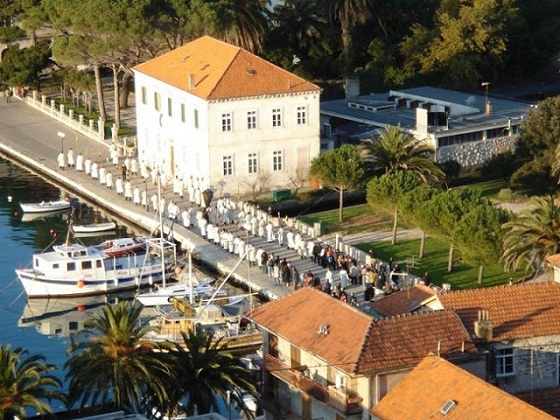
The highest honour in this story is worn by the bearer of the cross, a key person carrying an 18-pound heavy cross.
This role is of great pride for every citizen of Hvar, and in life, sometimes with a wait of 20 years, only a few get to enjoy this rare opportunity. Most often as a fulfillment of a vow made to oneself, or at the family level.
In deep silence, filled with prayer, and deep religious worship, the cross bearers and believers, in a long continuous column, begin their journey with the procession, presenting in the most beautiful way a memorial of religious love always bound in suffering.
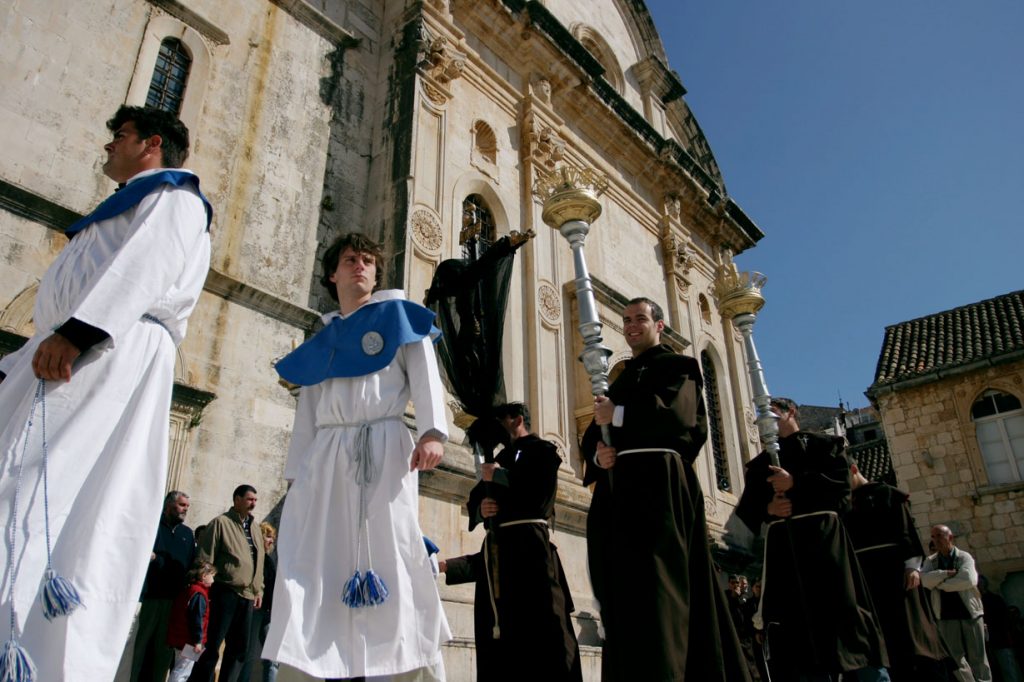
The procession simultaneously starts from the parishes of Jelsa, Pitve, Vrisnik, Svirce, Vrbanj and Vrboska. It has moved for centuries in a given trajectory, clockwise, without meeting and ending in the initial parish. If the processions were to encounter one another during that long night-time journey, the people would mark something like that as enormous bad luck. The procession also has its sacred music, an eighth-century octosyllable text of the Lamentations of the Virgin Mary, performed by cantors. The Procession Following the Cross is one of Hvar’s traditions, which every year records an increasing number of believers from the country and the world. They usually describe their participation in this event with the word - magnificent.
Photo: archive of tourist boards of the island of Hvar
More: TZ Jelsa
Top ten reasons to visit Central Dalmatia
Top 10 attractions of Central Dalmatia!
There is never enough time to visit all of the beauties of Split-Dalmatia County, its towns, imperial squares, palaces, caves, panoramas, viewpoints, bays, fortresses. However, to make the choice easier for you, we recommend ten top destinations, which are simply perfect, special places to visit.
Visiting these ten sites will help you find out why they call the Split-Dalmatia County a paradise on Earth.
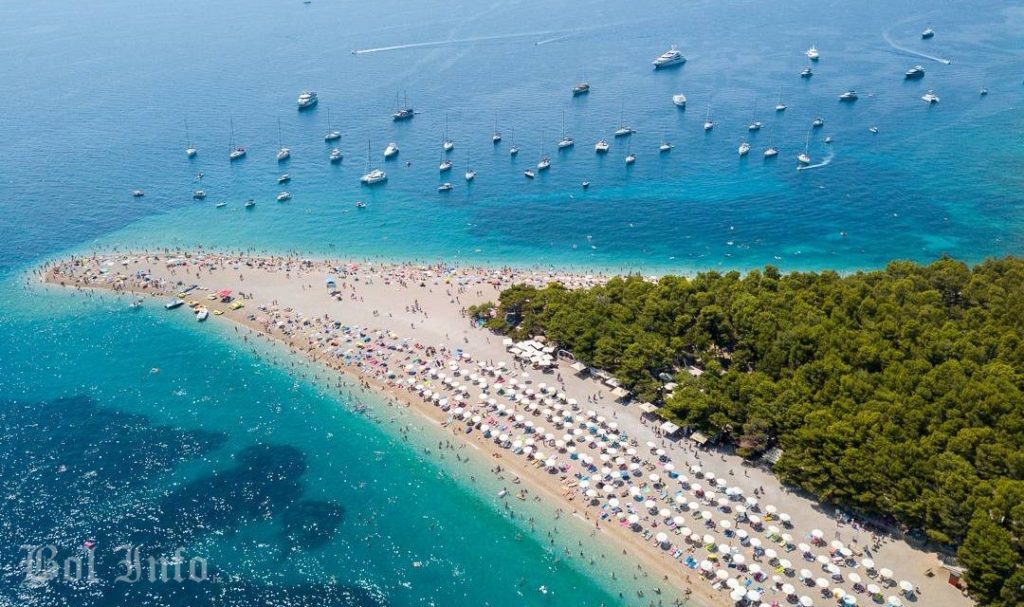
1.Zlatni rat (Golden Horn), Brač
Island
It is a unique natural site, a
400-meters-long-cape which blends in with the crystal clear sea. It is a
worldwide phenomenon due to the change of direction of the tip of the cape,
depending on the seasons, wind and sea currents. It is one of the most
beautiful beaches in the world, sprinkled with perfect, soft white pebbles.

2.Hvar - Paklinski Islands
The archipelago consists of 20
islands and cliffs that extend in front of Hvar town, on Hvar Island. They
include perfectly preserved nature, offer crystal clear sea, a paradise for
people who adore sailing, swimming and diving. The most famous daily-excursions
sites in the archipelago are Jerolim, Stipanska, Ždrilca, Vlaka and Palmižana.

3. Cetina River
Cetina River is the pearl of Split's
hinterland, with its stream that is both wild and lazily calm at points. It runs
through untouched nature, offers loads of excursion areas and delivers top
quality gastronomic offer in its zone. Make sure to visit Gubavica Waterfall
and the navigable canyon of Omiš..
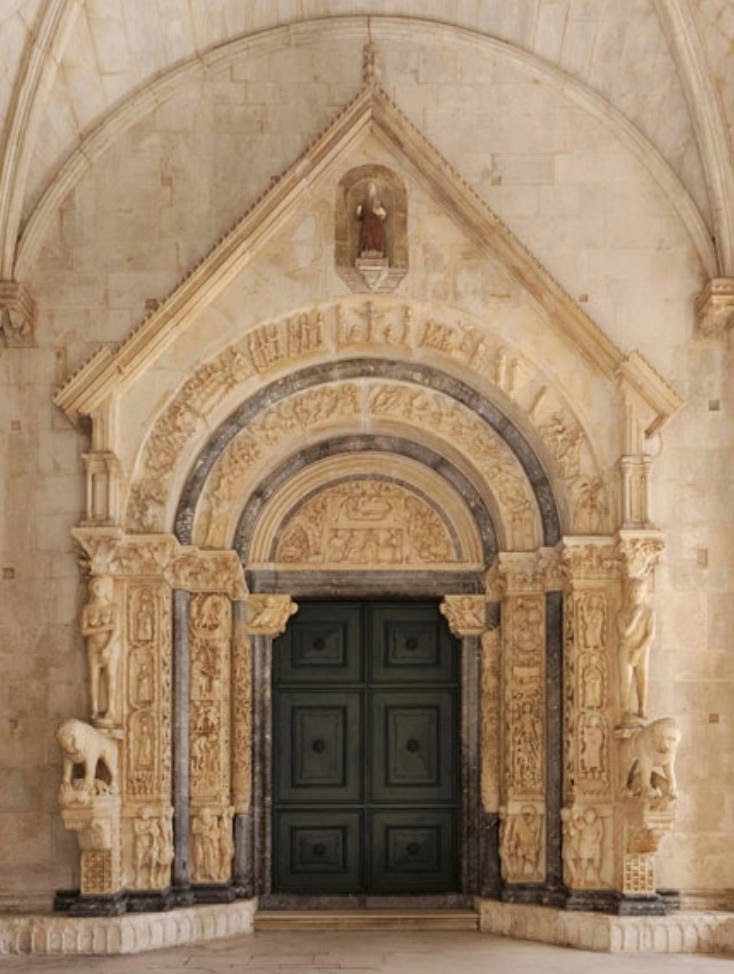
4.Trogir – Cathedral of St.
Lawrence
The cathedral was built in the
13th century, and its perfect beauty stands for one of the most beautiful
Renaissance monuments in Europe. Make sure to check out Radovan's Portal, a
true masterpiece of art carved in stone, as well as the bell tower, with it 47 meters of hight –
it holds the title of the most beautiful one on the entire Mediterranean coast.

5. Solin - Salona
In the immediate vicinity of
Split, near the small town of Solin, lie the remains of the ancient city of
Salona, dating to the 4th century BC. You will be amazed by the preserved
history, the view of the old spa, the bath area with furnaces and changing
rooms, the remnants of the forum, temple and theater.

6. Split - Diocletian's Palace
The palace was once home to emperor Diocletian, and is one of the best preserved monuments of Roman architecture in the world, in which still live their daily lives. It is full of old houses, squares, cellars, ramparts.

The world got to know the Palace from the GOT series – by sequences filmed in its inner sites, just a few dozen of meters away from what used to be Diocletian's living room.

7.Sinj – Alka Tournament
It is the most famous old
knight's game or tournament from this area, which celebrates the victory over
the Turks in 1715, performed every first Sunday in August. The tournament is
played by "alkari"
knights and spearmen, who must aim the center of two concentrically placed metal
rings, from the back of a horse in full
gallop, with a spear 290 to 300 centimeters long.

8. Biševo - Blue Cave
Five kilometers from Komiža on
Vis Island, the islet of Biševo is located, with its beautiful Blue Cave, which
can be accessed only by small boats on oars. Sunlight penetrates the second
opening hole int he cave, thus giving it its mesmerizimg characteristic blue
color.

9. Biokovo Nature Park
The highest peak of this mountain
range is the St.Jure (Croatian for George) at 1762 meters, from which you can
get to see all the way to Italy, on clear days. Be sure to visit Kotišina – the
botanical garden on the slopes of the mountain, and enjoy numerous geomorphological
phenomena with a licensed guide.
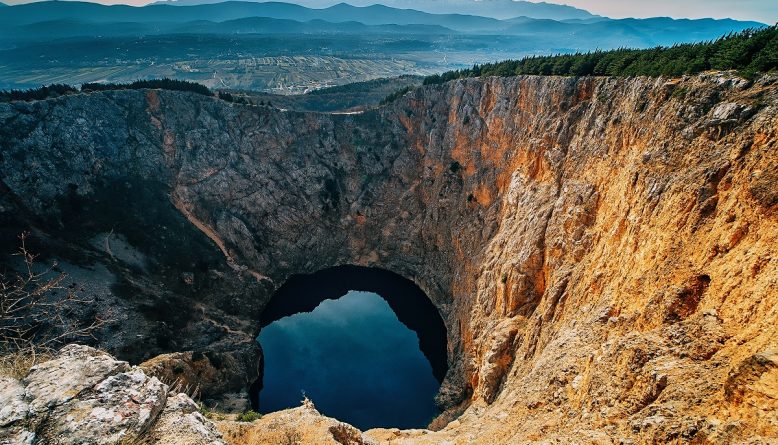
10.Imotski – The Lakes
The Red and the Blue Lake, located right next to the town of Imotski, are natural phenomena, favorite locations for daily excursions. The Blue Lake is a swimming zone during the summer, but when its bottom runs dry, it becomes a football field. The Red Lake is considered to be the deepest lake in Europe. Due to the steep cliffs that surround it, it cannot be accessed from close proximity.
More: www.dalmatia.hr
Photo: www.dalmatia.hr, archive of TB of Split Dalmatia county,

Central Dalmatia maritime heritage - Orginal cultural-tourist offer, full of mysteries and stories from the past
Crystal clear beaches, romantic bays and walkways, incredible gastronomic offer is what brings tourist from all over the world to the very heart of Dalmatia.

But Central Dalmatia also has its own maritime heritage, original cultural-tourist offer, full of mysteries and stories from the past, which have additionally enriched and enhanced tourist and cultural offer of this region.
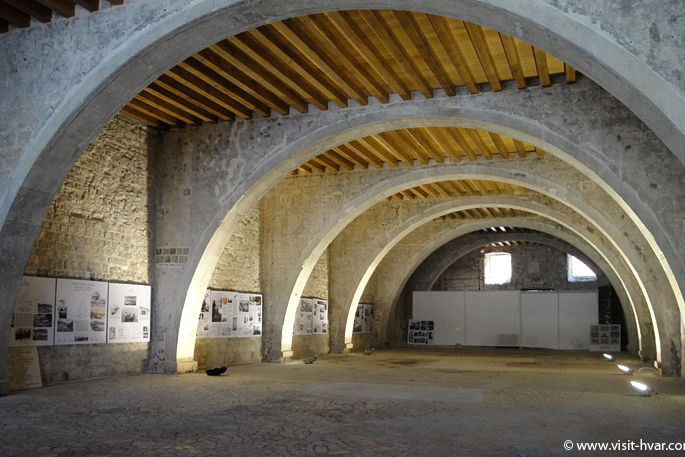
Hundreds of tourists excitedly retell the stories of encounters with pirates, participating in the craziest nautical battles, riding on traditional vessels or cheering in races of traditional boats. These are the most important tourist attractions that you must see and experience for yourselves:
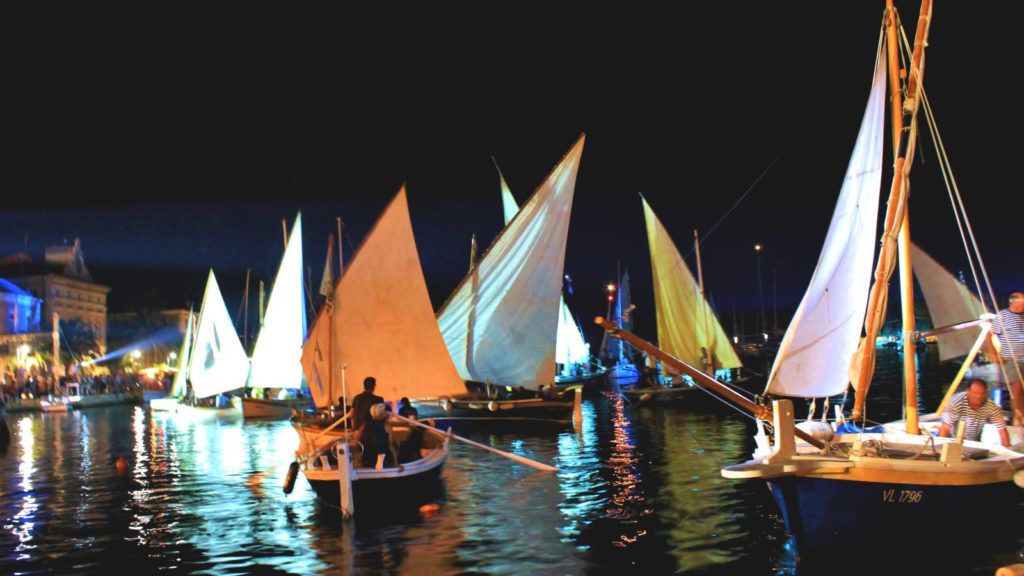
1. ”Dani u
vali” (“Days in the bay”), Stari Grad on Hvar
After this manifestation, an international
festival of the sea and the sailors, was discovered by the press, a story of
about 100 traditional vessels of leut,
gajeta and falkuša type has
reached million people.
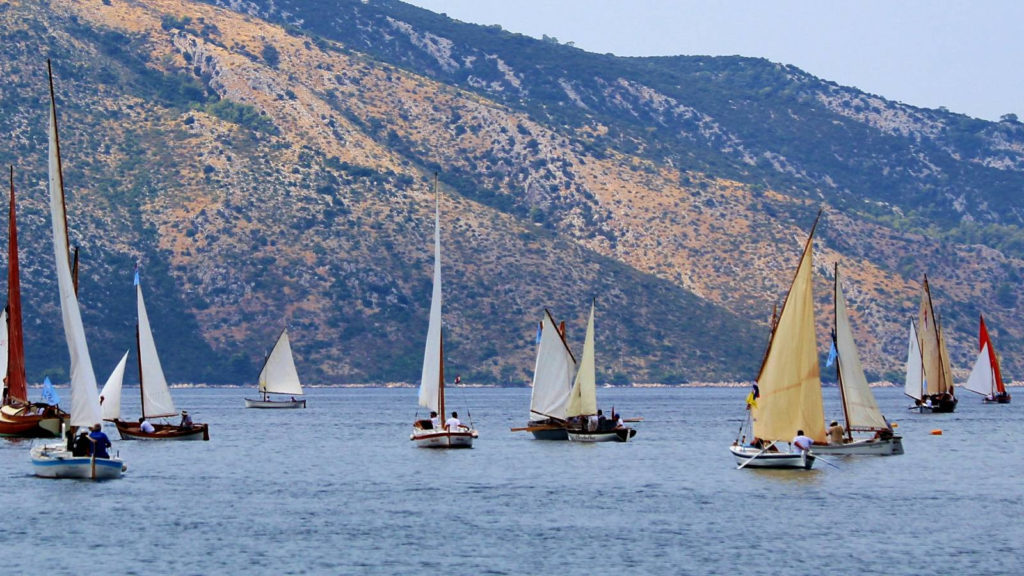
This extraordinary tourist attraction is held every other year. Numerous boats saved from oblivion sailing five nautical miles along the Stari Grad bay is a scene one has to experience in person!
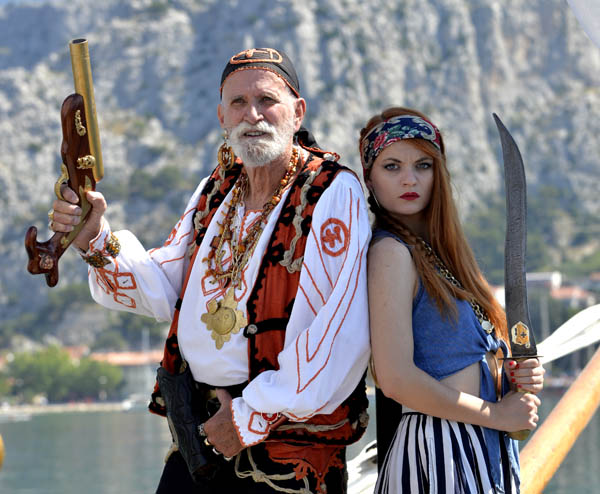
2. Omiš Pirates
It is a
real challenge to meet face to face with disguised ancestors of former Omiš
pirates, who once were the most notorious warriors of the Mediterranean. Irresistibly
attractive is to enter their game, measure swords with them and try to escape
from their captivity. Strong pirates are revived every summer on the shallows
near Omiš, bringing the story of Kačići knights who ruled this heroic town in
12th and 13th century and their 24 years long successful
struggle against the Venetian conquerors.
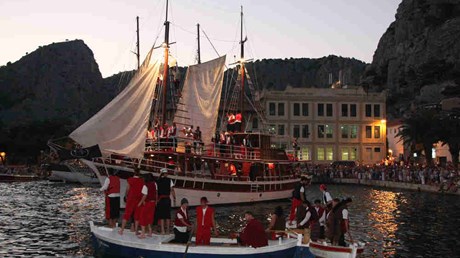
3. Pirate Battle
In encounters with pirate ship called Sagittae Venetians had a lot to deal with. This is demonstrated every summer by the most attractive and the most popular naval battle in Dalmatia, Omiš Pirate Night.
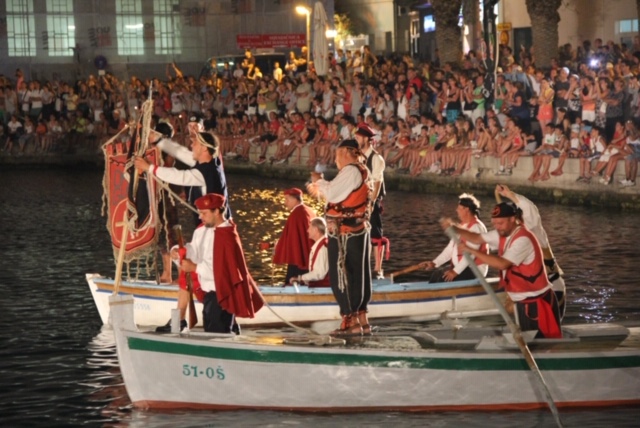
Around hundred costumed heroes participate, tens of thousands of people watch it, and it brings a night full of adrenaline, old battle ships, noise and shooting. And audience ovations, delighted with spectacle under an old pirate base, Omiš fort Mirabela.
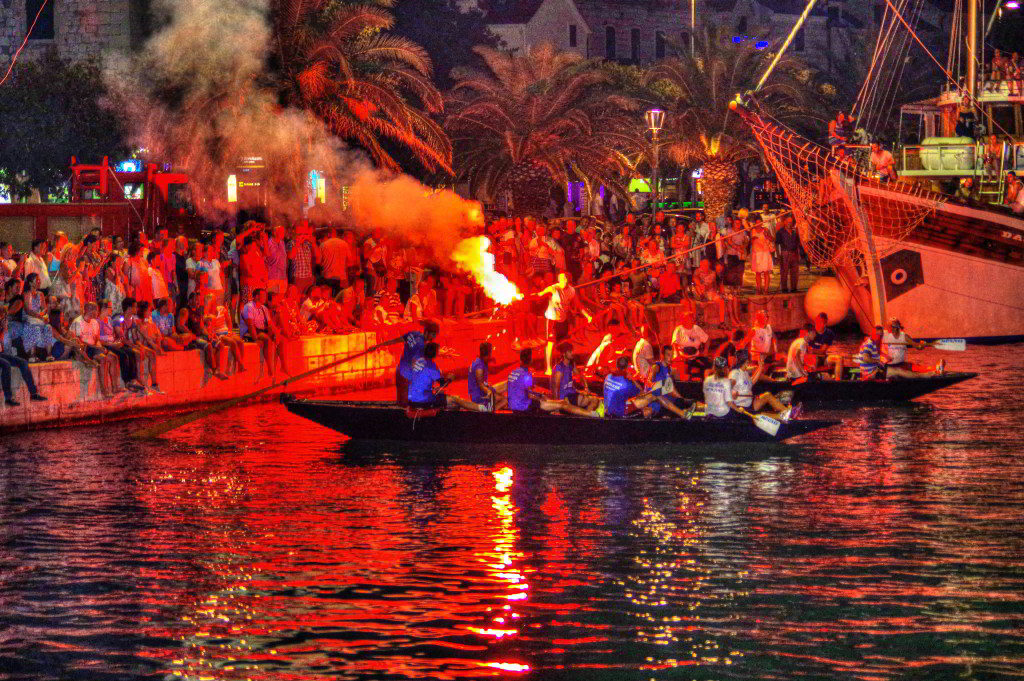
4.Makarska Battle
Battle Mucules
actually evokes warrior heroism of Neretva people over Venetians. It is traditionally
held in Town port on the Day od Croatian Navy. In demonstrating the battle even
150 people participate, delighting thousands of spectators with this war
spectacle.
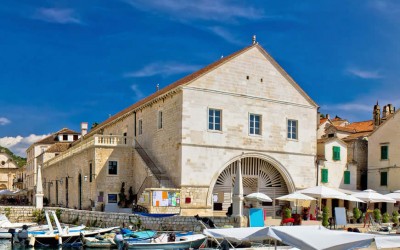
5. Arsenal in
Hvar
Arsenal is
the most recognizable Hvar’s image, formerly used as repairing space for
galleys and a military naval repository. Hvar people think of this tourist
attraction as the most important edifice of their town, who got its present look
in 19th century.

6. Vis Battle
Vis is one the most serious locations for navy battles enthusiasts. They come to this remote island to feel the energy of the archipelago, where on 20 July 1866 a conflict occurred between the fleets of Habsburg Monarchy and Kingdom of Italy.
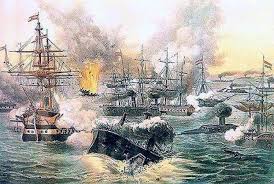
The clash happened in Vis channel and ended in a defeat of Italian navy. The cause of the conflict was Italian desire to occupy its former territories, lost by Venetians.

More: www.dalmatia.hr
Photo: www.dalmatia.hr, archive of TB of Split Dalmatia county
Visit idyllic Ethno-eco villages of the Split-Dalmatia County
Who is to say that as summer goes on, we have to wrap ourselves in our houses, and wistfully wait for winter to pull out the cold days, until we can again celebrate sprint? No way!

Now starts the perfect period for vacation, as the post-season offers many opportunities, one of them being a tour of the idyllic Ethno-eco villages of the Split-Dalmatia County.
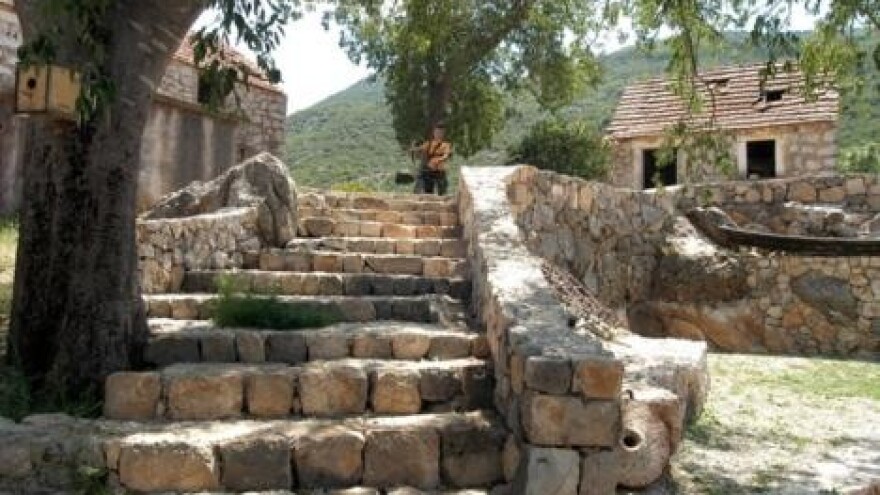
This is a very high-level project, which was initiated by the county 14 years ago, in cooperation with the local self-government units. Through this project, the County invested over 5,600,000 kuna by year 2009, with the aim of developing rural tourism as a new added value in its offer.
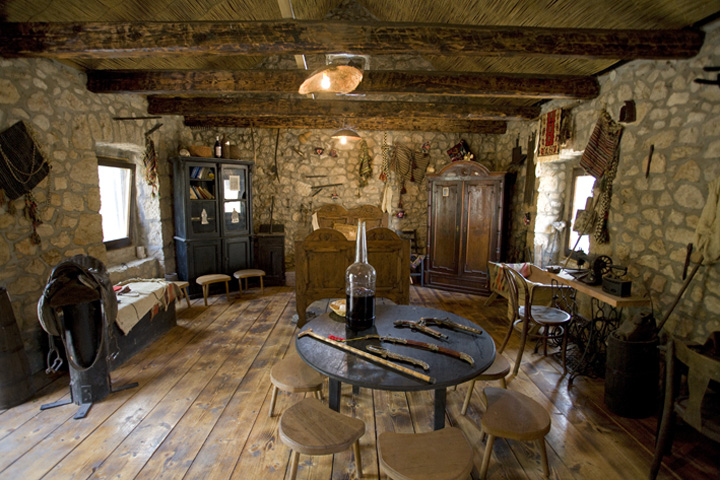
The motive was clear - with this project the County made it possible to stop the trend of bulk-selling of old stone houses, to invite back the people who have migrated from these locations, and to restore life. The project revived the once neglected, empty sites, turning them into excursion locations both for local and foreign tourists.
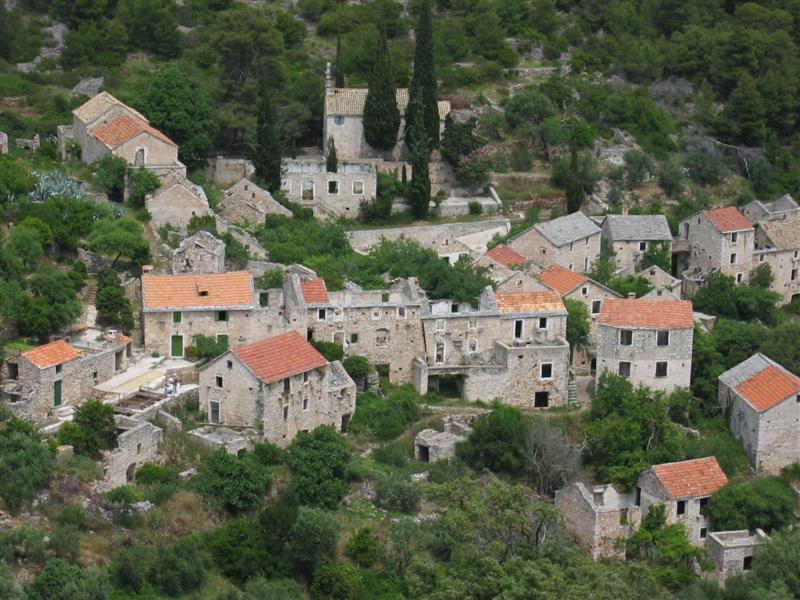
There is no greater beauty than the restored stone, no better views than those of the preserved traditional buildings, the beautiful "solurati", fireplaces and tavern areas, the massive "vacada" stones (cube-carved stones) that guard the faces of former homes, the finely grouted joints, wooden blinds and dry walls.
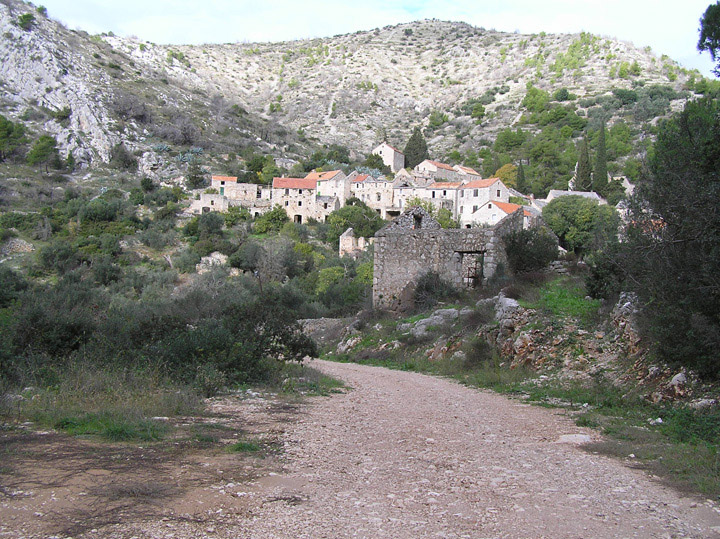
Why are we inviting you to these villages? Because it's time to get to know the magic of our Zagora, and locations int he hearts of our islands, to go out into nature in the time of fall and winter, liberated from loud sounds of murmur, traffic, noise. Why? So you can experience a special kind of entertainment, which will be remembered for many reasons.
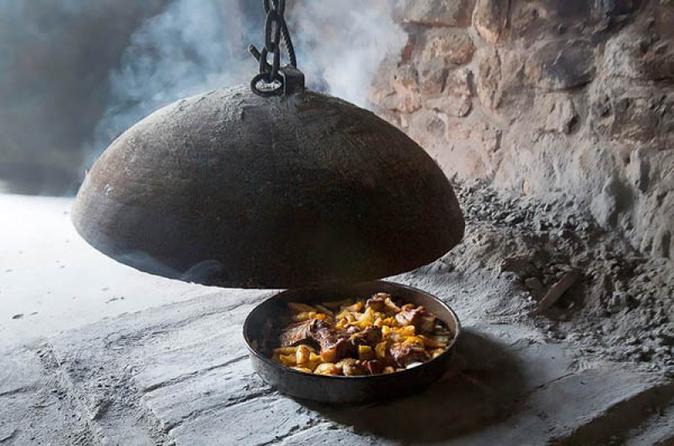
Ethno-eco villages offer many options, they are ideal holiday destinations in the true sense of the word. You will be greeted with warm houses, homes full of massive fragrant woodwork.
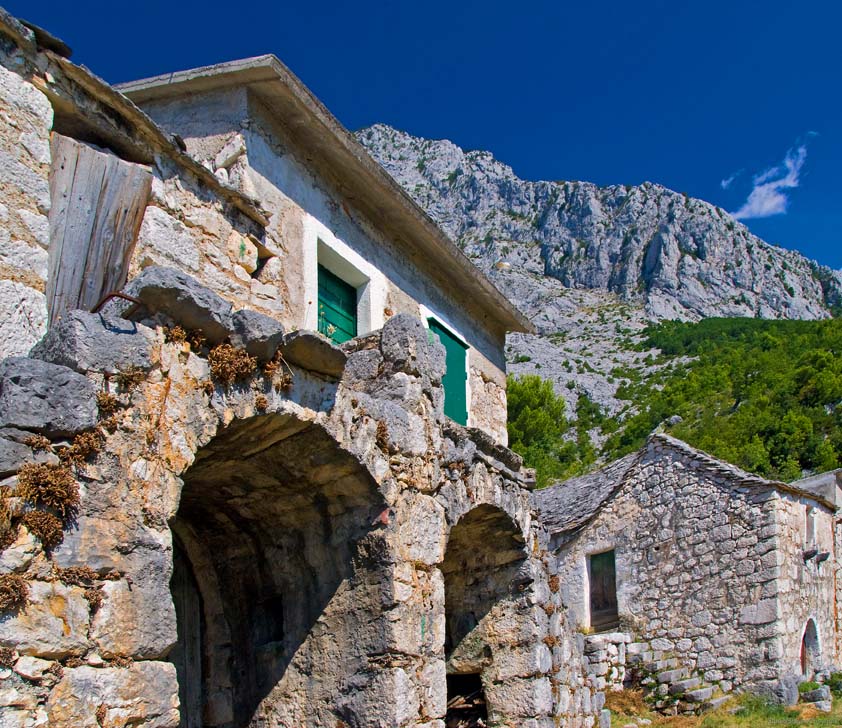
Old red-and-white curtains on small windows, an atmosphere that gives immense tranquility. You will feel the magic of socializing, you will be cycling, hiking, running, mountaineering. If you spend the night, you will get to sleep by the warm fireplaces, and listen to the fire crackling from the old stoves.
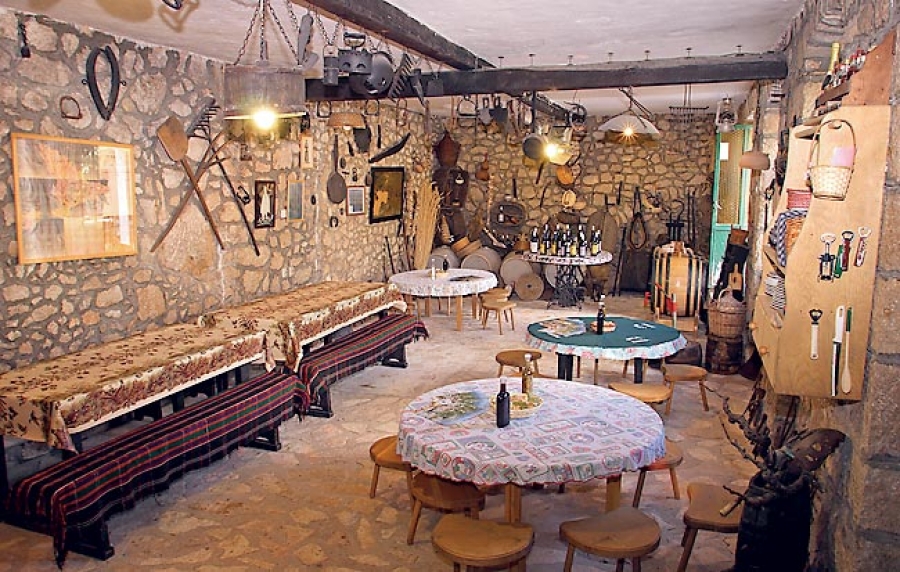
And that's just the beginning. In the morning, your hosts will prepare you breakfast, so different from the standard, grab-a-quick-bite ones. Homemade butter and marmalade, hot bread and cakes, fresh milk. Homemade cold cuts, honey from the hives of local beekeepers. Homemade juices of elderberry, blackberries, cherries.

You won't even have a break from the taste explosion, and you'll be in for a fresh new serving of delicacies. What to choose, which one to try? We will not even try to comfort you, the choice won't be easy! And you are not even supposed to be given an easy choice – you must try it all, as these are treasures coming from our fields, from the barns, from the domestic cultivation, from the nearby streams.

But here, let us give you a small hint – do try the homemade soup, cooked lamb, roasted in a "škrovada" pan, or on a spit, our "vitalac". "Dolce garbo", baked veal, snails and capons, trout and homemade potatoes, prosciutto and herbs-infused cheeses. Homemade desserts and cakes with almonds or walnuts, poppy-seed or walnut rolls ("makovnjača" and "orahnjača") and pancakes stuffed with homemade jam.
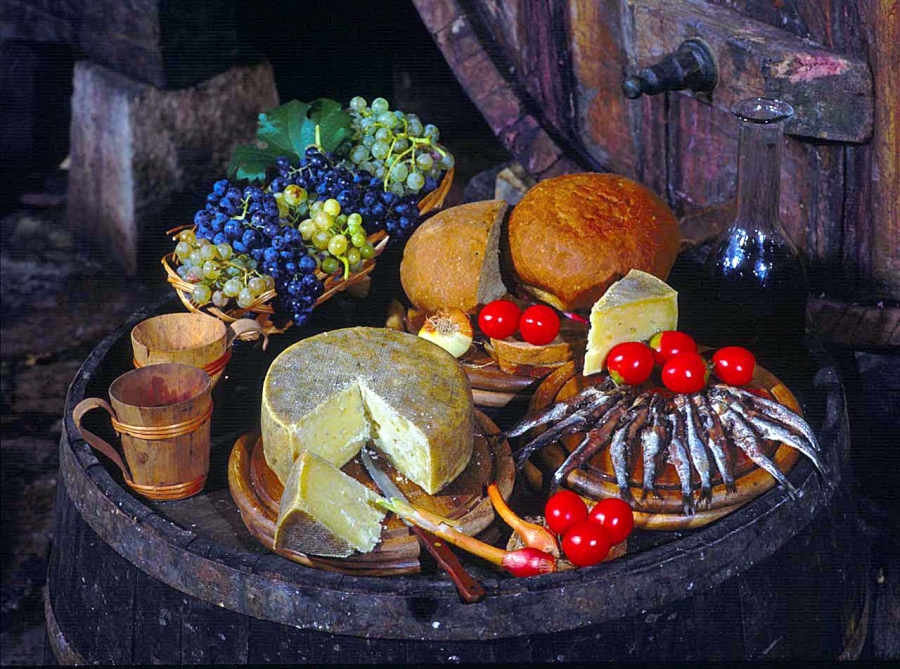
Trust us, you can't have a taste of these kinds of dishes just anywhere, you can only experience something like this in a true home-like environment. In locations that have taken only the best from the present and the past. And they offer it to you with their hearts wide open! So just head to one of the best Ethno-eco villages in Split-Dalmatia County:
- Topići, Topići-Bast (Baška Voda)
- Zorače, Malo Grablje, Velo Grablje, Brusje (Hvar)
- Humac (Jelsa)
- Podhumlje (Komiža)
- Tugare Ume, Čažin Dolac (Omiš)
- Dol (Postira)
- Gornji Proložac Podi (Proložac)
- Blace (Solin)
- Grohote (Šolta)
- Podi Grab Bugar., Gornje Voštane i Grubišići (Trilj)
- Kokorić, Veliki Godinj (Vrgorac)
- Karoglani (Zmijavci)
- Murvica (Bol)
- Gornja Podsrtana, Stara Podstrana (Podstrana)
- Lolić i Mijanovići (Split)
- Brdaci (Zec), Divojveići, Etno eko selo Škopljanci Radošić
- Botić-Opor (Prgomet)
- Naklo-tavnice (Lokvičići)
- Jesenice, Duće (Dugi Rat)
- Mala Rudina (Stari Grad)
- Bekavci Kričar (Brela)
- Rušinovići, Drvenik Veli Kačine (Trogir)
More: www.dalmatia.hr
Photo: www.dalmatia.hr, archive of TB of Split Dalmatia county,

Top manifestations in Split - Dalmatia county attracts tourists from all over the world
Split-Dalmatia Tourist Board is very active in supporting projects that lead to continuous development and strengthening of tourist offer, especially that of pre- and post-season.

Wise consideration and design of numerous manifestations and quality events are becoming a precondition for development of year-round tourism. Importance of investing in important themes that are to enhance this kind of offer has been recognized this year as well by Expert Committee of the Tourist Board.

Therefore, 400 thousand kunas of non-refundable funds have been given in 2019 as a strong boost and a mighty financial support to several top events and manifestations. Great number of participants, praises of foreign and national media and great feedback have shown that these assets reached good cause. And the most important thing, the focus of tourist offer has been widened outside the prime season. Furthermore, it also ensured an excellent path for positioning Split-Dalmatia County as one of the main subjects of destination tourism.
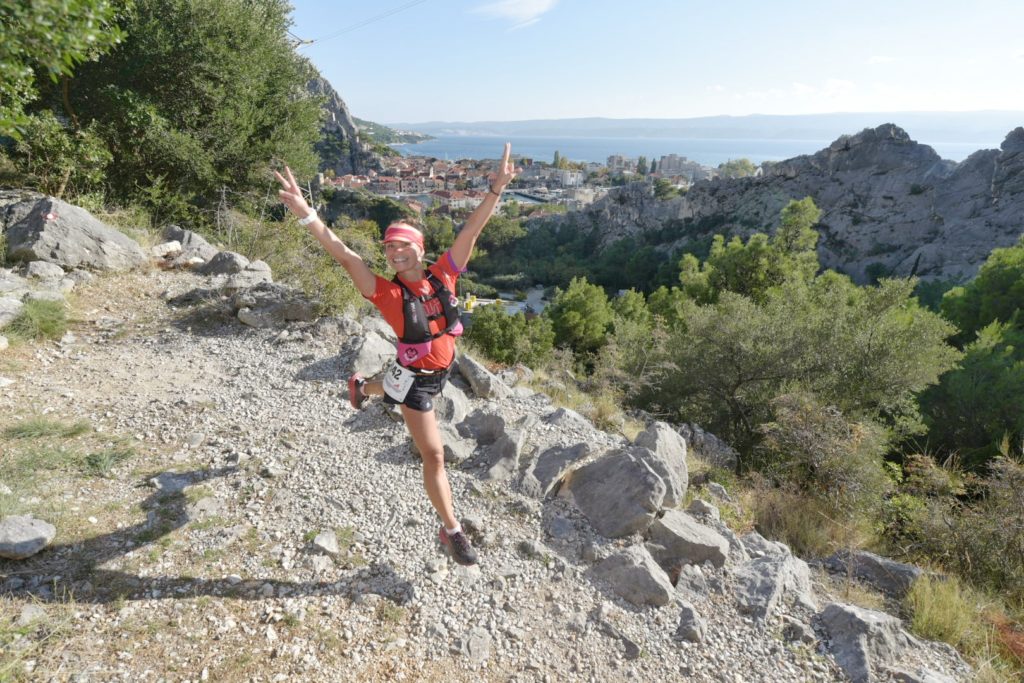
- Dalmatia Ultra-Trail 2019
4th edition of this event has presented Dalmatia to the world as a hit destination of sports tourism, and gave to Omiš town, since it is a central place of the event, a nickname of Cradle of Croatian trekking and trail.
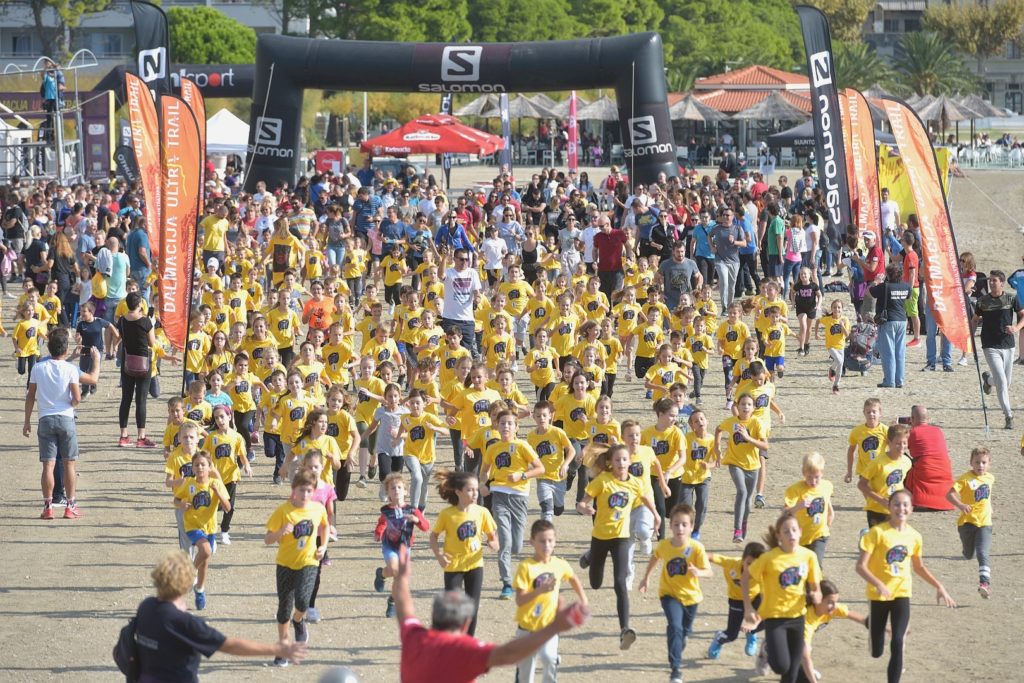
More than 900 runners from 30 countries participated in this international race, who brought back to their homes the best possible postcard from Croatia encompassing even 5 mountains, three rivers and numerous historical and cultural localities on the area between Kaštela and Tučepi.
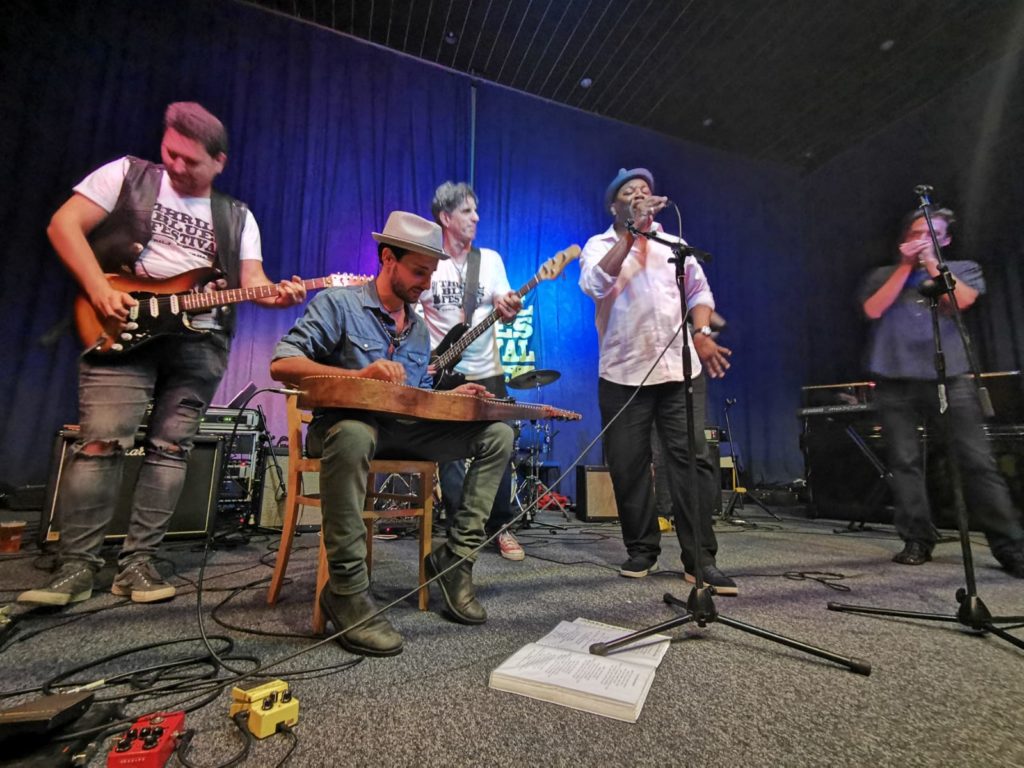
2. Thrill Blues Festival After only three years of this festival Trilj has become a centre of blues, transforming Cetina region into a mecca of excellent music.
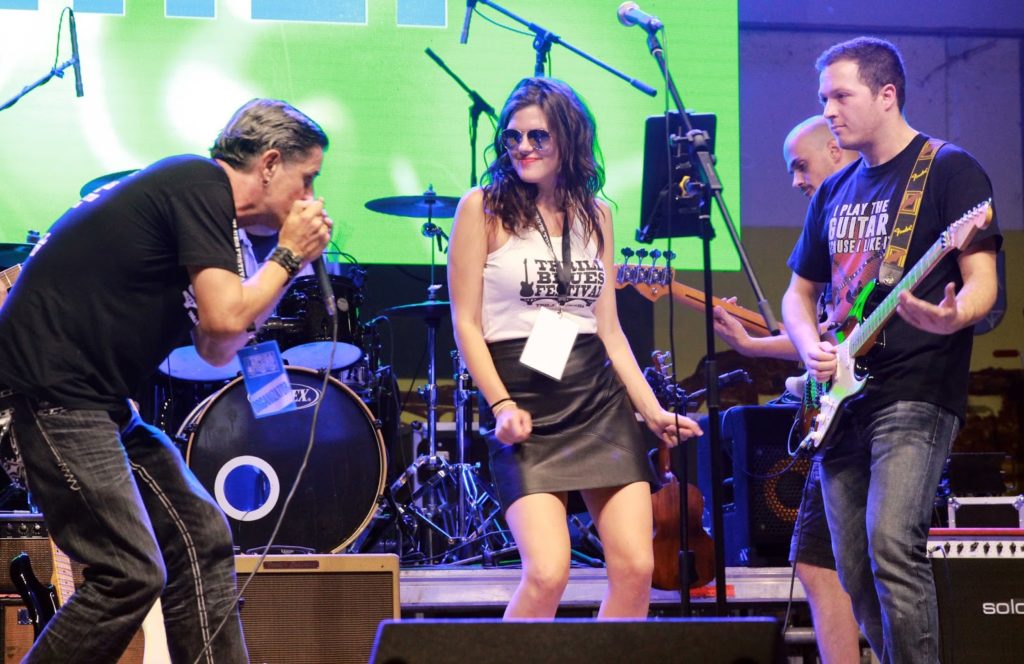
This exceptional cultural manifestation each year gets more and more accompanying events, like blues workshops for children, book presentations and concerts of national and foreign renowned blues masters.
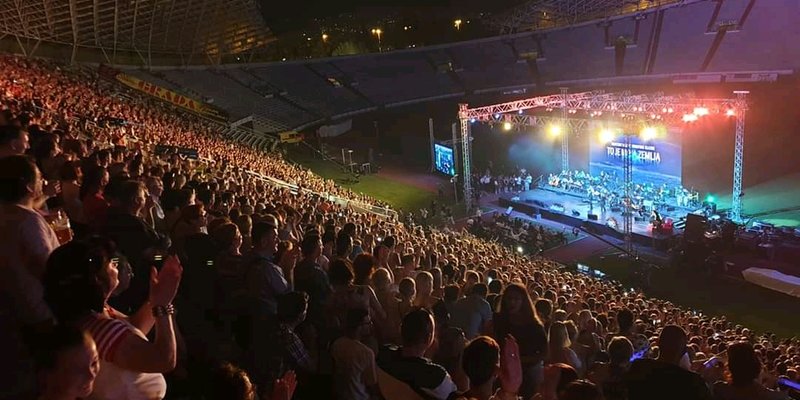
3. In
honour of Croatian music
Weeks after
it was held, concert To je moja zemlja
(It’s my country) on Split’s Poljud was the main topic. Praises kept coming,
not only for performances of the greatest national names and legends of
Croatian music scene, but also because of charity for Split hospital. It was a
gathering of the greatest Croatian music performers, but also an eruption of
emotions that shook the entire Poljud stadium.
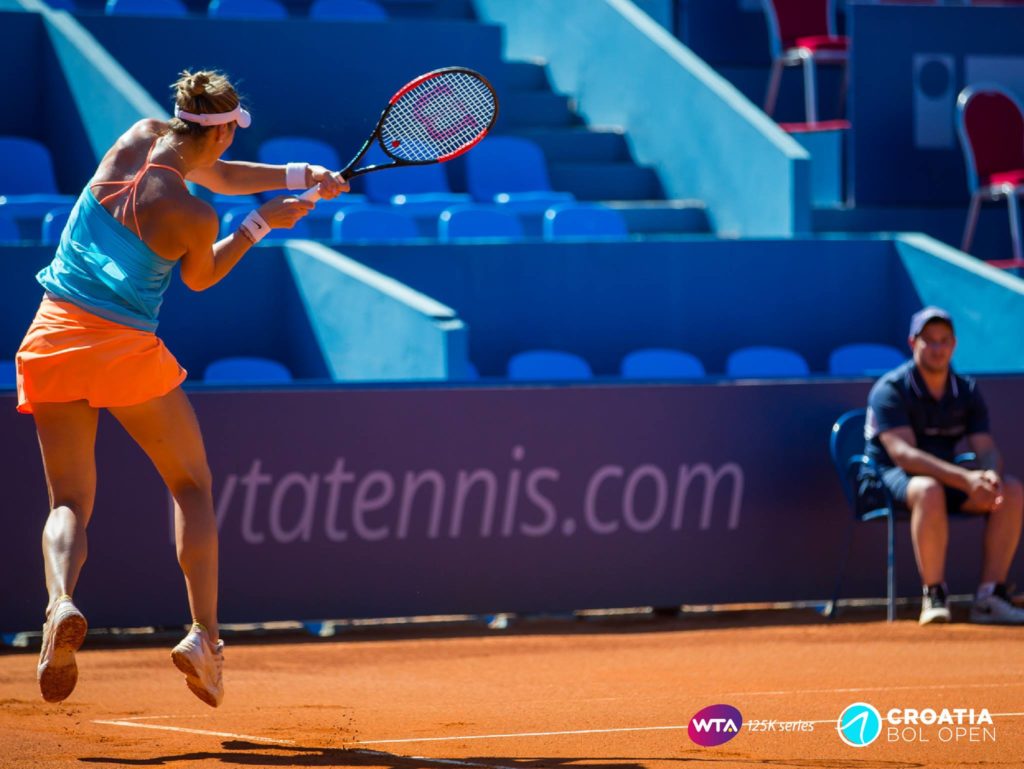
4. WTA Croatia Bol Open
Tennis tournament in Bol on Brač has crossed Croatian borders long time ago, thus introducing Bol as a destination with multi-profile contents.

This year also, a place famous for one of the most beautiful beaches in the world, has been visited by numerous guests, who were welcomed by a tourist message – that the entire place lives for tennis. Same as the tournament and tennis live with the entire community.

5. 53rd Festival of Dalmatian A-Capella Singing Groups Every year on a small Omiš square same thing happens – the song. True, original, Dalmatian, a-capella, polyphonic and unique, recognized as an ultra-cultural event and a tourist treat.
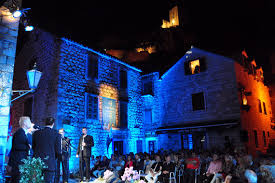
Omiš festival of a-capella singing groups is a recognizable manifestation with its loyal audience and music that promotes the spirit of Dalmatia in a genuine music genre.

6. Split half Marathon
Sunny streets of Split hosted 2810 runners; 2450 in races of half marathon and relay race half marathon, and 360 in “Trophy of Slobodna Dalmacija” race.
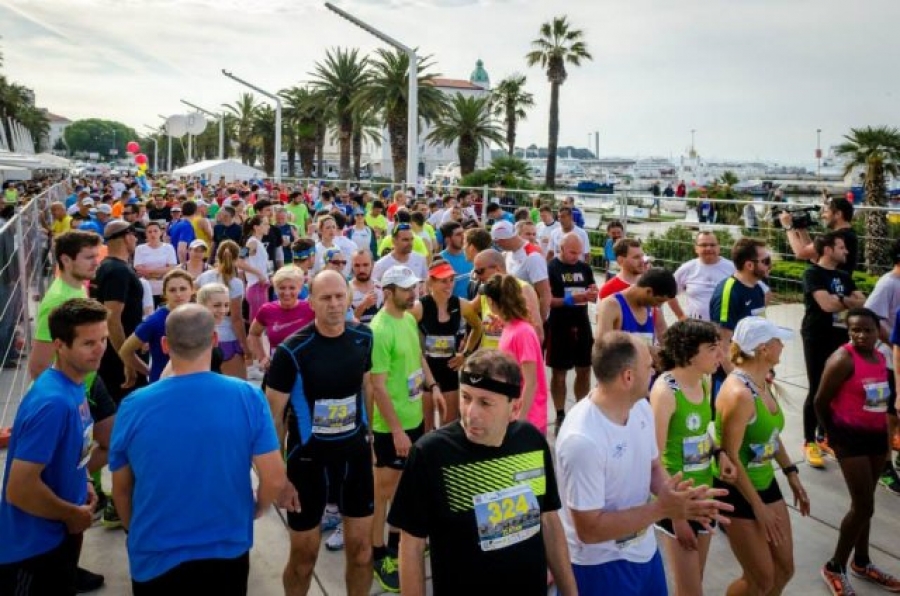
In this popular sports event numerous famous people have participated, amongst them respectable politicians, athletes, persons from cultural and public life. This year’s edition will be remembered by co-operation with Moscow marathon, whose representatives participated both in the race and the fair.

7. Sinj Alka
A battle of chivalry, strength, skills, a demonstration of a steady hand, eagle eye, a folk celebration, a not-to-miss event: all this is Sinj Alka, whose this year’s winner is Frano Ivković from Brnaze.

He will be remembered for two scores in the centre and his statement that he has to thank his Luna and steady gallop for his victory.
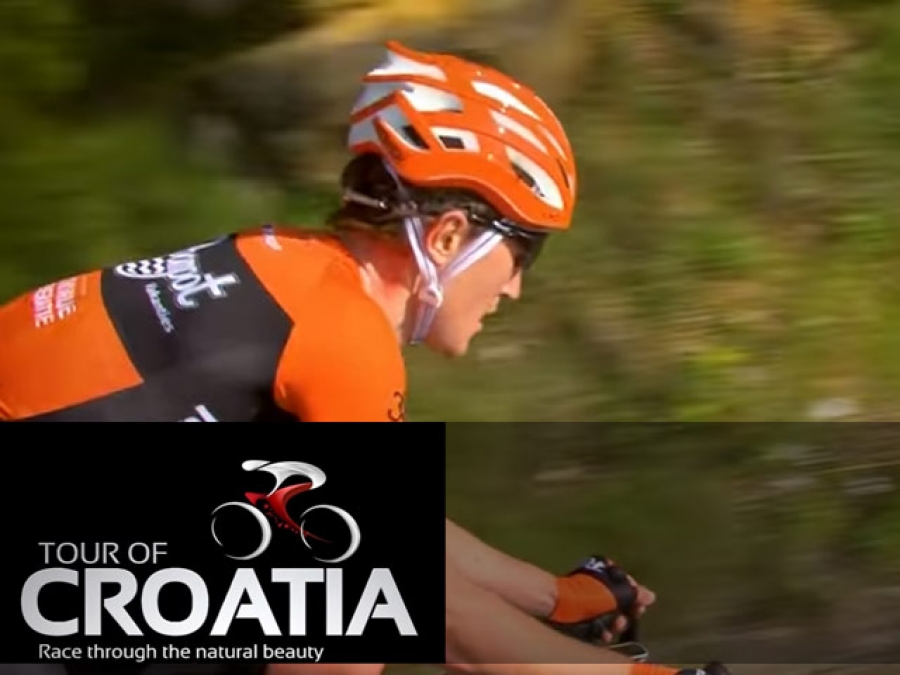
8. CRO Race 2019
Cycling world has excitedly kept track of this year’s edition of international professional cycling stage race, which brought to our roads top names of this sports discipline.

Also, it sent fabulous postcards from beautiful localities of Croatian continental and coastal area.
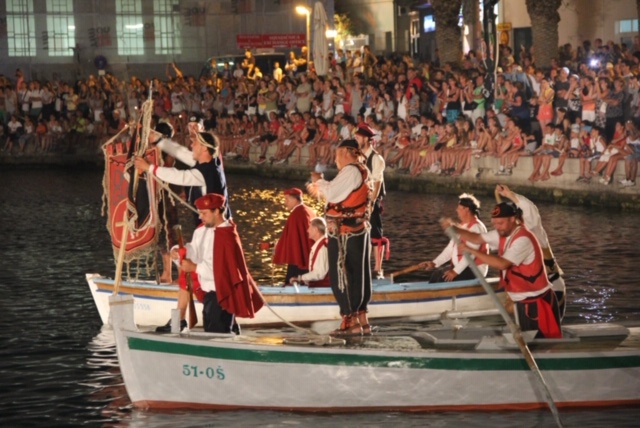
9. Pirate Battle Omiš 2019
Over the years Omiš pirate battle has been transformed into a unique tourist attraction, with over ten thousand spectators.
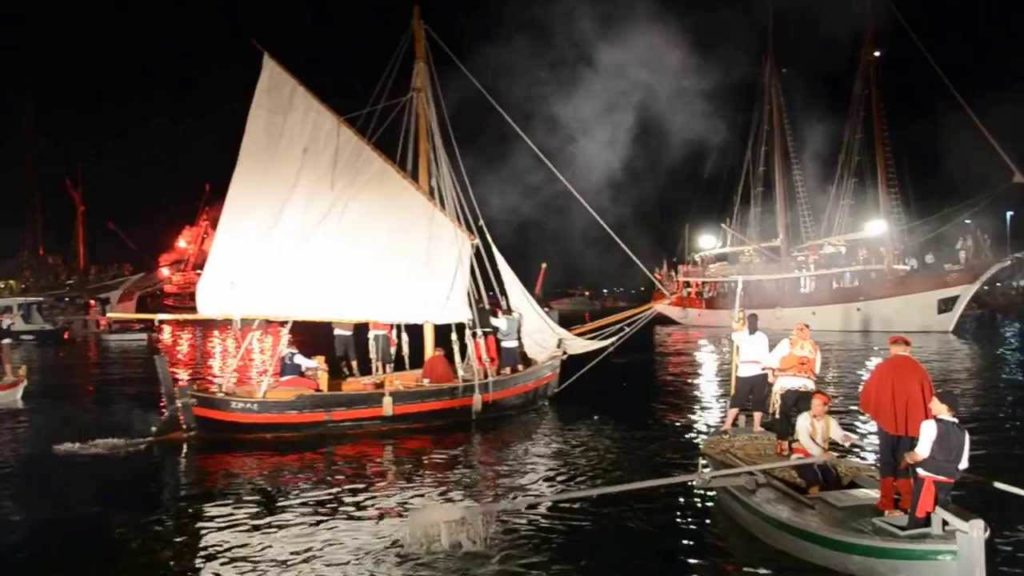
It is an incredible manifestation in which a great number of costumed people participate, offering the spectators a vivid presentation of strength, courage and chivalry of Omiš ancestors and a victory over superior Venetian enemies.
More: www.dalmatia.hr
Photo: www.dalmatia.hr, archive of TB of Split Dalmatia county,

Museums and galleries of Cetina region
There are so many reasons to love, even adore the Cetina region! For some it is Our Great Lady festivity in Sinj, while others are enchanted with miraculous Alka, visited by more and more people every summer.
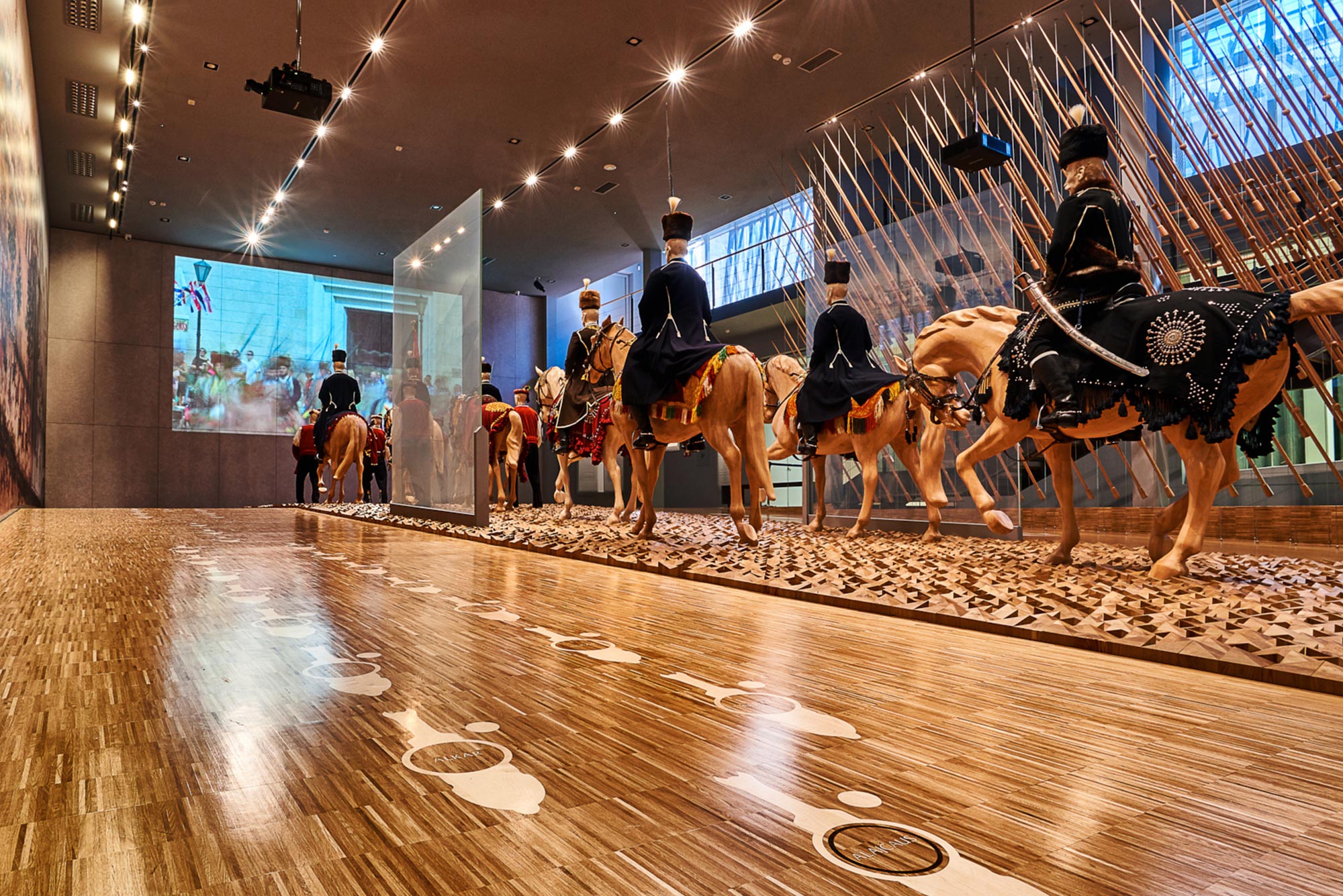
Gourmet's main reason could be Sinj's arambašići simmering in a pot with delicious bacon or tasty frog legs grilled in idyllic ambience of mystique and intriguing Trilj; or even hot delicious doughnuts from Vrlika. Those of more adventurous spirit may be drawn to this region by Cetina's rapids and its amazing blue eye over which you can practice adrenaline stunts to impress those less daring, with for example highline. Whatever it is you like about the Cetina region, we're sure you have good reason for it, but take our advice and sneak a peek into its museums – treasuries of history and culture. We're sure you'll love it even more!

CAN'T DO WITHOUT ALKA. To start this text in solemn and glorious way, it is enough to mention famous Alka, and its museum which you should look for in – Alka courtyard!

Alka courtyard with the Alka museum are located in one of rarely preserved Venetian kvartirs (barracks to accommodate the cavalry) in Dalmatia, so the very location is in its way sensational.

Museum, which gave this incredible knight’s game new presentational form, is an excellent blend of tradition and modern - do not miss to delve into a story of Alka told by the most contemporary equipment, thanks to which you can have a try at the game yourselves, fight with the Ottomans, see digitalizes archive documents and video materials of all winners from 1784 till today!

IN MONUMENT BUILDING PALACINA, which is a part of historical complex nearby Kamičak fort, another edifice worth visiting is located – the Museum of the Cetina region!

Culture enthusiasts will be enchanted with even 12 different museum collections, whose beauty is impossible to describe: archaeological, cultural-historical, ethnographical and natural history collections, as well as arms collection; orders, medals and plaques collection, collection of photographies and photographic equipment, document collection, poster collection, postcard collection.

There is even a collection which presents works of the 20th century Cetina region artists, so it is truly one comprehensive object, make sure not to miss it!
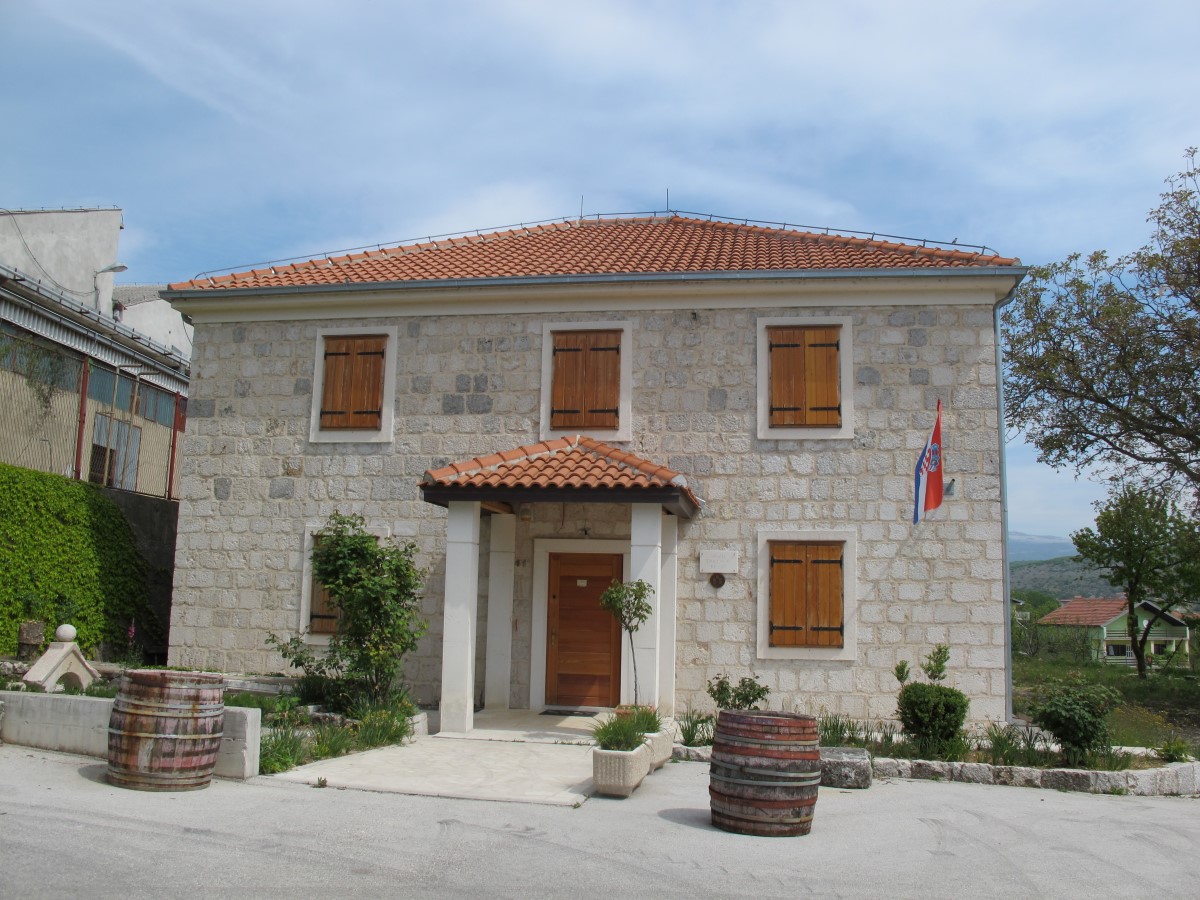
ONE OF THE YOUNGEST CROATIAN MUSEUMS is Trilj Region Museum, located since 1996 in adapted parish church. Main task of this museum is to present cultural heritage of Trilj through archaeological, ethnographical, cultural-historical and numismatic collection.
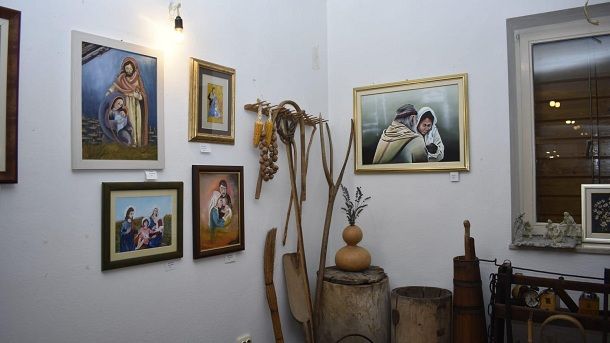
Visit this museum and see permanent collection ''Tilurij – Roman military camp'' and get a closer look of Roman legionary camp Tilurij in Gardun village near Trilj.
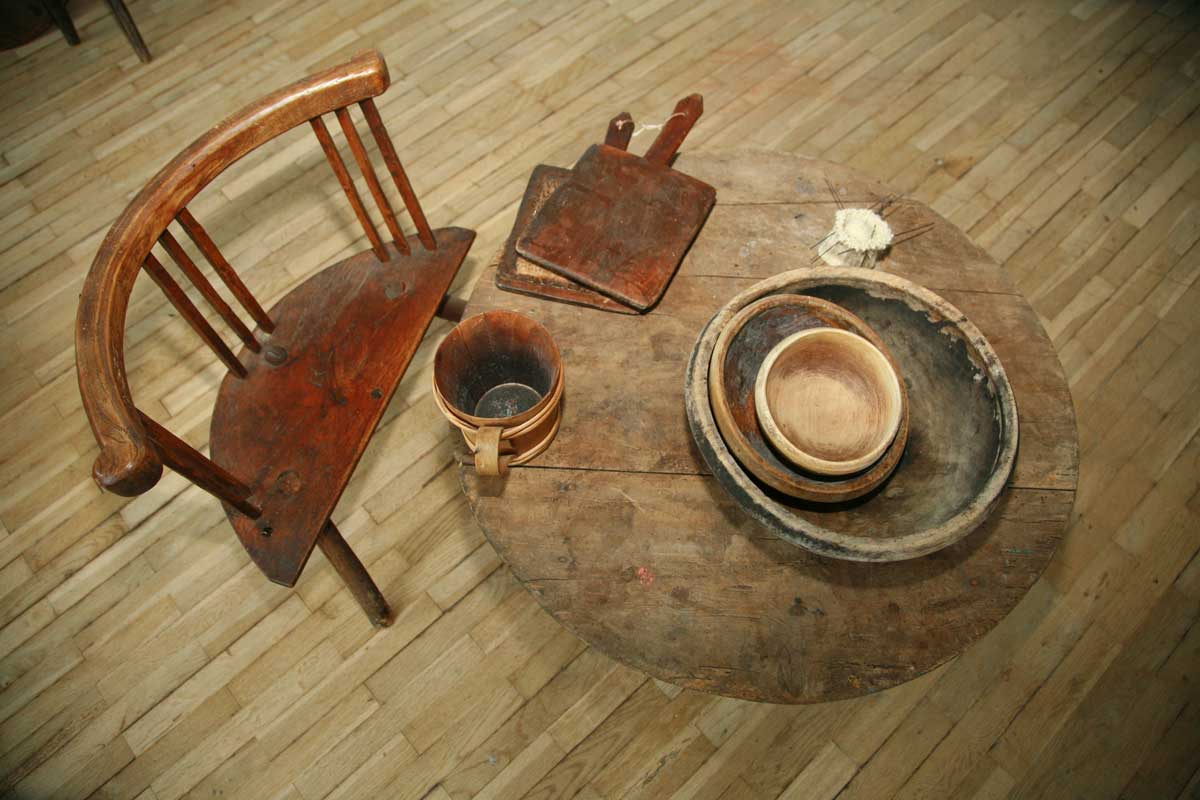
If you want to know more about traditional everyday life of Trilj region inhabitants from late 19th and early 20th century, a real treat will be its ethnographic collection!

SIKIRICA GALLERY IN ITS FUNDUS HAS OVER 500 WORKS. Author Stipe Sikirica has always been especially close to Alka. The gallery is located in Alka courtyard. .

It bears the name of academic sculptor who donated his entire work to Sinj town. Sikirica is a sculptor of Sinj, the Cetina region and Alka. His public monuments are centres of town's public life.

Apart from public sculpture of the horse-rider on Alka's runway, Sikirica is also an author of a fountain On the Spring and doors of church of Our Miraculous Lady of Sinj.

GALIOTOVIĆ GALLERY IS A CULTURAL CENTRE OF Sinj people and their guests. It was opened in August 1999. Tt bears the name of its donator Iva Galiotović, who donated her life savings for its building. In the gallery there have been over 50 exhibitions so far. Great names of Croatian art had their exhibitions there, same as numerous Sinj artists. Galiotović gallery is also a place for classical music concerts, various workshops ad gatherings. It is located in three-story building on Alka runway.

ARCHAEOLOGICAL COLLECTION OF FRANCISCAN MONASTERY IS ONE OF THE OLDEST AND WORTHIEST IN CROATIA. THE REASON FOR ITS FOUNDING WAS A FACT THAT IN Sinj and its region many archaeological monuments were discovered. Objects in this collection do not come from systematic excavations but are mostly found by chance thanks to hardworking monks and people's willingness to preserve historical monuments. It is most famous for findings from archaeological site Aequuma near Sinj, today's village Čitluk.

DO NOT FORGET CULTURAL TREASURES – IN THE OPEN! Although museums are a true delicacy for culture enthusiasts, it would be a shame to visit the Cetina region and not to see other worthy monuments of cultural heritage that are like museums in the open!

Get inspired and look for sculpture Newlyweds, statue of St. Michael, a monument to the Cetina river, Trilj's Old bridge…or some incredible examples of sacral heritage, like impressive church of St. Spas near the Cetina spring – it is not only one of the most significant pre-Romanesque buildings in Croatia, but the one that takes a special place in European pre-Romanesque period!
Want to find out more? Visit: www.cetinska-krajina.hr
The project “Sinj u sridu” was co-financed by the European Union from the European Regional Development Fund and the Operational Program Competitiveness and Cohesion.
The content of this article is responsibility of the RERA public institution for the coordination and development of Split-Dalmatia County, and doesn’t reflects the position of the European Union and / or the Managing Authority.

Photo: TB Trilj, TB Sinj, TB Vrlika, Adventure Dalmatia

The newly-renovated Palace Elisabeth Hotel on Hvar - the first five-star hotel on the island - officially opens
The history of the oldest Hvar hotel and Empress Sisi were the
inspiration, motive and inspiration behind the hotel's grand opening. The hotel
has been rebuilt and redesigned with a new face and raised the quality scale
that guests expect when on Hvar.
The opening ceremony of the newly renovated Palace Elisabeth
Hotel was held on Hvar on Saturday, September the 21st, 2019.

The first 5 star hotel
on Hvar
As one of the most beautiful buildings in this area, in
addition to the city Loggia, the Palace Elisabeth Hotel is considered one of
the symbols of the city of Hvar. It consists of 45 luxury rooms and suites of a
larger size, an indoor pool, a luxury spa and two outdoor terraces.

The hotel exudes elegance and promotes all the best of the
city, it has always been a favourite meeting place of Hvar locals and guests.
Therefore, a visit to the city of Hvar is not complete unless you have a cup of
coffee on the terrace of the Palace Elisabeth Hotel, because there are few
places where you can enjoy such a beautiful view of Hvar's historic centre, the
market, the waterfront, the Arsenal, the Pakleni islands and the city’s port.
The hotel was opened with the attention of the social elite and the world’s media
The opening ceremony was dealt with by Marie Vitek, the wife of
Radovan Vitek, the owner of Sunčani Hvar.
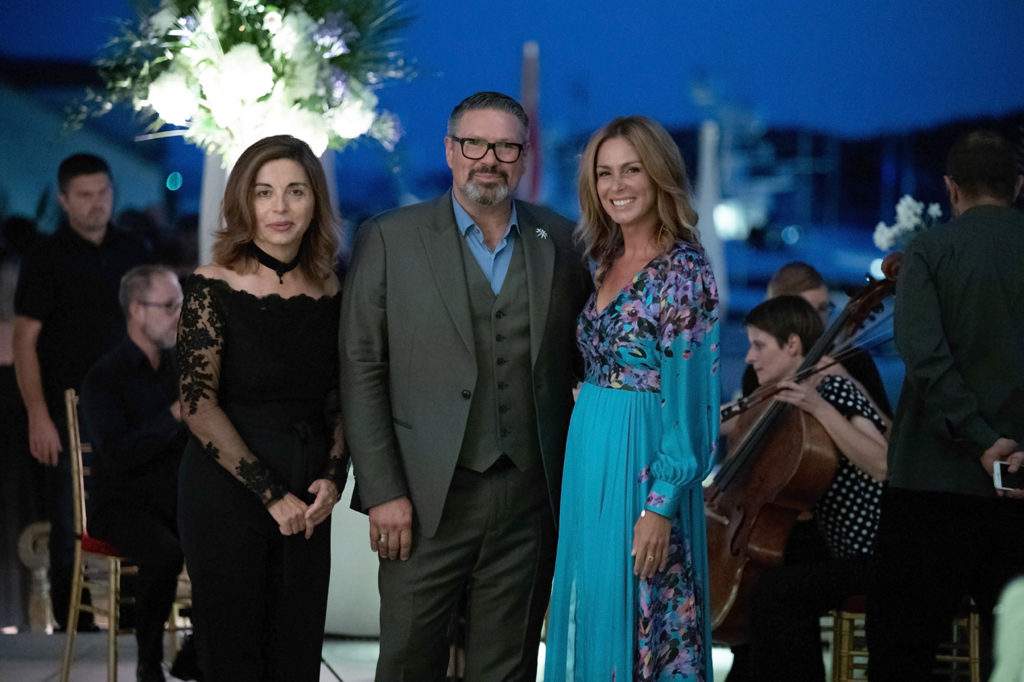
Speeches were delivered by Gordana Tomičić, CEO of Sunčani Hvar, Tourism Minister Gari Cappelli and Martin Nemeček, CEO of the CPI Group.
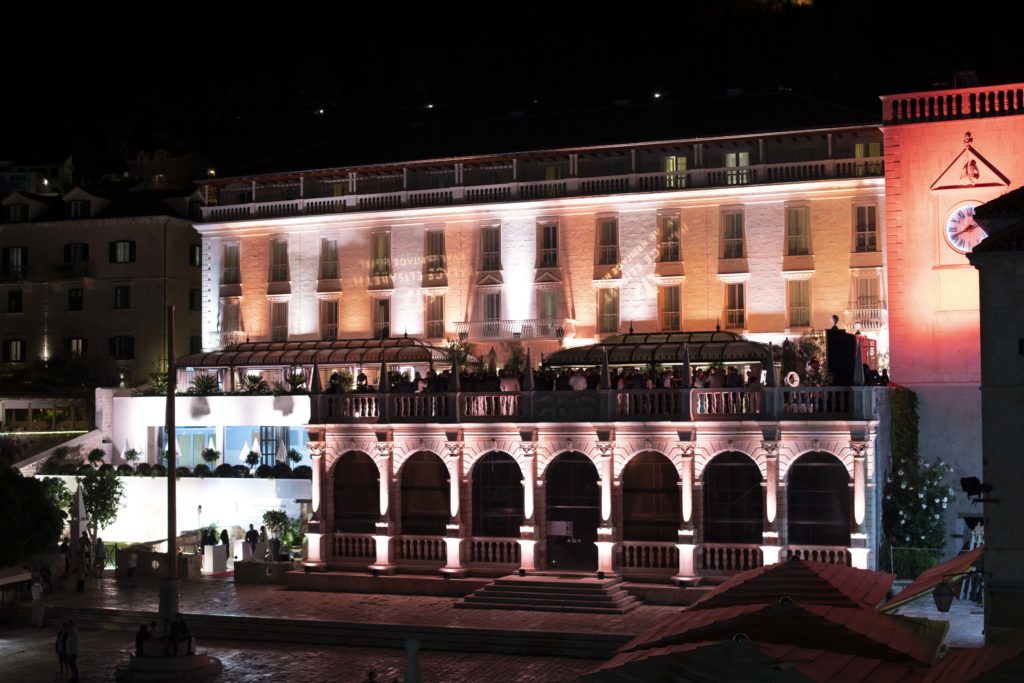
"The opening of the Palace Elisabeth Hotel further elevates the existing offer [of Hvar] to a higher level and at the same time contributes to the attractiveness of a destination that offers high quality holidays in all segments," said Management Board President Gordana Tomičić.
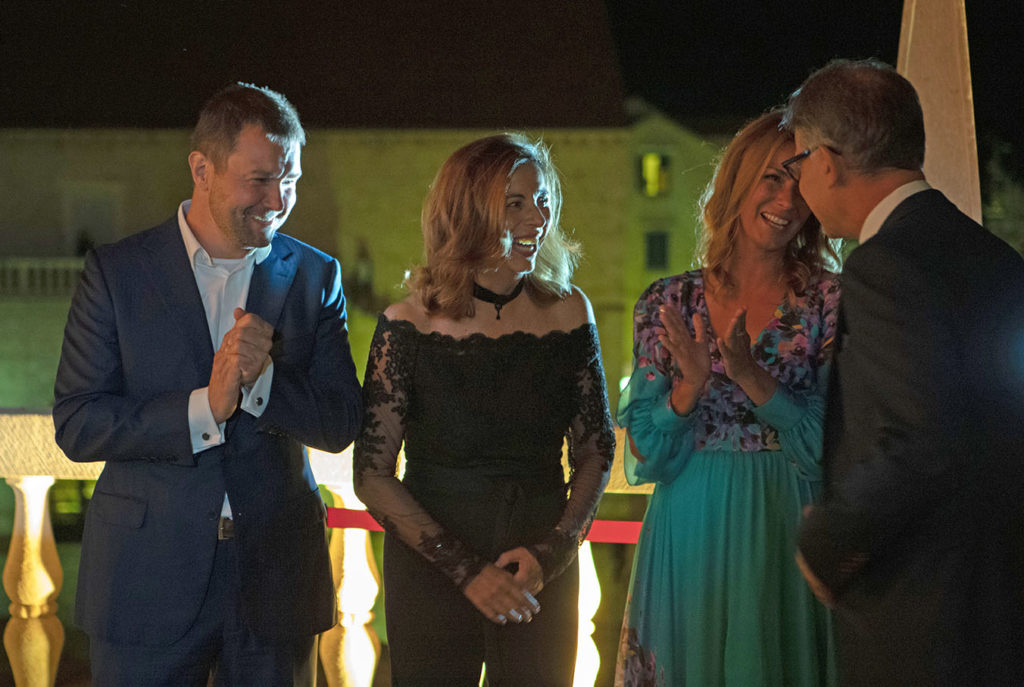
PThe history of the Palace Elisabeth Hotel dates back to the 13th century. In 1898, the hotel was rebuilt and named Spa Hotel Empress Elisabeth, after the Austrian Empress Sisi who was a generous sponsor of its construction.
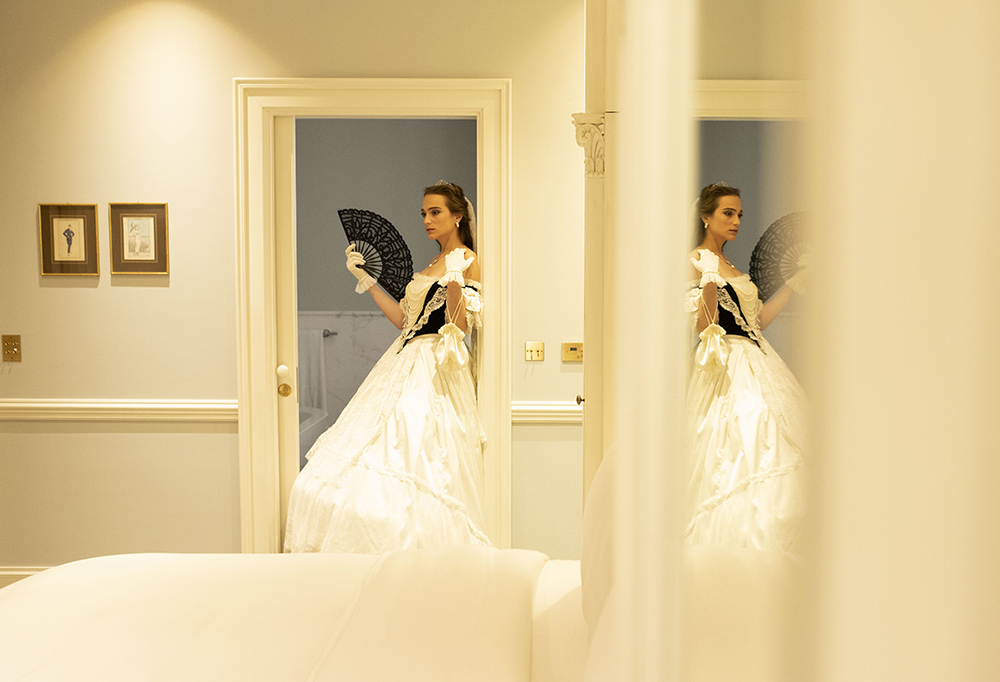
The history of this oldest Hvar hotel and the Empress Sisi were the inspiration, motive and inspiration of the opening ceremony of the hotel.
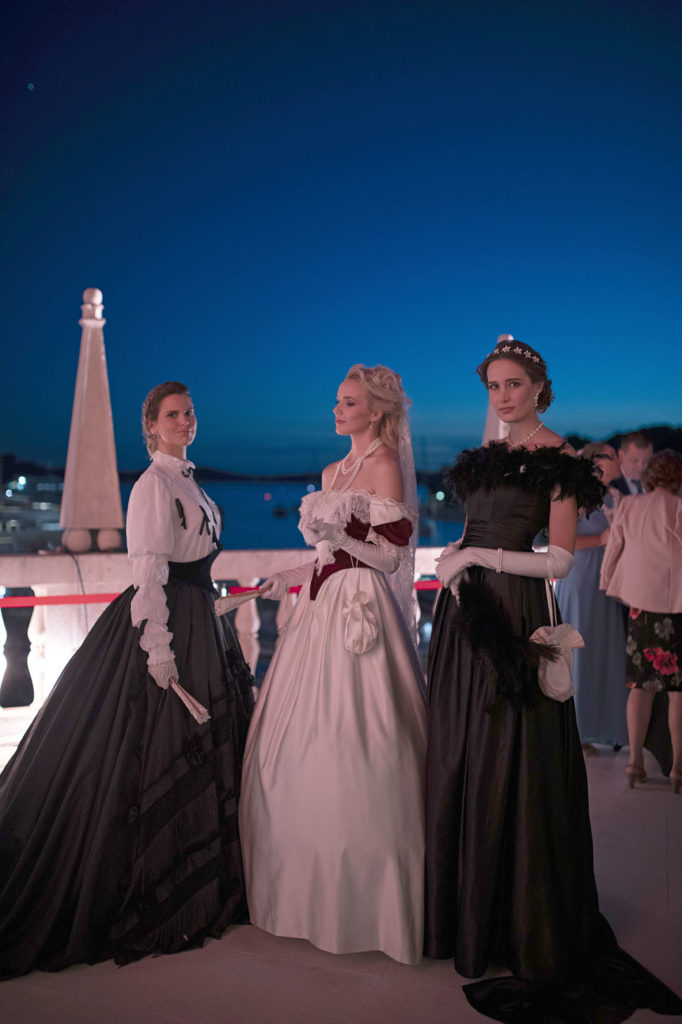
Thanks to an investment from the Sunčani Hvar tourist group, of HRK 100 million, Palace Elisabeth has become the first five-star hotel on the island, and a member of the elite hotel association of luxury hotels, ‘’The Leading Hotels of the World’’.

To be more specific, there was an investment of €300,000 per room, which is one of the largest investments in the Croatian hotel industry.
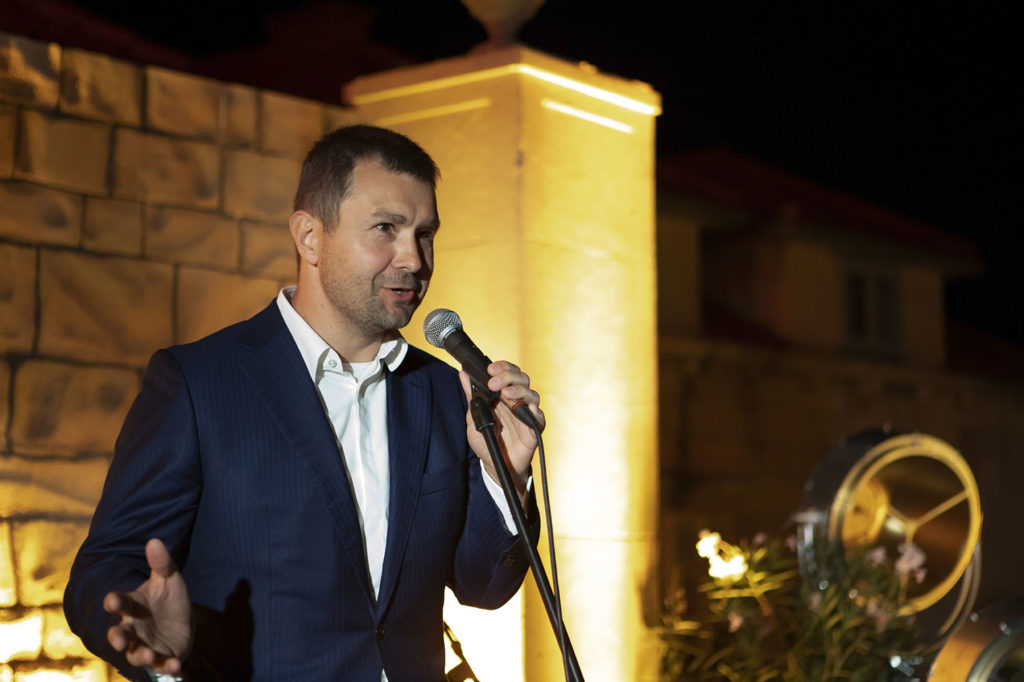
"Of all the facilities we have, the Palace Elisabeth Hotel is special. This was not an easy project to realise as it had to be handled with special care given its cultural heritage. We plan to invest in other Sunčani Hvar facilities,’’ said Martin Nemeček, the CEO of the CPI Group.

In addition to local journalists, many international journalists attended the opening ceremony. There were reporters from the New York Times, Robb Report, Vogue, National Geographic, Conde Nast Traveler and Architectural Digest, who enthusiastically followed the event.
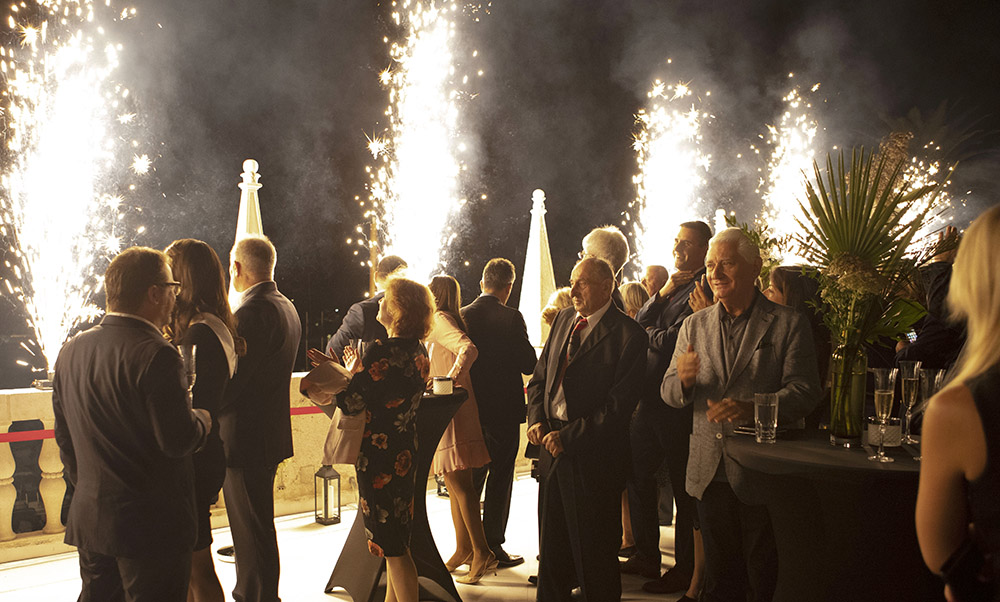
Along with a number of distinguished guests, the opening ceremony was attended by Minister of Tourism, Gari Cappelli, State Secretary of the Ministry of Tourism, Tonči Glavina, Director of the Tourist Board of Split-Dalmatia County, Joško Stella, and the Mayor of the City of Hvar, Rikardo Novak.
More: www.suncanihvar.com
5 reasons to explore Hvar island - the one of the most popular nautical destinations in Croatia!
The island of Hvar, our sunniest island is one of the most exclusive destinations for nautical tourism in Croatia, and islands ports are usually full of elegant and luxurious yachts
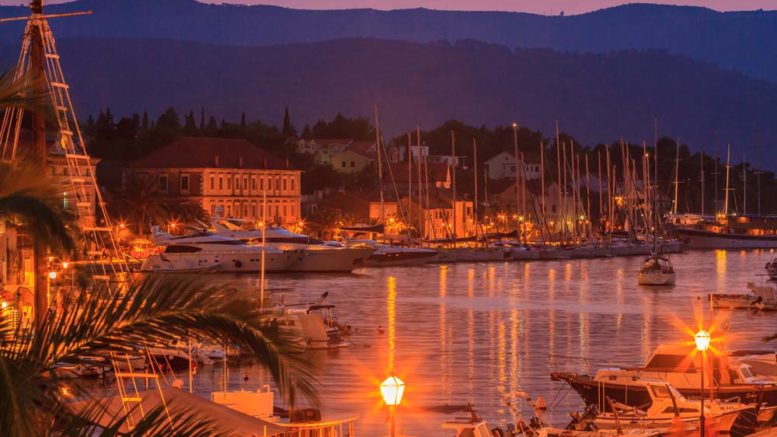
- Late summer and early autumn is the best time for sailing - the time that we feel more and more air, the darkness falls more quickly, the sun continues to shine during the day, but the nights are much fresher and slowly starting to spread from the households are the tempting scents of the winter that is in the making!

The experienced sea wolves know very well that this, alongside late spring, is the most enjoyable time for their favourite activity - sailing!
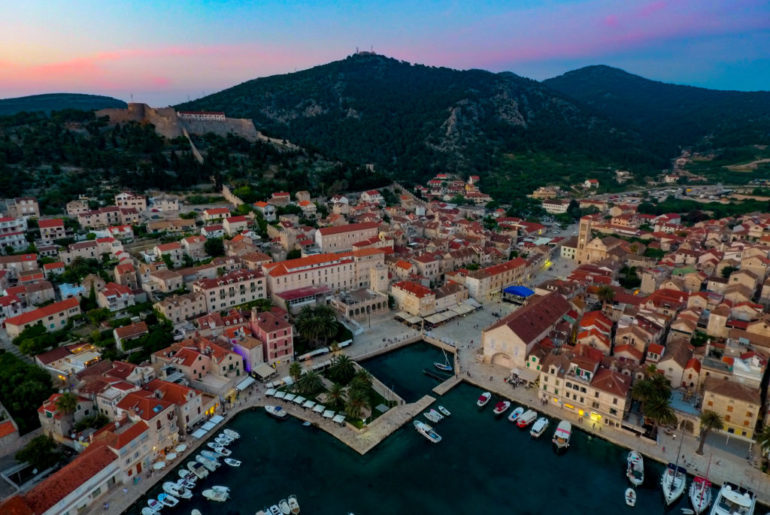
The temperatures are milder, the sea is calm and the winds are more favourable.

In addition to that, if you've been thinking about going somewhere out there in the open sea, know that the right time is - right now. And the right place, you wonder? Of course, our sunniest island - Hvar! The island of beautiful beaches, fancy restaurants and quiet coves, is one of the most popular nautical destinations in Croatia.
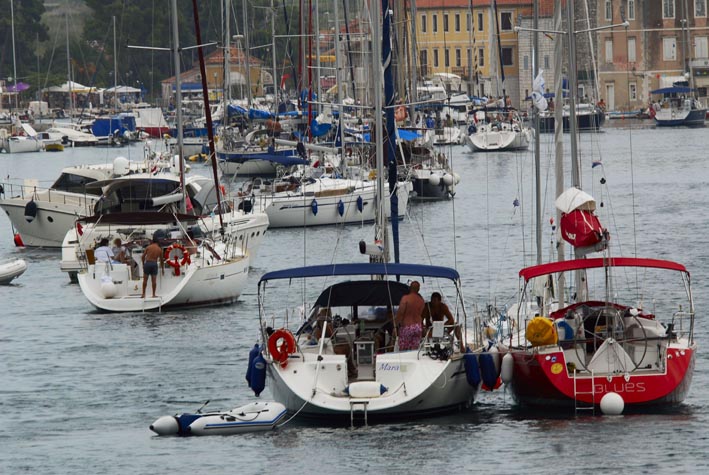
2. Explore the bay which enjoys - a cultural status! The way to do it is to begin from Stari Grad, because it is probably the first place in which you would have onced sailed onto the island, 2,400 years ago!
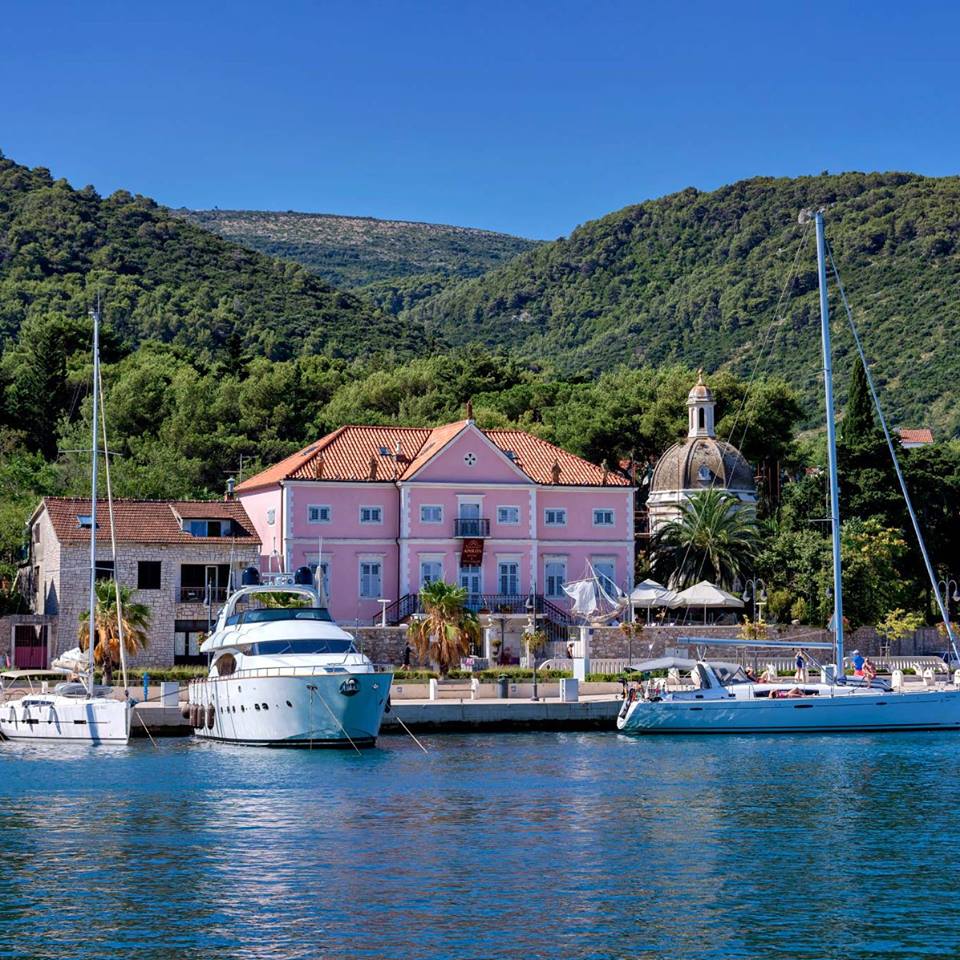
There, you’ll enjoy one of the safest natural bays on the Adriatic, which is specific in that it protects against all winds except the steady and uniform Maestral which is actually propulsion to fuel for your sails!
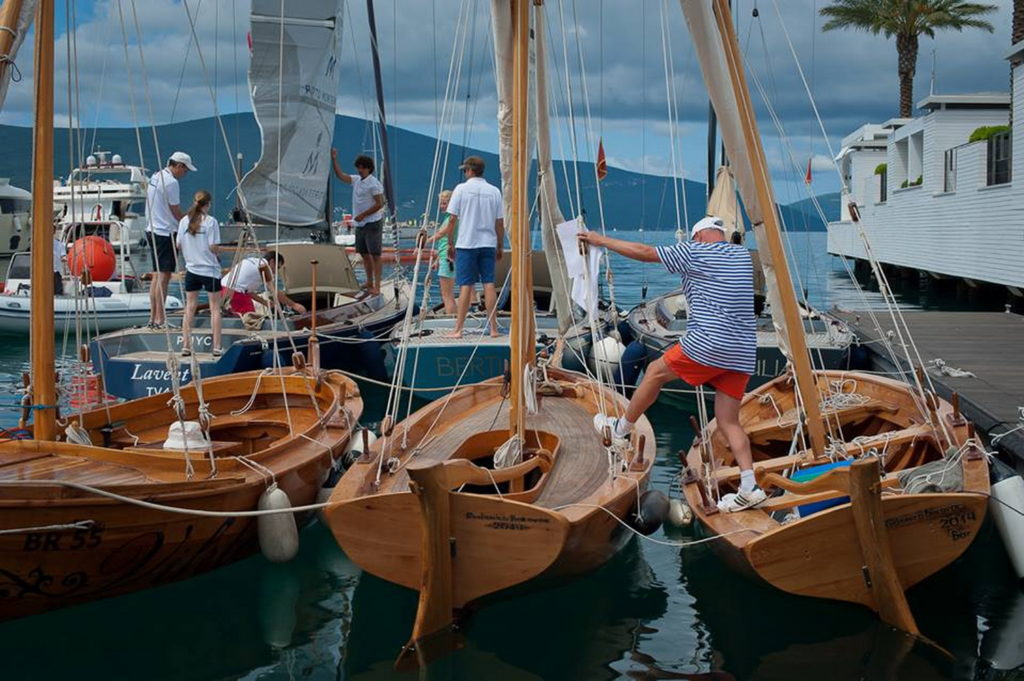
Explore the largest bay on the northern side - a port called Tiha, or if you fancy something different, the spacious and deep Zavala, and in the south, enjoy the smaller and more intimate bays, such as Gračišće and Maslinica. It's a great idea to anchor in Stari Grad itself, and enjoy the pleasure of sightseeing and looking at this picturesque beauty.
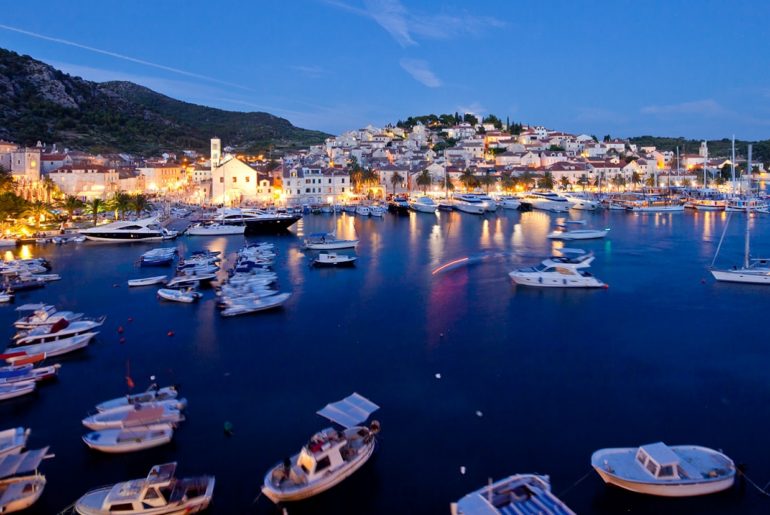
3. Take a peak at its beauty which won the hearts of world’s elite. How does a small sandy beach, several great restaurants, an imaginatively decorated lounge bar, and a promenade with exotic herbs brought here from across the planet sound to you?

This is exactly the magical backdrop of the nautical adventure which awaits you in Vinogradišće bay, on the southern coast of St. Clement, the largest and the most famous of the Pakleni islands. Just in front of Hvar Town and Stari Grad, the Pakleni islands are a real Mecca for boaters, and the deeply indented Vinogradišće cove is one of the most popular and one of the best anchorages in the entire Hvar area.

4. Navigation and a gastro experience - They go together well! Experienced sailors know one thing - there is no better spice to their nautical adventures than delicious home-made food!
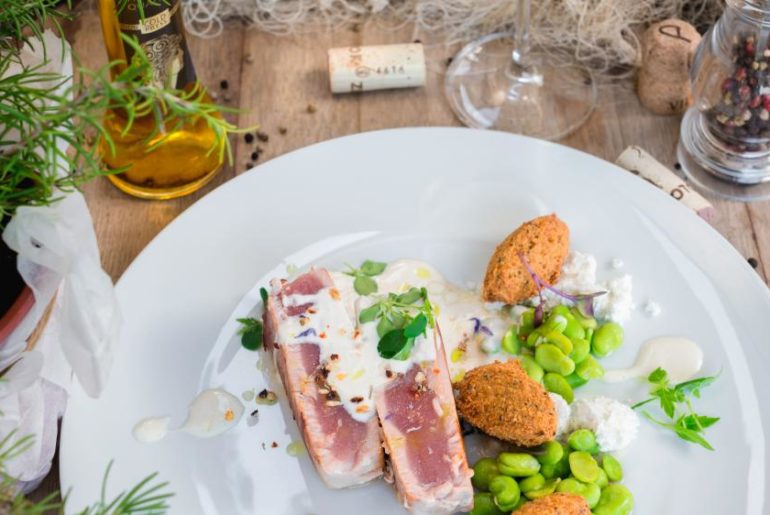
One of the most legitimate reasons for the wild popularity of sailing in precisely the waters of Hvar, is that the boater's plates end up with the most delicious seafood on them!
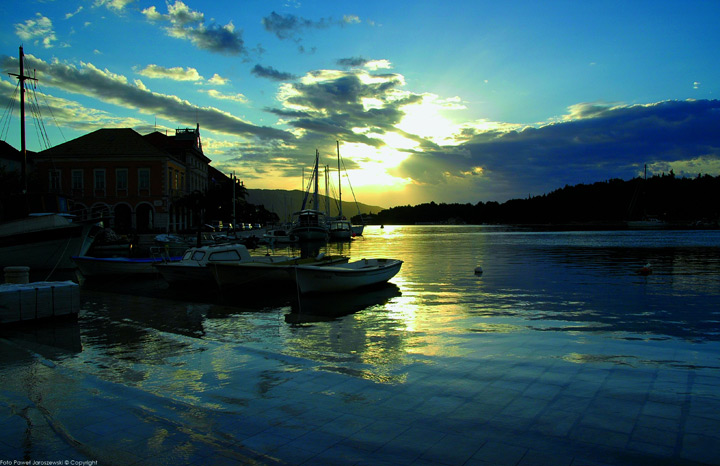
5. Hvar is known as the island of wine. Moreover, Hvar boaters are in their own sort of symbiosis with great restaurants, which, in addition to a tasty menu, also offer a secure berth for their vessels. If you ask them, it would be a real sin not to spice up the voyage with some grilled fish and a glass of quality local wine!

You will easily be convinced of this - it’s enough to taste the rhapsody of the flavours of the best species of white fish - such as sea bream, dentex or sea bass, or delicious snacks like fresh blue fish rounded off with a ruby red Plavac mali from Hvar, or a devilish, elegant Bogdanuša.
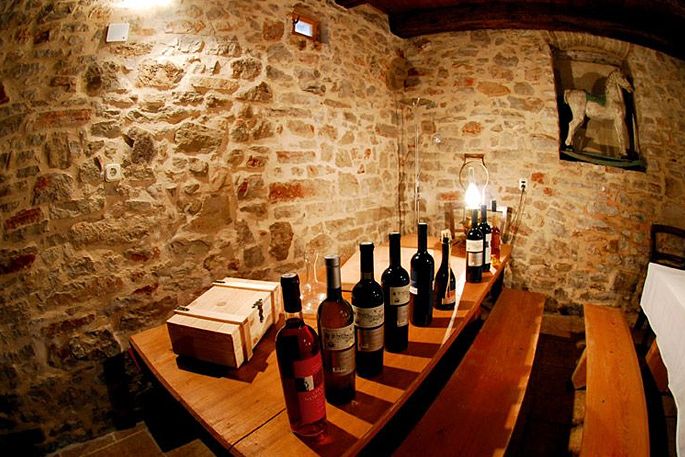
More: www.dalmatia.hr
Photo: www.dalmatia.hr, croatia.hr, archive of tourist boards of island Hvar, Pointers Travel

Explore Central Dalmatia top places for diving! From the perspective of a lover of the sea’s depths
If you were to ask any experienced diver if they’d recommend
that you dive in the central Dalmatian part of the Adriatic sea, the answer
would be categorical and enthusiastic - yes!
The reasons are not difficult to discern - from the sea with
its exceptional clarity that provides great visibility, excellent diving
positions (which, in addition to rich underwater walls, often include a sunken
ship or two!), and the absence of deadly underwater species.
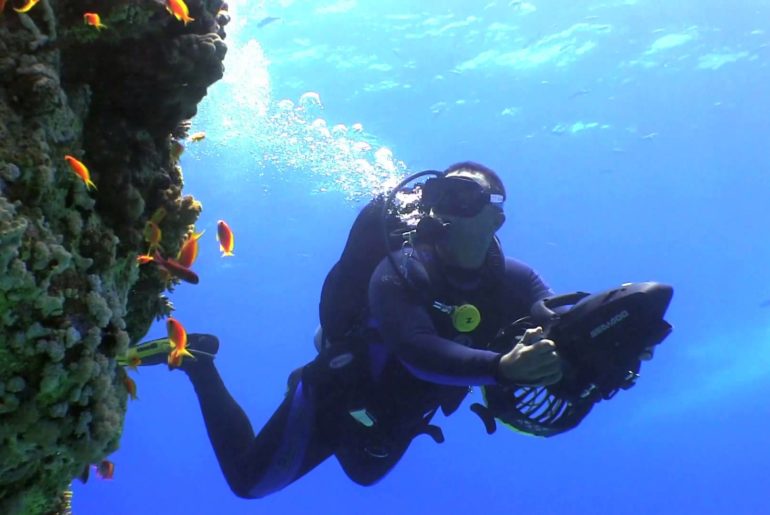
If you are in a diving dilemma, we have prepared three real gems that you cannot go wrong with for you - the islands of Šolta, Brač and Vis!
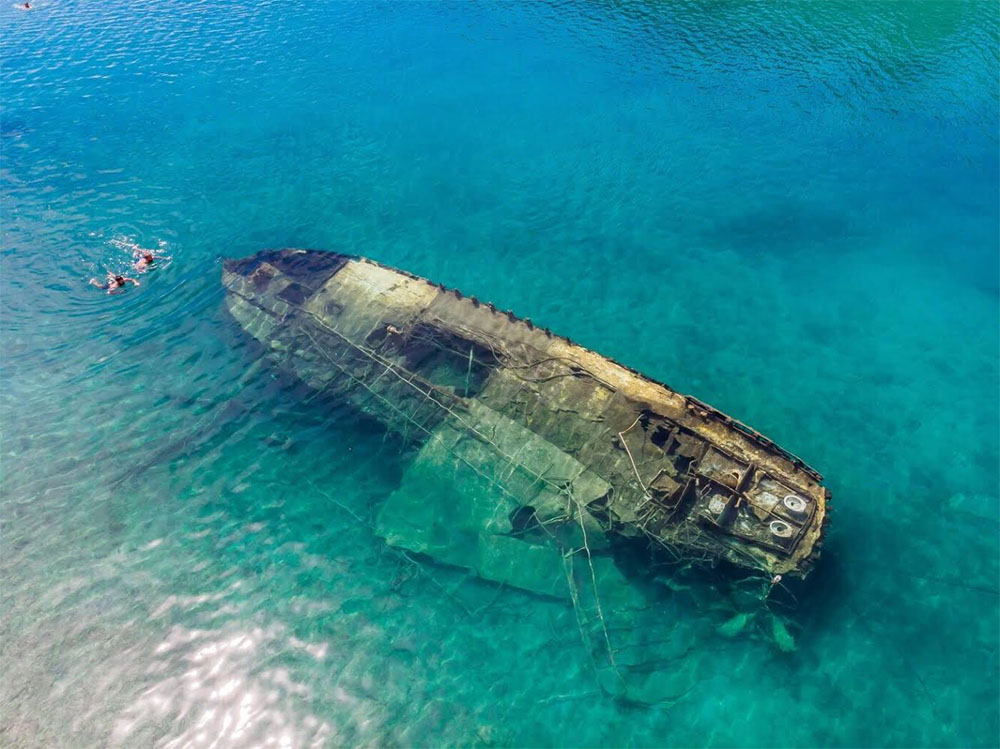
Underwater pyramids, ancient anchors and sunken fishing boats are what awaits you if you decide on Šolta! If you are most attracted to exploring a sunken fishing boat, then you’re in luck - this attraction at a depth of twenty metres is suitable for all diving categories, and you will find it on the northern side of the island of Šolta, near Stomorska at the Pelegrin position.
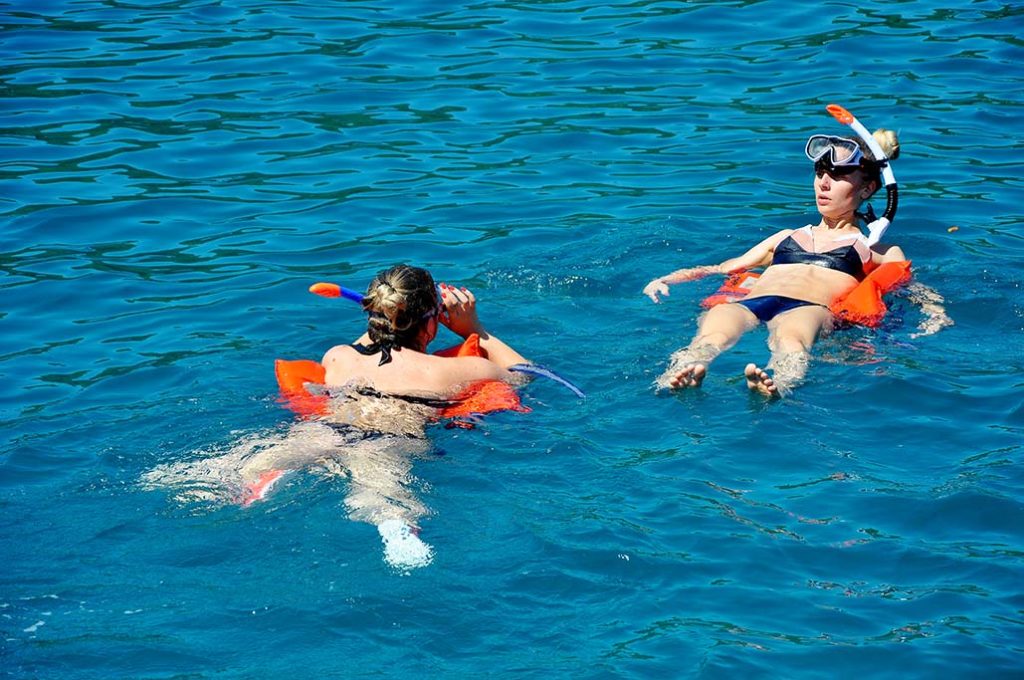
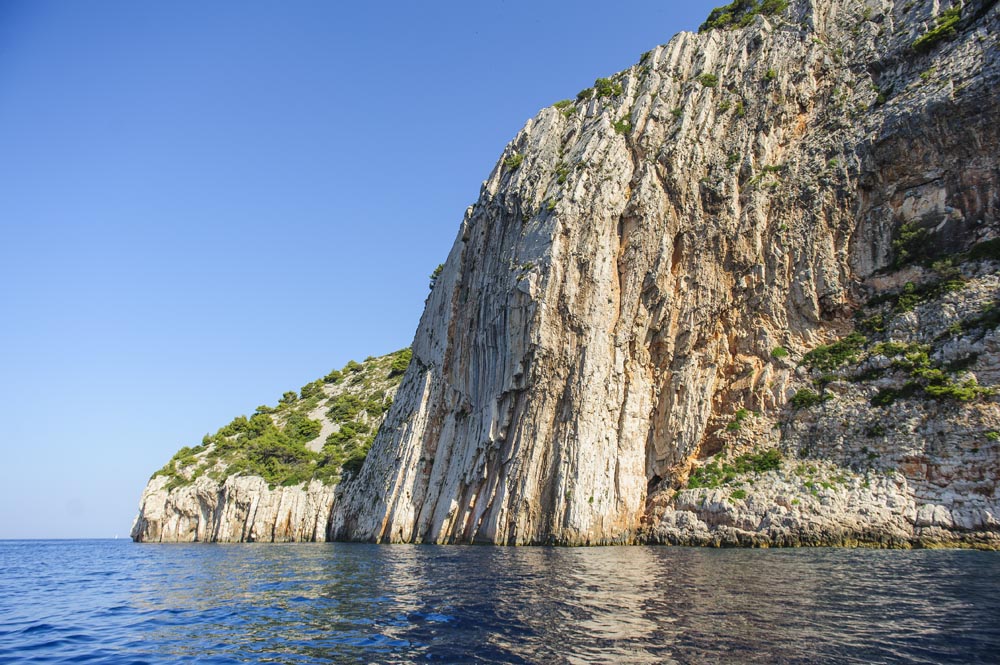
If you don’t want your underwater adventure to go unrecorded, choose the locations suitable for filming - a gallery along the cape of Livka bay with a vertical wall and a cave 35 metres deep, at the bottom of which lies an ancient anchor, or the position of Marie Grota.
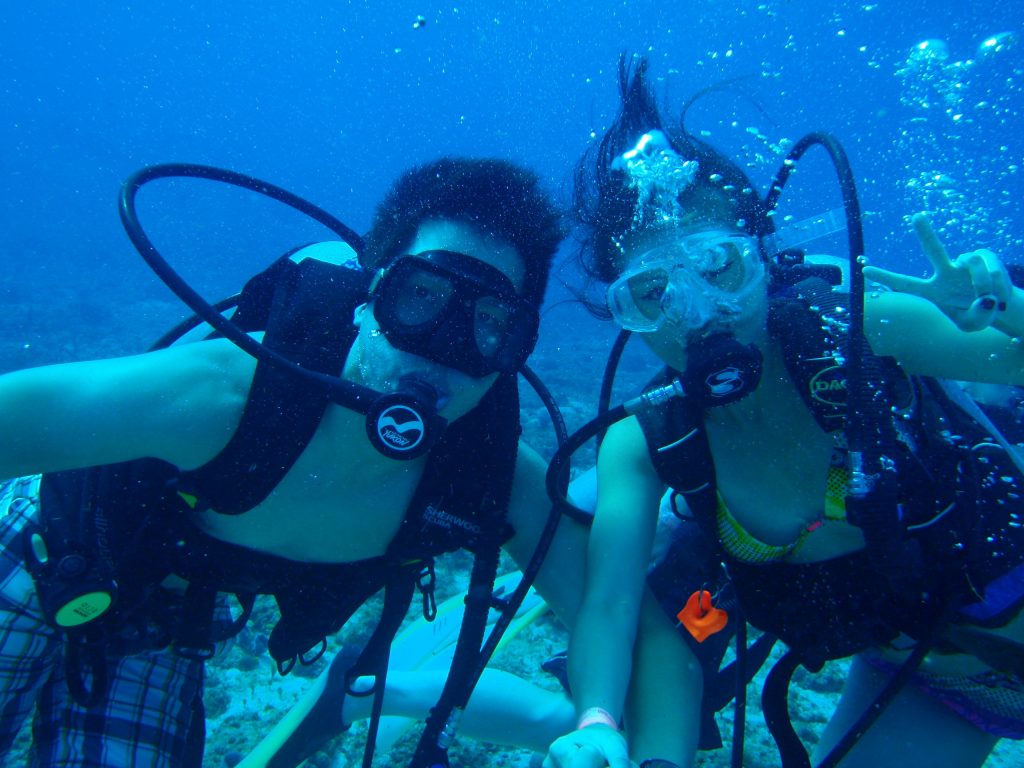
For experienced and advanced divers (and videographers!) we would recommend two true underwater specialities - the Pyramid location in Travna bay will reveal fascinating underwater peaks which look uncannily like mysterious buildings, and the Sipuja location in Stracinska bay is an underwater wall full of holes, crevices, canyons and gorgonia, which is also home to numerous fish species!


Geological diversity and large amberjacks which swim with the divers - these are the attractions you will come across if you decide to dive on our biggest island, Brač! Brač is mystical and interesting, just like its diving sites, and one of the most interesting is Ptičji rat near the town of Povlja.
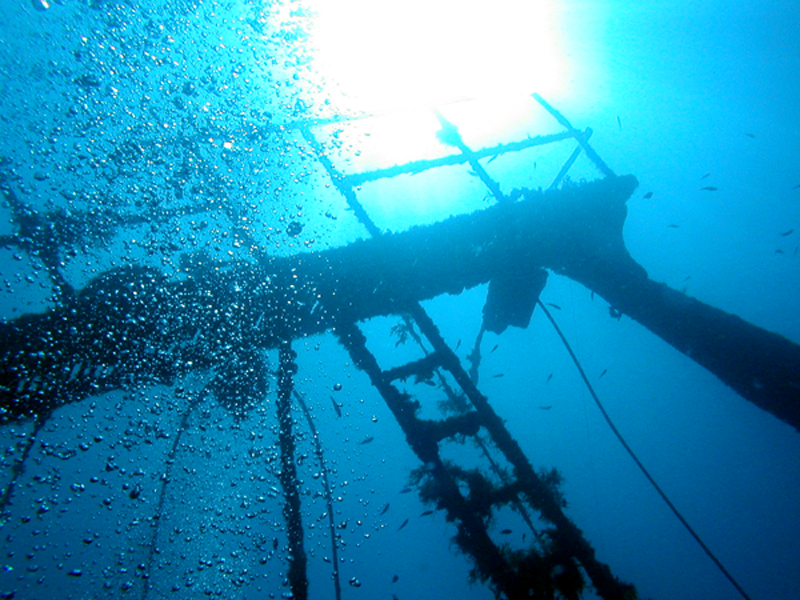
It is located between the steep slopes of Biokovo and a place called Vrulja where there are underwater caves and channels from which rivers flow.
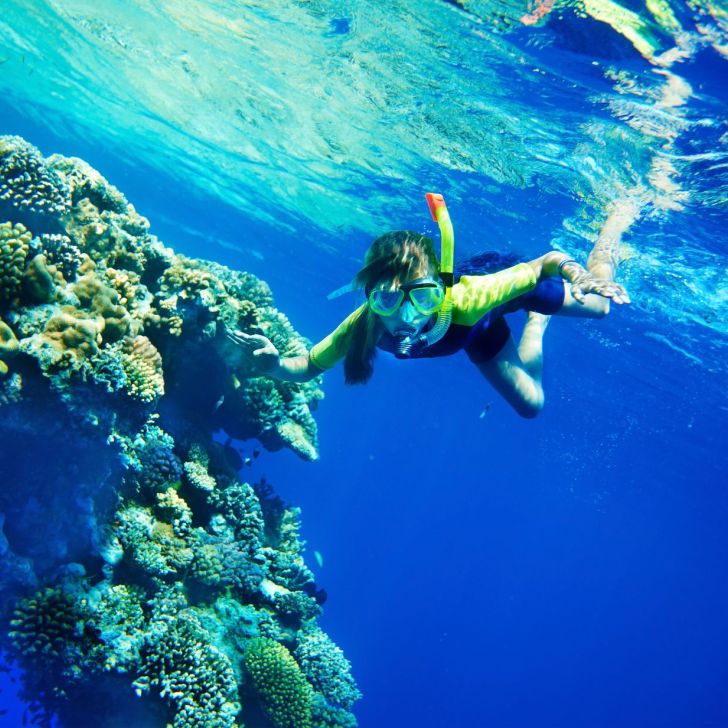
For everyone who wants to dive in an interesting company - there’s the amberjack fish! - You can do so in a cave in the "Lucice" harbour on the southern side of the island of Brač, and for more experienced divers, we recommend diving in the cabin part of the sunken ship "Meje".
Due to the depth at which the boat is located (37 metres),
technical diving with gas mixtures is recommended, and if you venture into this
endeavor, this position east of the little island of Mrduja with a
30-metre-long ship lying on the sand will surely delight you!

Our most mysterious island, Vis, a former military base, looks like a breathtaking location on a James Bond film, no less interesting is its underwater world!

There are indescribably exciting locations waiting for you with even a few sunken ships - from the merchant ship "Teti" in a location suitable for all diving categories (a depth from 14 to 35 metres), which is a common motive for underwater photographers, the Greek cargo ship "Vassilos T" (at a location for more advanced divers and for beginners), the "Brioni" steamboat which is now overgrown with numerous sponges and corals, up to the Ursus tugboat which was sunk by a British submarine in 1941, and even the wreckage of an American fighter jet from the Second World War!
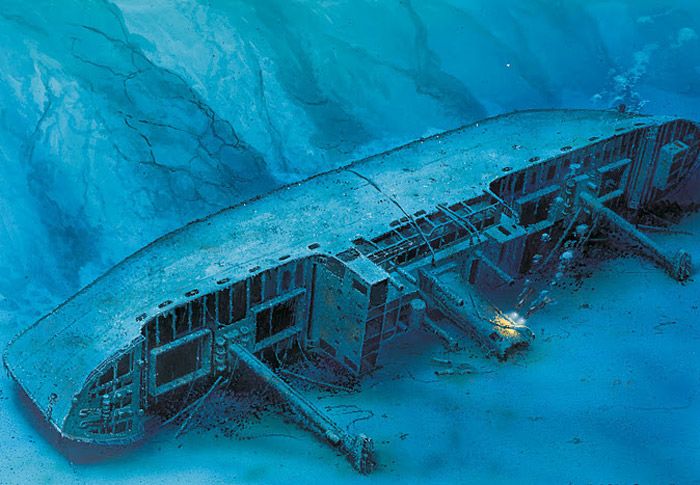
More: www.dalmatia.hr
Photo: www.dalmatia.hr, archive of tourist boards of Split - Dalmatia county


